




















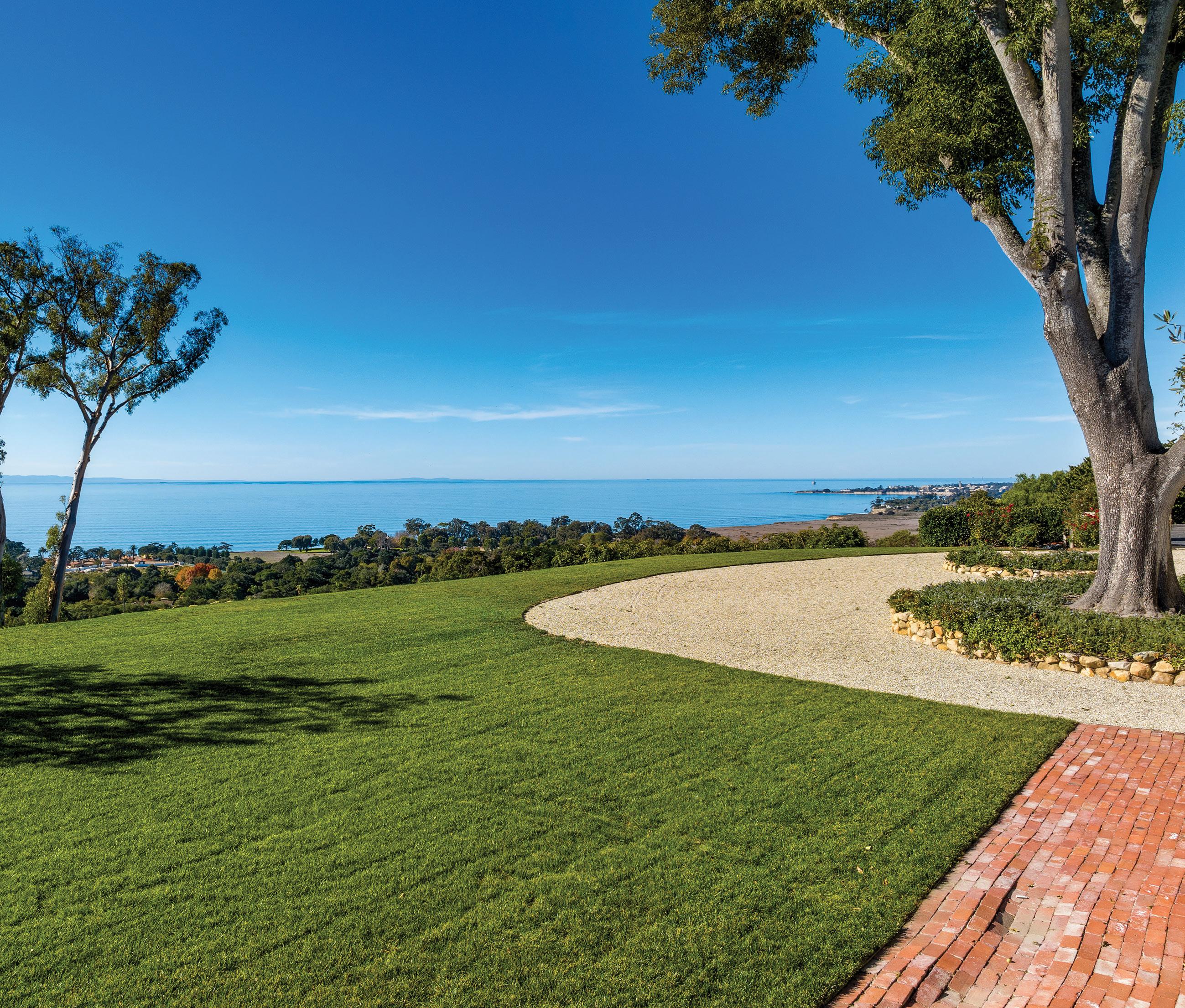





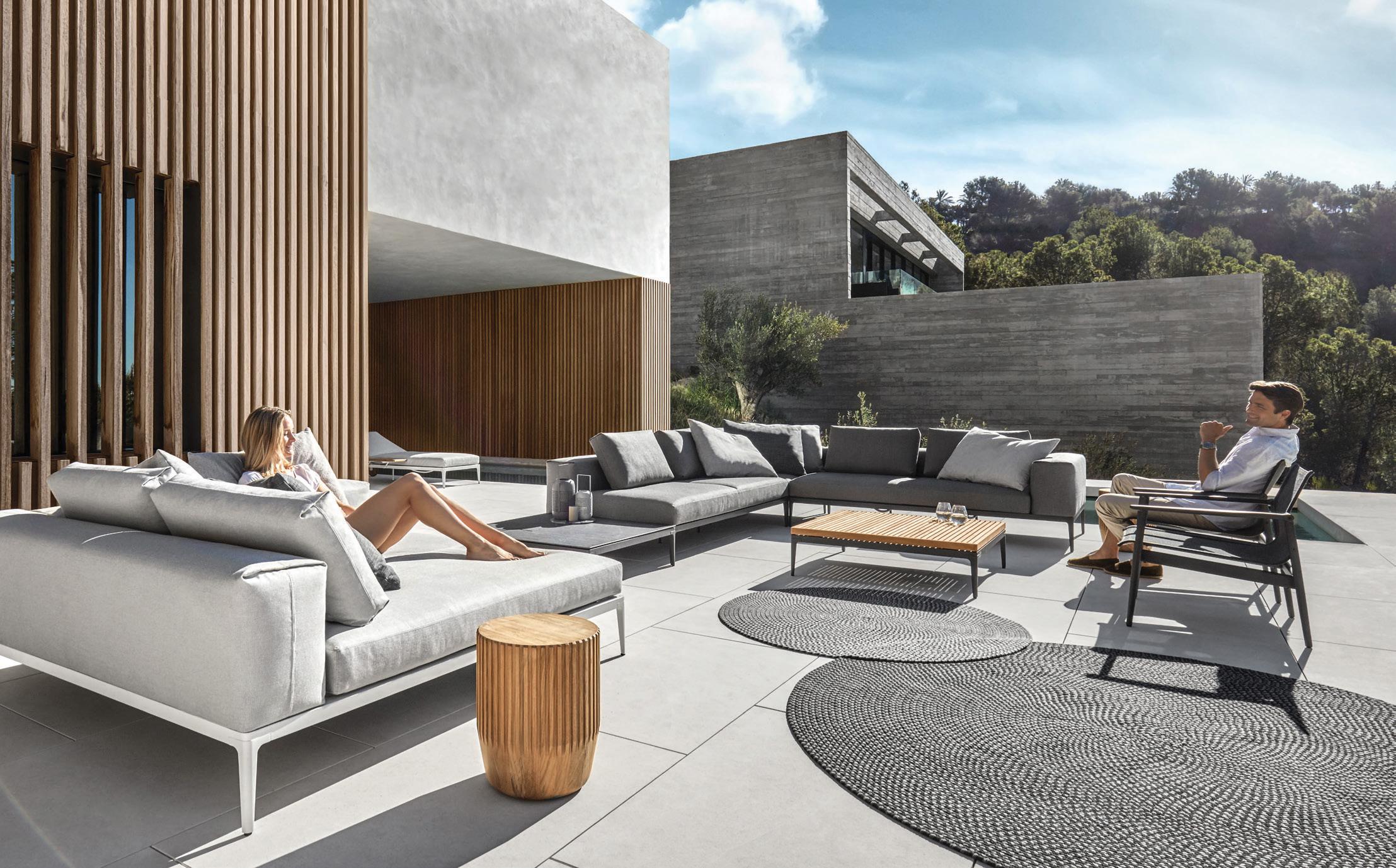

Savor the last warm days of the year in timeless style and comfort. Hayward’s has the largest selection of outdoor furniture and accessories between Los Angeles and San Francisco—in stock for immediate white glove delivery.
7 PARKER WAY, SANTA BARBARA | 805-966-1390 | haywards1890.com
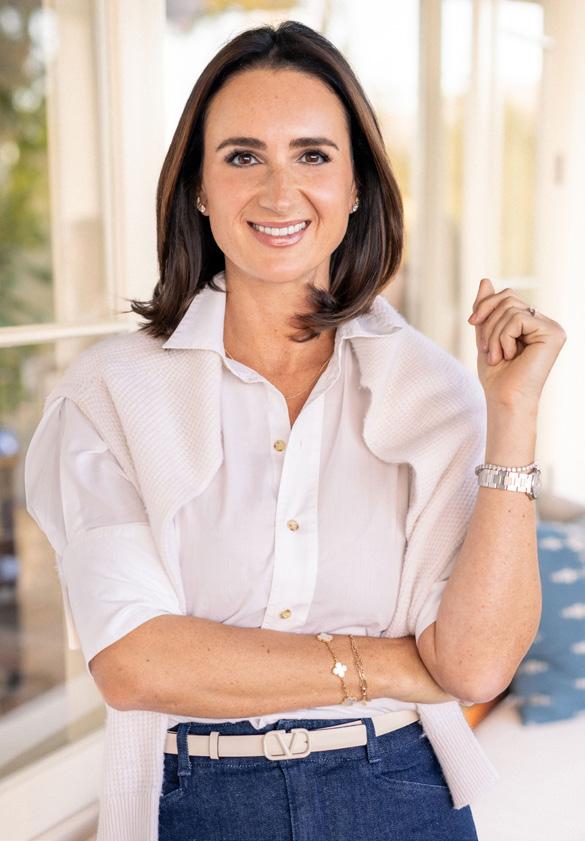
#1 LOCALLY & GLOBALLY small team*
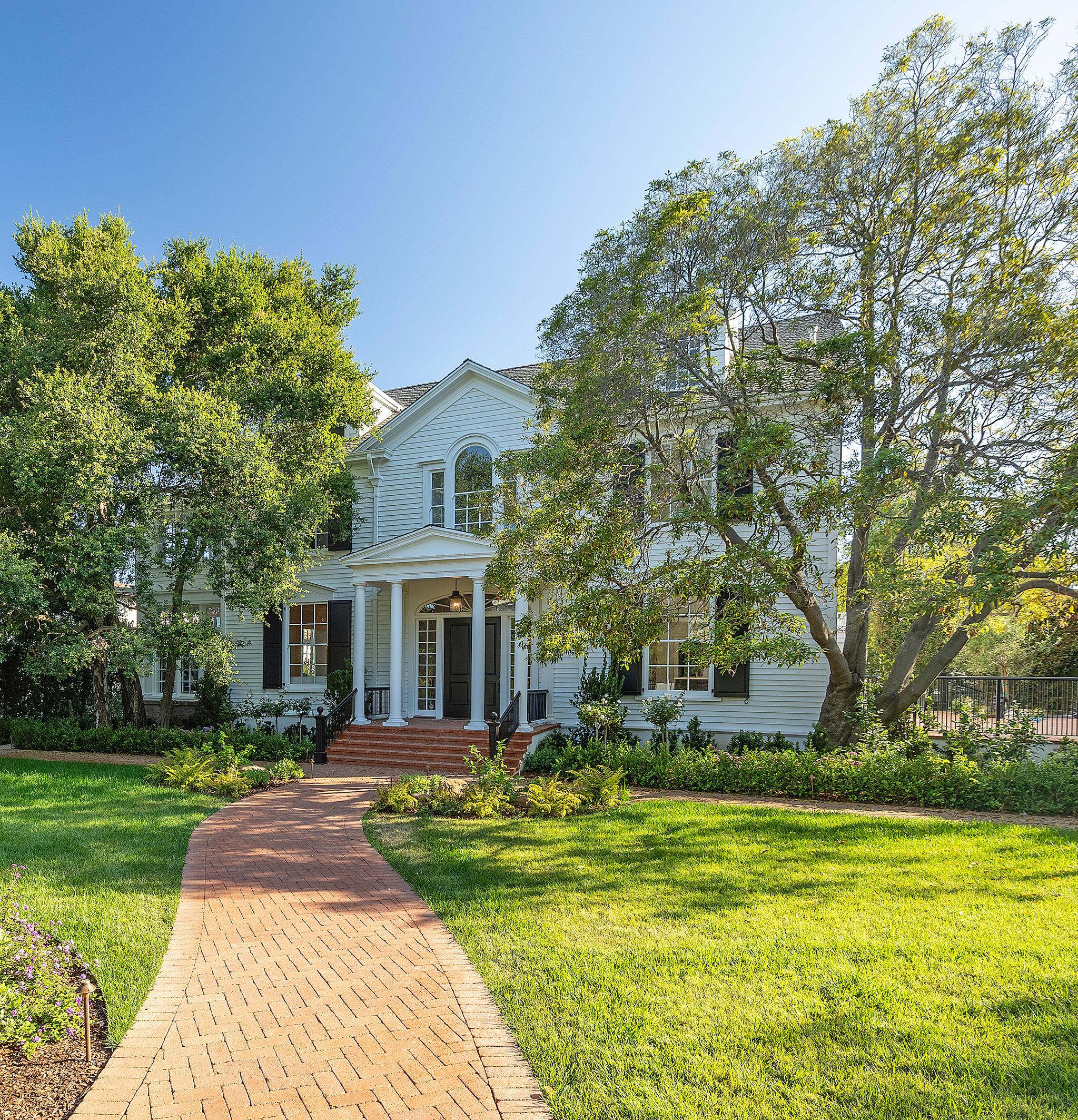


ENCHANTING FRENCH COUNTRY ESTATE
630 STONEHOUSE LN, MONTECITO, CA OFFERED AT $12,795,000
ENCHANTING FRENCH COUNTRY ESTATE
630 STONEHOUSE LN, MONTECITO, CA OFFERED AT $12,795,000


CHARMING MONTECITO FRENCH RETREAT
1473 BONNYMEDE DR, MONTECITO, CA OFFERED AT $8,695,000




SPANISH OASIS WITH VIEWS 7035 GOBERNADOR CANYON RD, CARPINTERIA, CA OFFERED AT $4,350,000
SPANISH OASIS WITH VIEWS 7035 GOBERNADOR CANYON RD, CARPINTERIA, CA OFFERED AT $4,350,000


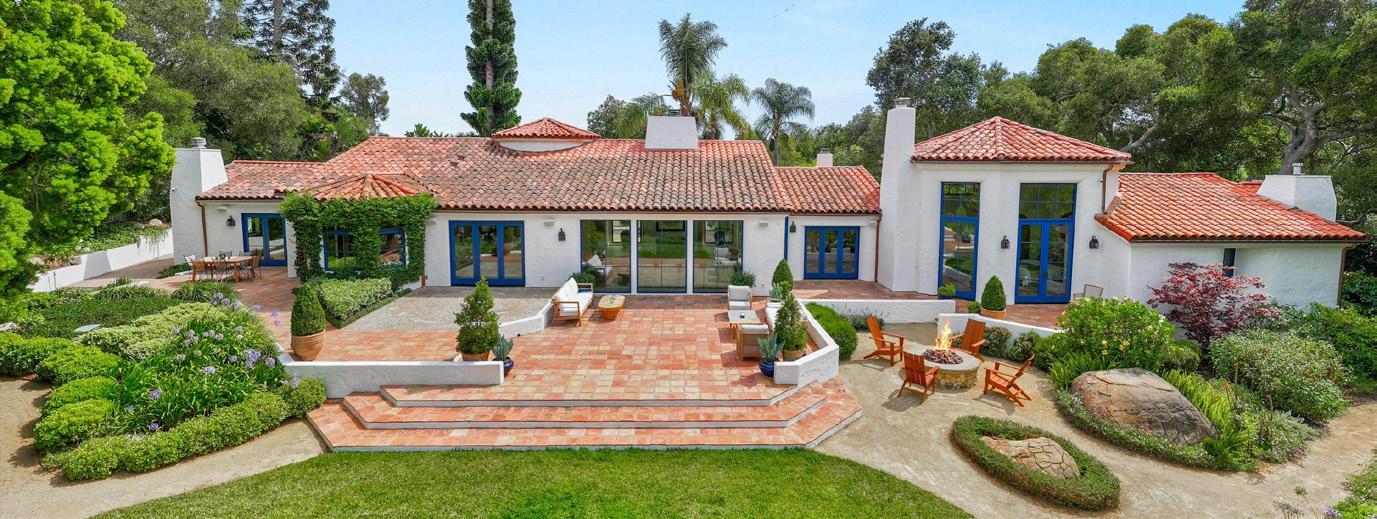























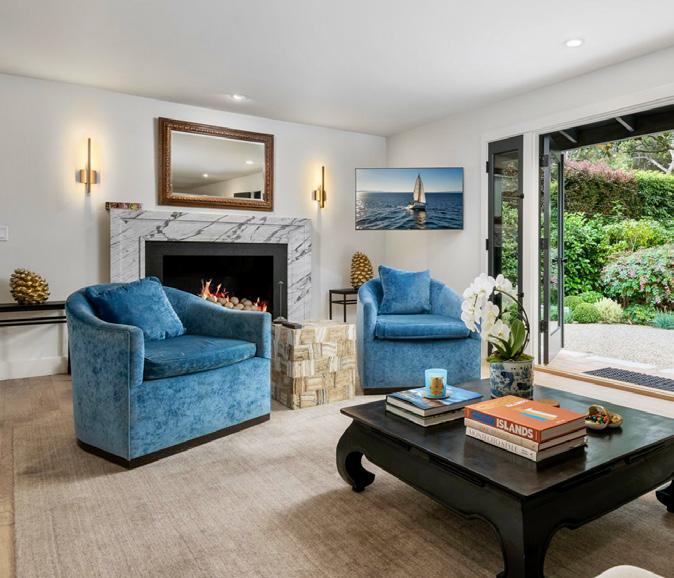
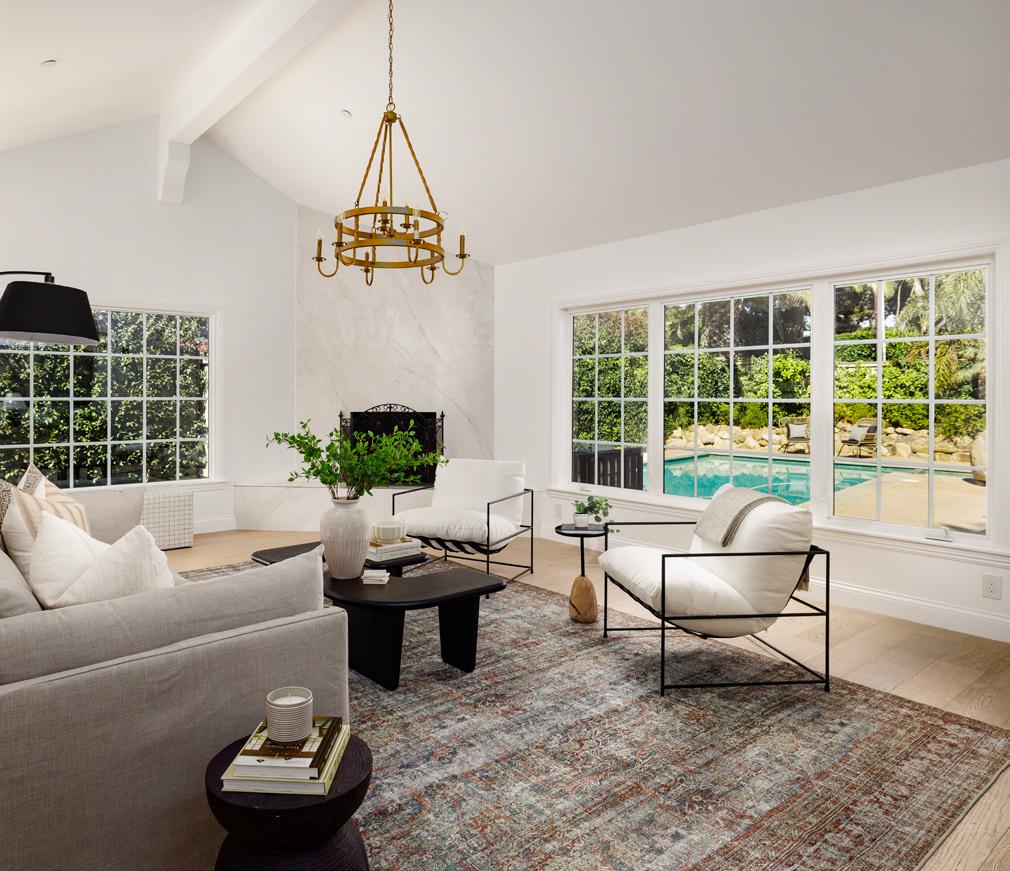

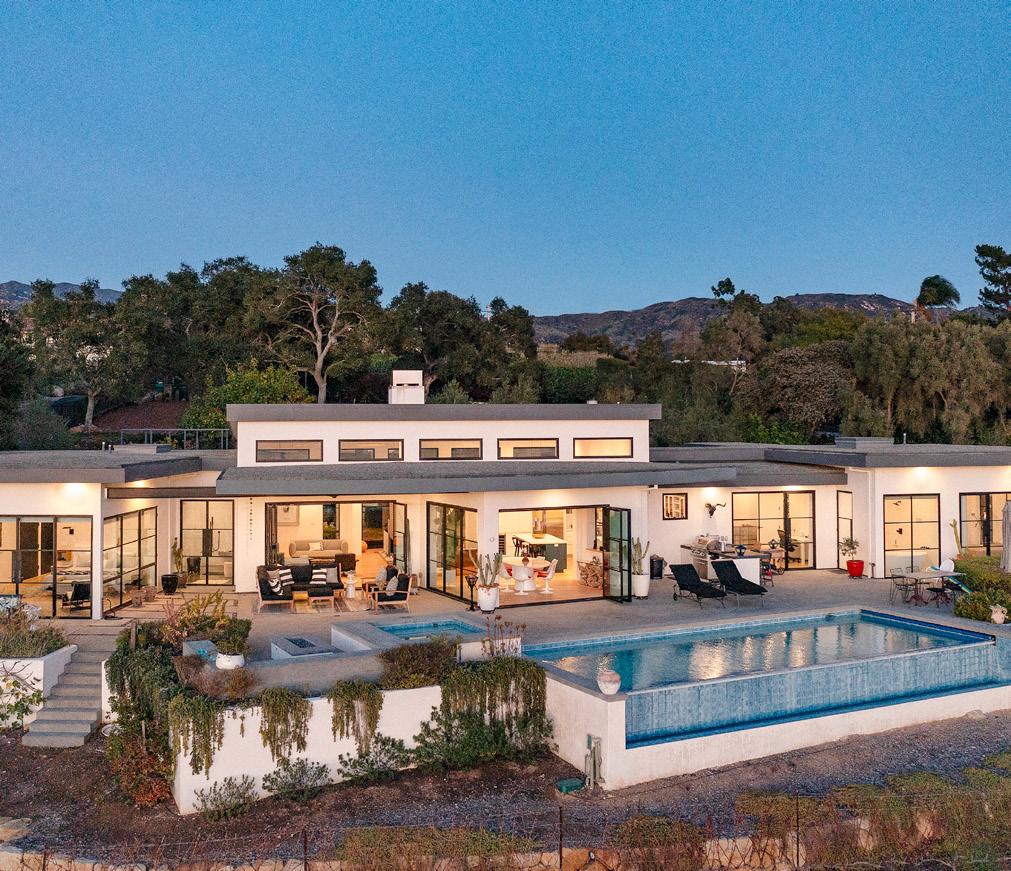







Don Johnston Sutton began his 16 year real estate career in Beverly Hills. Since 2012 Don’s team has represented clients through $2.2 billion in sales across 1,800 transactions. After a decade calling Montecito home, Don Johnston Sutton is bringing his world-class representation – and sphere of influence –to the local real estate market.
Describe your standard Montecito Monday.
DJS: Every morning after coffee and the local news on KSBY, I take a walk around our property on East Mountain Drive with our dog pack, it is a time to reflect and to be grateful. Then, I meet with my San Francisco marketing team to set marketing priorities, discuss new and existing listings, new pitches and industry trends. The Sotheby’s International Realty office, located on Coast Village Road, is always bustling with activity and offers a wealth of insights. Monday is the day to connect with clients and colleagues to start off the week!

Tell us more about your San Francisco Partnership.
DJS: As the financial and technology center of California, San Francisco has provided many investors in the Montecito and Santa Barbara property marketplace. To support clients as they invest in the synergies between these two great markets, the Montecito Luxury Group has partnered with a leading San Francisco luxury real estate marketing team. This partnership offers Central Coast clients the latest insights on the transformational forces impacting the San Francisco real estate market and a premier marketing partner for even greater exposure of their listing.
What is your not-to-be-missed Montecito spot? DJS: My favorite spot is the Rosewood Miramar Beach for drinks, shopping,
relaxing and socializing with friends. Must do; See Arleen at Brunello Cucinelli, drinks at the Manor Bar on Fridays 5:30pm to 7pm and AMA sushi on special occasions!

DON JOHNSTON SUTTON
don.johnston@sothebys.realty mobile: 310.880.6566


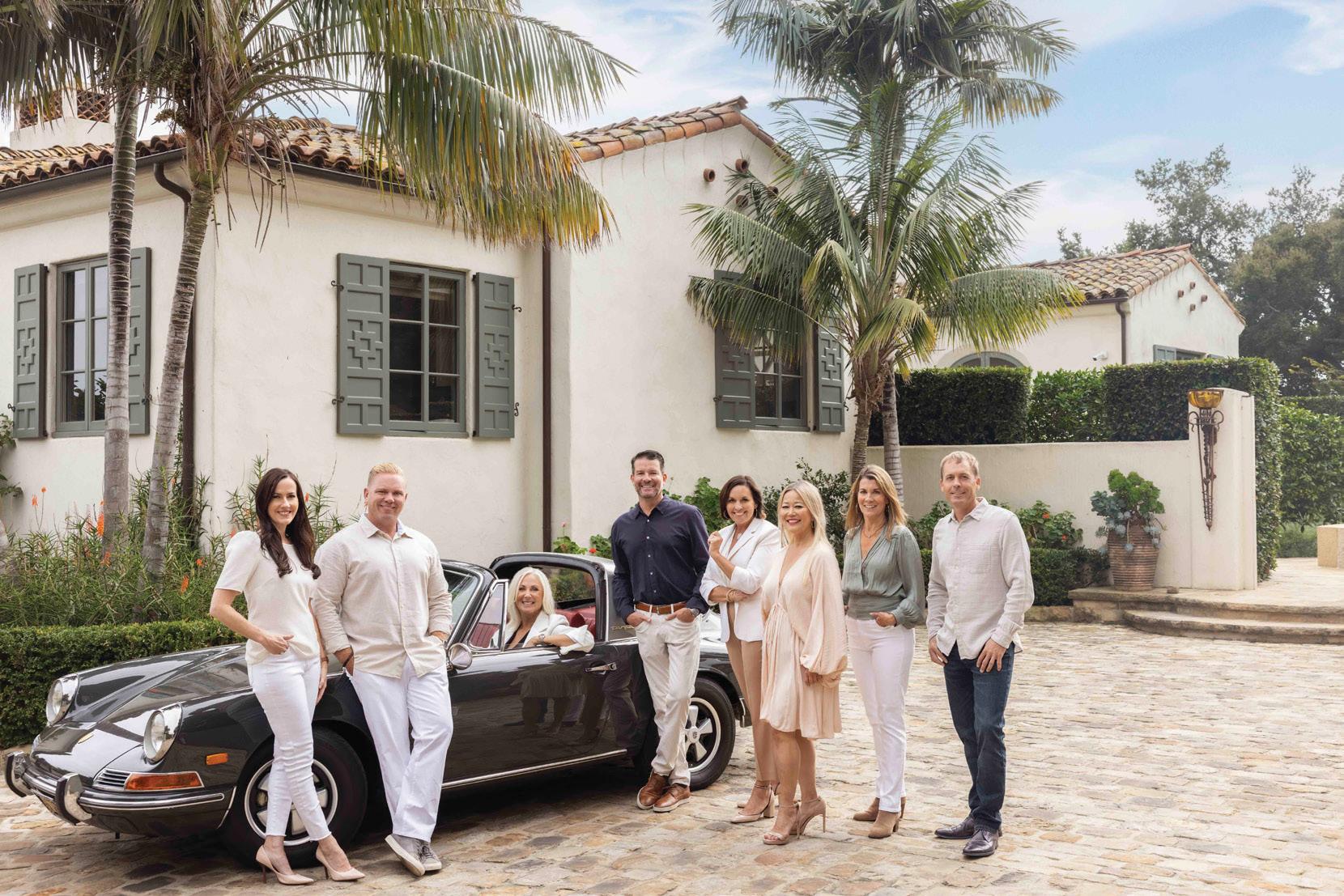











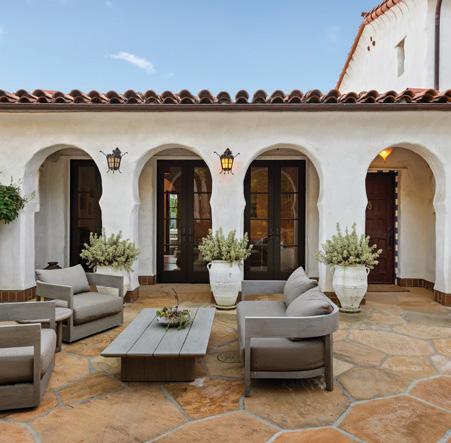





Alexander McQueen · Alexander Wang · Audemars Piguet · Balmain · Berluti · Bottega Veneta · Breitling
Brunello Cucinelli · Buccellati · Cartier · Celine · Chanel · Christian Louboutin · Courrèges · Dior · Dolce&Gabbana · Fendi
Ferragamo · Gentle Monster · Givenchy · Gucci · Harry Winston · Hermès · Isabel Marant · Jacques Marie Mage
Jil Sander · Lanvin · Loewe · Louis Vuitton · Maison Margiela · Marni · Missoni · Miu Miu · Moncler · Monique Lhuillier
Moynat · Oscar de la Renta · Prada · Roger Vivier · Rolex|Tourneau Bucherer · Saint Laurent · The Webster · Thom Browne
Tiffany & Co. · Vacheron Constantin · Valentino · Van Cleef & Arpels · Versace · Zegna · Zimmermann partial listing
Valet Parking · Personal Stylist Program · Gift Cards · Concierge Services

Southern California is many things, including a nerve center for architectural wonder. With his insight and keen eye, the legendary domicile photographer Tim Street-Porter proves once again to be a veteran master of capturing the Southern California spirit.
When she isn’t making cameos on White Lotus, designer Penny Bianchi makes homes look timeless and beautiful. As Julia Morgan did with William Randolph Hearst, so too has Bianchi built a dazzling design career around one very good client. In her case, the late, great Berkshire Hathaway vice chair and investing legend Charlie Munger.
Want some artisanal expertise for the patina on your ground tiles? You’ll be simply floored by Carmen De Loera, your neighborhood floor restoration expert.
Forget about the scuttled UCSB dorm, Munger, the architect of Berkshire Hathaway, contributed many great and much-loved designs to our architectural oeuvre: residences, institutes, and institutions—that have proliferated locally and resonated nationally.

THERE’S NOTHING FALSE ABOUT HER IDOL WORSHIP: Artist and Berkshire Hathaway shareholder Yu Shu admires Charlie Munger with a passion so great that she created some limited edition bronze busts of Munger (and Warren Buffett) to prove it. It’ll look perfect beside your poster of Marilyn Monroe.
He bought a few markers one day and now he’s a beloved artist on social media. We talk to Dutch artist Albert Kiefer about his exciting art career, gazing into both the windows of his soul and of the buildings he likes to draw. The drawing room is alive and well with Kiefer.
No, because they’re actually the modern day Salvador Dali & Amanda Lear. The editor of this erstwhile publication makes the case that despite taking sledgehammer-to-house, Ye-Anca’s design chops are more than legit and demand serious consideration.
Some things are better when they’re smaller: cats, student loan debt, kidney stones… but houses? In the case of Chris Toledo’s miniature houses, they’re just as detailed and enchanting as their full-size counterparts. To marvel at his work is to wish someone could zap you with a reduction ray to get a closer look. Finally, a shrink with remarkable results!
In the history of the world, there has only been room for one person to earn the title “Accidental Decoupage Empire Builder” and that would be the super nice guy and creative force of nature John Derian. How does he do it? We illuminate how Derian’s trinketry became de rigueur with the Illuminati.
The latest in big shiny ornamentation is Miami’s own Big Shiny Balls. Behold the bigness! Marvel at the shinocity! Get a load of those balls! If you go to a party and don’t see them, you’ve gone to the wrong party.


We owe much of Ojai’s existence to a glass magnate named Edward Libbey. The town’s crown jewel of leisure living, the Ojai Valley Inn, owes its luxurious style to the great architect Wallace Neff. It’s not just a place for golf lovers, it’s also a place for history buffs.
It is said that young people dream of being rich and rich people dream of being young. With booms in biohacking and surgical enhancements, we sit down with the eminent plastic surgeon Lawrence Koplin to see if redesigning ourselves is the next frontier of design—and see where all this is headed. Fortunately we sit with him in his house, which is pretty nice too.
New Mexico is home to some of the most mythic alien lore in the country. It’s also the home of Studio Chora, where lamp and home furnishing designer Emily Silva crafts lamps that look, well, not unlike creatures from another planet. And we mean that in the best possible way.
Maybe you’re one of those people who would rather drive around in a Lamborghini than deconstruct it down to all its individual pieces. If so, you’re not Swiss artist Fabian Oefner, defiler of luxury goods in the coolest ways and for all the coolest reasons.
Is there a German word for the agony of keeping your can’t-get-rid-ables in a storage unit for an indefinite amount of time? Is it “Nippsachenunverzichtbarkeitsdauerauflagerungsqual”? Instead of trying to figure out how to pronounce that, read how the agony comes alive in Heidi Clements’s personal tale (in English!) of owning just a few things more than she can fit in her new home.
Is Richelle Ellis a multi-hyphenate artist, or an astronaut in training? Well, she’s both and a whole lot more. Bridging the gap between art and science in an intensive fashion, Ellis embarks on an extreme extraterrestrial expedition to become a conduit for the beauty of the human spirit.

No matter your situation, a new home is the fulfillment of a dream, a new chapter, a possibility yet to unfold. Creating your dream takes time, expertise, and powerful negotiating skills. Lisa offers comprehensive real estate services, always working to go above and beyond her client’s expectations.

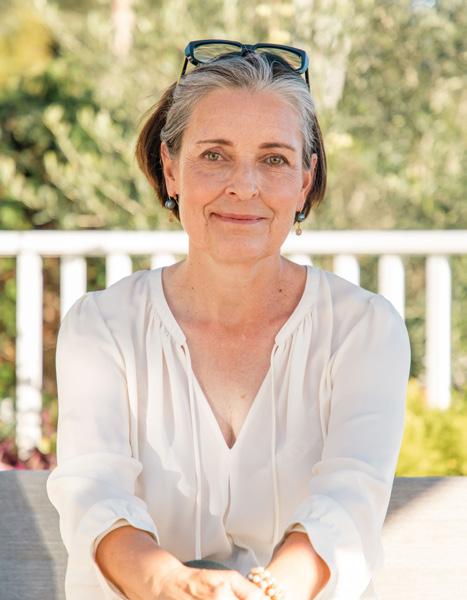






Interior designer Scott Corridan is a man of blunt talk and equestrian love. His superpower: winning over clients with the sort of personal detail only the most observant designer, nay human, can take note of.
Unless you’re living off the grid, not a day goes by when you don’t use the loo. So why can’t we think creatively about this must-have feature in all of our homes? We shed some sunshine on the taboo of the loo, share some history, and indulge in a little fun with our AI-magination.
As we put a spotlight on outrageous and innovative toilet designs for this issue of The Riv, we also ironically feature the story of the Hidealoo, one particular toilet design that’s meant to hide discreetly in your cabinets.
Sometimes it seems like Japan does things differently and better than we do here. Case in point: The latest public restrooms in Tokyo, featured heavily in the recent Wim Wenders film Perfect Days, offer something most public restrooms around the world do not: an enjoyable experience.
In most places, the word “retail” is a modest word, but in the greater Montecito metropolitan area, “retail” is an adventure all on its own. We invite you to take a little stroll down our avenue of class, integrity, and unique wares and services that you’re not likely to find gathered in any other single place. Don’t mean to boast, but modesty only gets in the way.
I don’t suppose you’re looking for a cozy little starter home? A fixer-upper away from all the hubbub on a parcel of weeds? If so, you’ve come to the wrong place. On the other hand, if you’re ready to pounce on your next gorgeous hunk of real estate heaven, come take a look around. Be warned, you may be overwhelmed by your choice of dream houses.












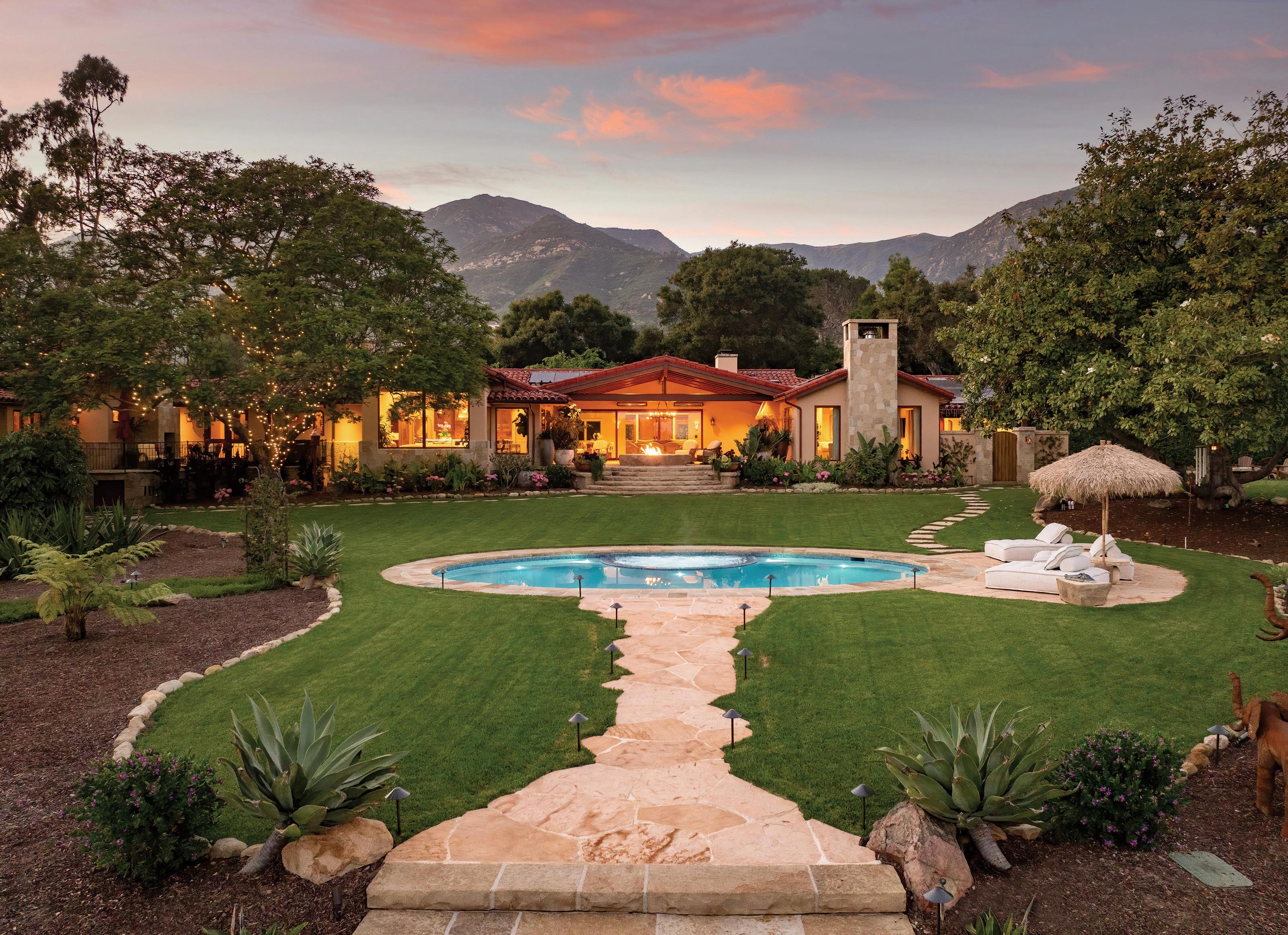

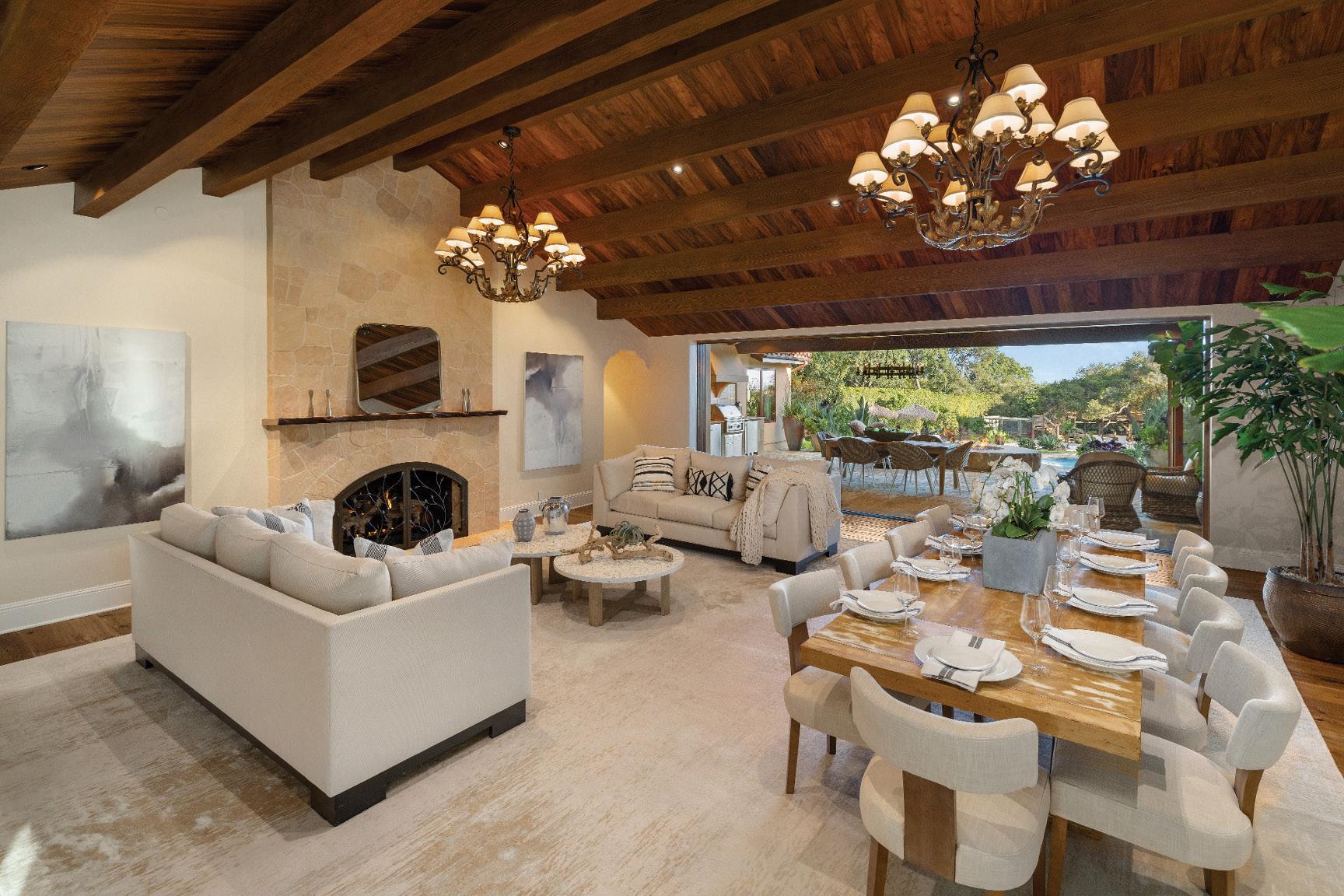
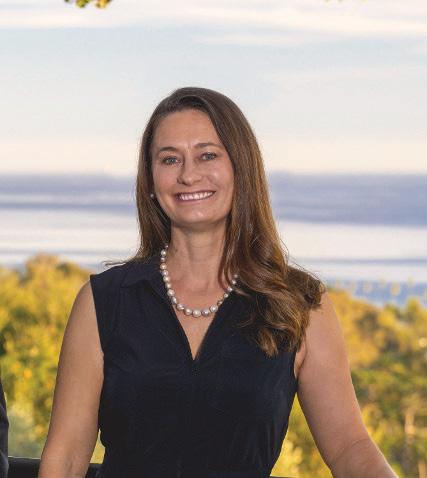



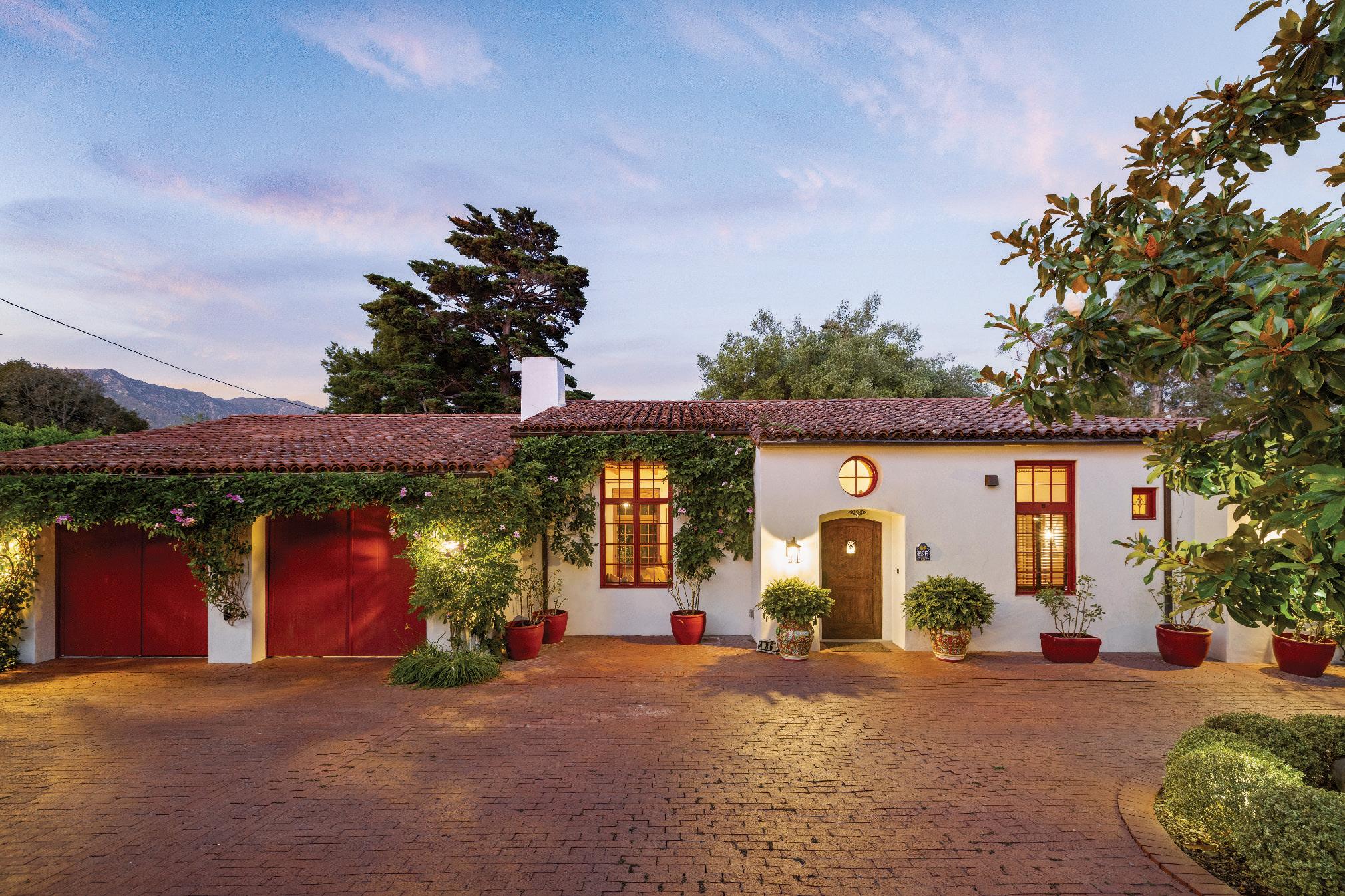




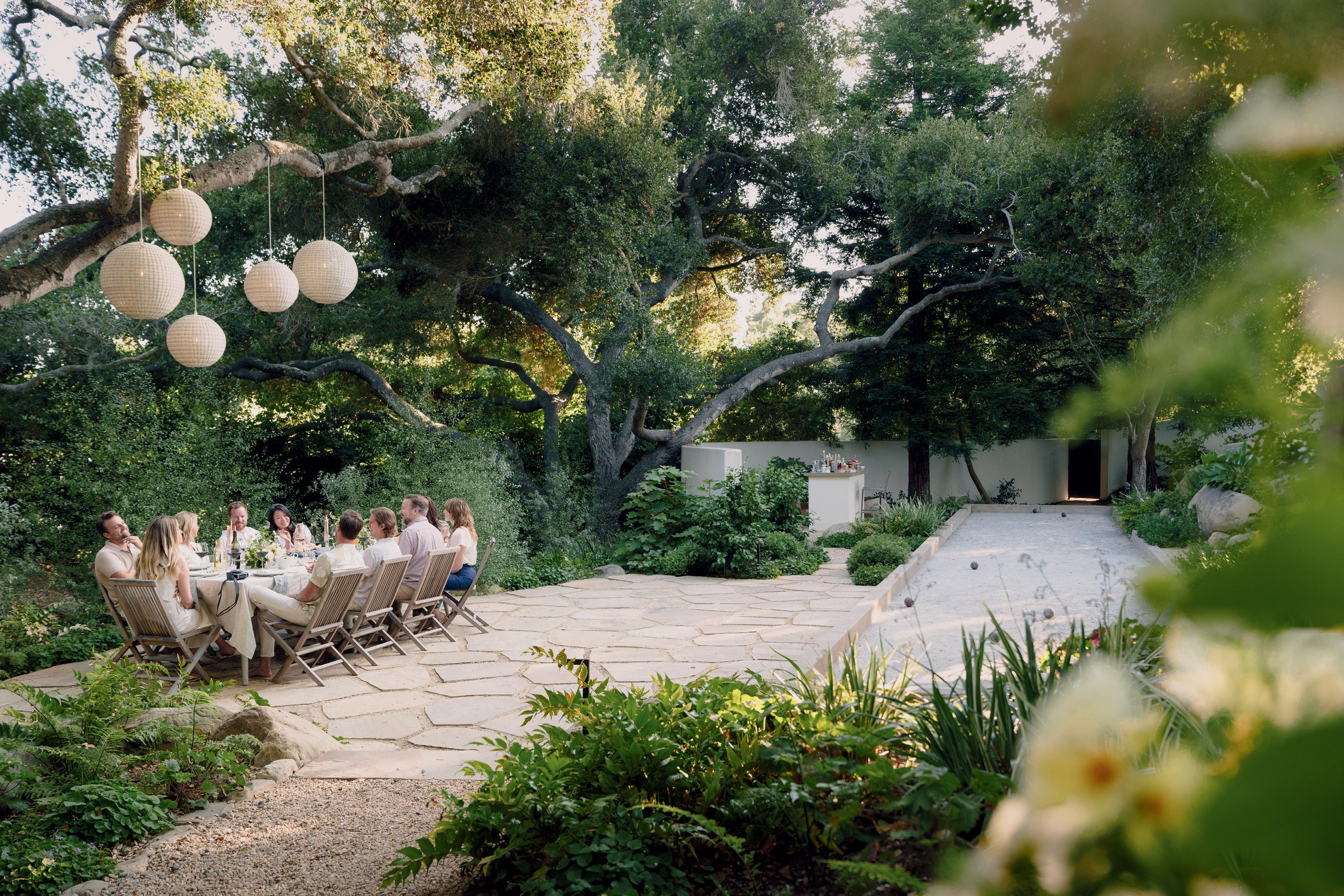



asked
Heidi Clements is a writer and social media creator: “My Google Nest. While I do fear the AI takeover, I have fallen madly in love with the little lady who lives in my little speaker. I can tell her to play music, ask what the weather is, have her remind me to buy coffee beans, and even turn on my lights. She once responded to me as my deceased mother, but that’s a story for another day. If she could make me dinner, I’d marry her.”



Sophia Kercher is a freelance writer for the likes of The New York Times and Vogue: “I have a little one who is the center of my world. I fondle our VTech baby monitor with equal tenderness. It’s connected to an app on my phone so I can spy on him sleeping anywhere in the world. It plays music, tells us the temperature of his room, and I can take pictures of crib antics—if only it could change diapers.”


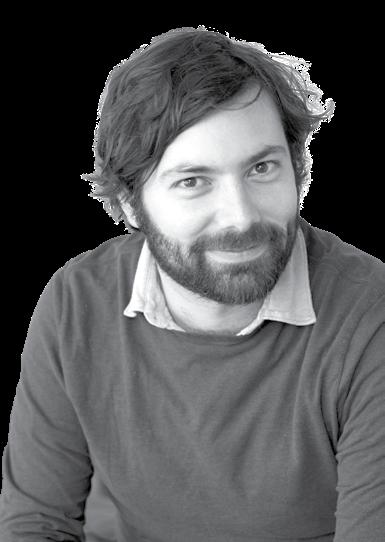
Zachary Bernstein is managing editor for The Riv: “There’s an independent lamp designer whose lamps are stylish and have a very smooth, satisfying on/off ‘cachunk’ pull switch, which I love. Unfortunately, she kept her pet dogs in a cage at her studio. It smelled so badly of dog pee there I couldn’t bring myself to buy anything. It’s a shame; those lamps were otherwise perfect.”

Tiana Molony is a feature writer and essayist whose work has appeared in the Montecito Journal, Mountain Gazette, and Backpacker Magazine: “My Olympus Mju III Wide 100 film camera accompanies me everywhere I go. How else am I supposed to take photos? With an iPhone? No, thank you.”


Sophia Ortega is a writer in Los Angeles. Her essays have appeared in The New York Times and the Los Angeles Times, among others: “The bracelet I wear on my right wrist, a delicate gold chain that was welded on over two years ago (there’s no clasp). It’s a small luxury that lives with me always.” Twitter: @Sophia__Ortega


Joe Donnelly is a journalist based in Southern California: “Fender Telecaster, the pinnacle of electric guitar design. Nothing cooler.”

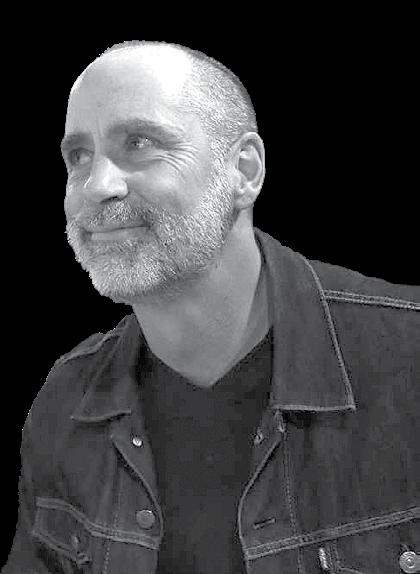

Jonas Oppenheim is a comedy writer and Secret Service investigatee: “There is a room in my home devoted to the artwork of Diane Meyer. She is a fineart photographer whose work explores memory. She pixelates portions of her photos, then cross-stitches color-matched thread over each pixel. The images are intricate and moving. In this room, I also frequently find Diane, working. We are married.”
CEO Gwyn Lurie gwyn@montecitojournal.net
President & COO
Tim Buckley tim@montecitojournal.net Fall | 2024
The Riv Founder & Editor Les Firestein les@montecitojournal.net
Managing Editor Zachary Bernstein zbernstein@montecitojournal.net
Art Director Trent Watanabe trent@montecitojournal.net
Copy Editor Lily Buckley Harbin
Graphic Design/Layout Assistant Stevie Acuña
Director of Operations Jessikah Fechner jmoran@montecitojournal.net
VP Sales & Marketing
Leanne R. Wood leanne@montecitojournal.net (805) 284-7177
Account Managers
Tanis Nelson: tanis@montecitojournal.net
Susan Brooks: sue@montecitojournal.net
Elizabeth Scott: elizabeth@montecitojournal.net Natasha Kucherenko: natasha@montecitojournal.net
Photography Kim Reierson
Contributors
Zachary Bernstein, Heidi Clements, Christopher Matteo Connor, Joe Donnelly, Sophia Kercher, Tiana Molony, Jonas Oppenheim, Sophia Ortega, Jeff Wing
is published by Montecito Journal Media Group, LLC. 1206 Coast Village Circle, Suite G, Santa Barbara, CA 93108 For distribution, advertising, or other inquiries: (805) 565-1860 www.montecitojournal.net

439 LAMBERT ROAD, CARPINTERIA, CA 93013
4 BEDS | 5 BATHS | OFFERED AT $10,495,000
Knoll-top California Hacienda on approximately 5 acres. This custom-built, gated, and private retreat is just minutes from town. A dramatic great room greets you as you enter the home from the front courtyard. Additional features include Alder hardwood floors throughout, vintage French tile floors in the kitchen/family room, wine room, media/library, and an office/flex space. The primary suite is on the main level with direct access to the pool and spa. Several covered loggias, one with a fireplace, spill out to the terraces and gardens. The property boasts a stunning pool and spa, embodying the ultimate indooroutdoor California lifestyle. The dramatic views include the coastline, white water, islands, harbor, mountains, valleys, and polo fields. Approved plans for expansion/renovation, including a new infinity-edge pool, are available if desired. This coastal ranch also includes an avocado orchard.
2039 BOUNDARY DR., SANTA BARBARA CA 93108
3 BEDS | 4 BATHS | OFFERED AT $10,900,000
This stunning home has just completed a multi-year, down-to-the-studs extensive renovation. The collaboration between the architect, designer, and owner has culminated in a breathtaking, move-in ready home. Most rooms open to wide, south-facing terraces complete with a pergola and fireplace. Enjoy views over the fairway to the Pacific Ocean and Islands. The living room features a focal-point fireplace, 14-foot ceilings, and accordion doors that slide back to create the ultimate indoor-outdoor entertainment space. The custom dining room includes a wine room. Curated finishes combined with quality craftsmanship throughout make this a one-of-a-kind offering. Masterfully executed by Akiko Wade Davis of Wade Davis AIA, Ann James of Ann James Interiors, and Mark Magid with Below Magid Construction. Located within the gated and acclaimed Birnam Wood Golf Club.








Welcome to the Fall Riv—one of your last opportunities to languor over a slowdripped coffee and enjoy locally harvested words crafted by artisanal wordsmiths in small batches. Enjoy the images, too, before November 5th rolls around and we have our next election controversy. Remember when we’d go into other countries to certify their elections? Good times.
Speaking of controversy, I was honored to get the very last interview with the finance legend and Montecito institution known as business partner Warren Buffett referred to as the Berkshire Hathaway.” Buffett is known as the “Oracle From Omaha” and I’ve dubbed Munger the “Prophet On Padaro” even though Padaro wasn’t quite his exit, but close enough. Maybe the “Seer From ‘Cito?” Munger recently passed away just a few days shy of a century.
Munger sidestepped controversy most of his 10 decades. But then oddly became mired in it in his late nineties (I hope I’m able to say that one day) because of the controversial dorm he wanted to donate to UCSB. Well, $200 million of it anyway.
What I found so interesting about the UCSB brouhaha was I knew Charlie was a lifelong acolyte of architecture, and came from a family steeped in architecture, and he personally developed Montecito’s beautiful and vaunted Sea Meadow seaside community—considered one of the greatest and most beautiful such developments—where Charlie ultimately collected six homes for the use of himself and his extended family.
For every single one of the homes in Sea Meadow, Charlie hired the flamboyant Penny designer, Montecito’s Auntie Mame, to wave her magic wonder wand over the fallow lot that had laid barren for many decades. Why didn’t Charlie ever hire other designers? Because he was an old ‘buy and hold’ guy which went not just for stocks, but for people. He knew he had a gem in Bianchi, so why ever look elsewhere? That’s the kind of guy Charlie was. It’s also the kind of talent Penny Bianchi is.


peaking of flamboyant characters, also in this Riv, from our rowdy rock’n’roll sister riviera 60 miles south, comes another Kanye West went defcon 3 on a Malibu beach house crafted by the highly regarded architect Tadao Ando. Ye’s reimagining of Ando’s beach bunker was aided and abetted by his new wife, the extroverted designer Bianca Censori. No surprise, the patriarchy was none too pleased with Ye-Anca, as represented by a 50-page exegesis (exeYeezus?) in The New Yorker
Now I’m not a fan of politics, especially pop stars talking about politics, with Kanye’s race-baiting brand at the top of the list. I am, however, always a fan of fairness so I want to go on record that Ye’s no fool when it comes to design—he even spoke at the Harvard Graduate School of Design. But the name Bianca Censori sounds to me like the name of a constellation and unquestionably she is star of this story.
Just as the legacy press framed Munger’s dorm as the architectural rant of a crazy old (but well funded) coot (though he’d already built a similar—and popular—dorm at U Michigan) so, too, did the legacy press laugh off Censori as a mere exhibitionist. In fact, Censori has a bachelor’s and a master’s in architecture, can be compelling and articulate about architecture and lectures on the subject. But most importantly, her design work, even if it’s not your style, can be very, very good.
DON’T JUDGE A BOOK BY ITS COVER - OR LACK OF ONE

When Bianca’s not being photographed in little more than high heels and a Cybertruck, she designs primitive futurist ‘scapes for Yeezy Home, Ye’s design arm, and holds forth on, among other topics, a French feminist philosopher named, ironically or perhaps poignantly, Catherine Malabou. Suffice it to say there’s more to Bianca than meets the eye (she’s also an excellent jewelry designer) and I know you’ll be intrigued by the article.
One more person I’d like to make sure you look for in this epic issue, about whom there is no controversy whatsoever, is the person I call the “King of the Hostess Gift,” John Derian Who’d’ve thought an artist could not just make a living, but build an entire industry and corner the market on the antiquated art of decoupage? Not even the great prognosticator Charlie Munger could have predicted that.
Enjoy the issue!

Les Firestein Founder & EIC, The Riv
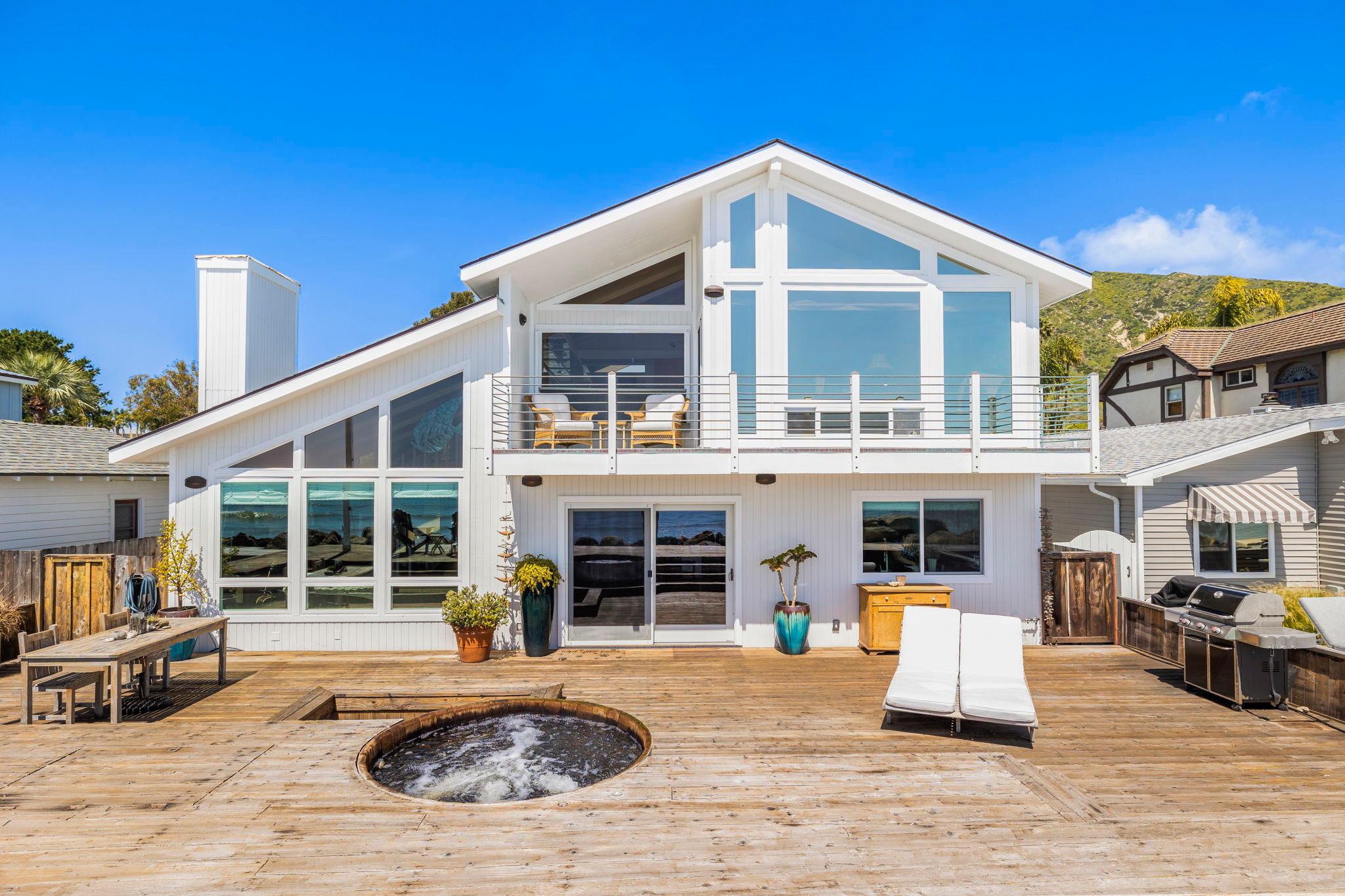












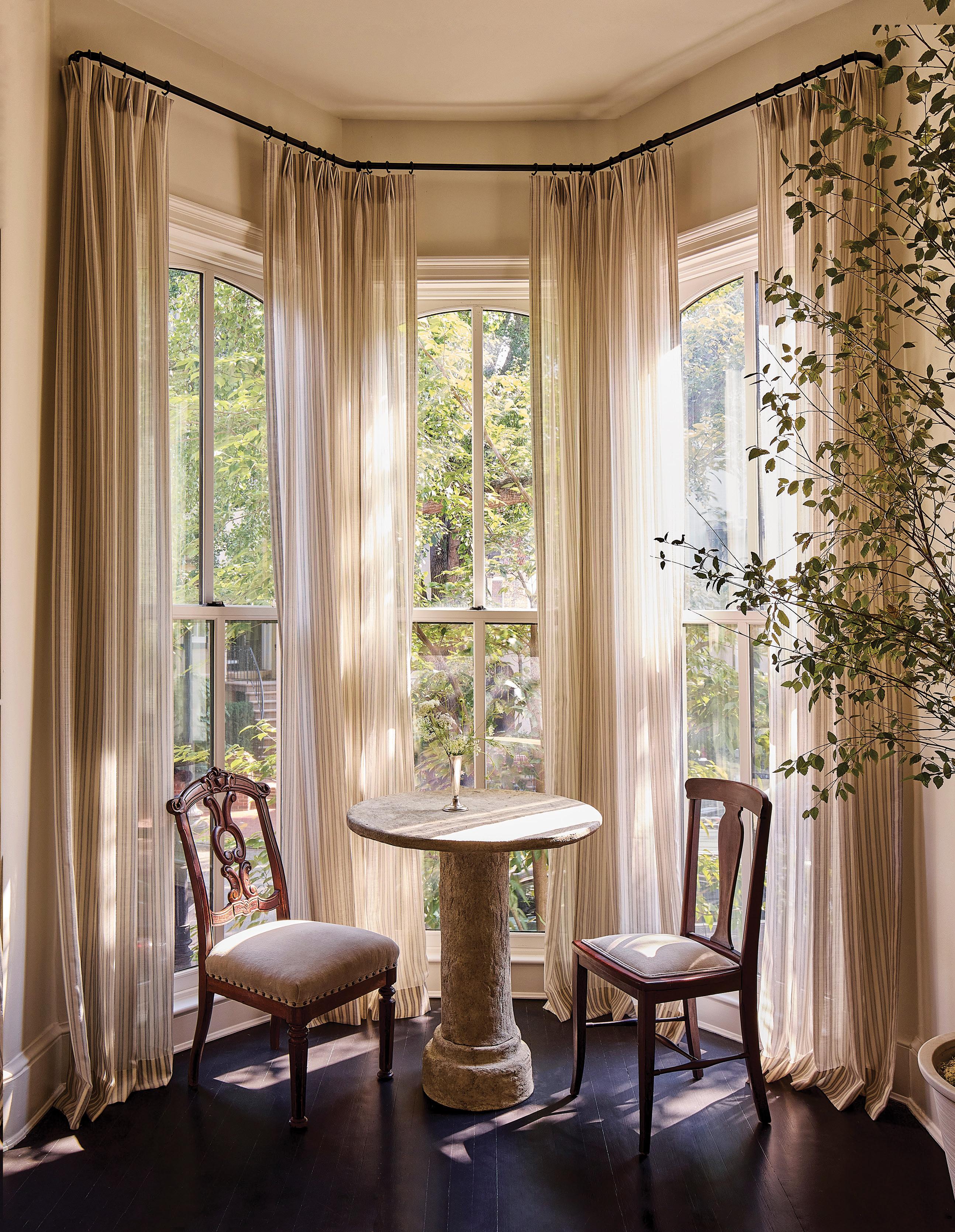







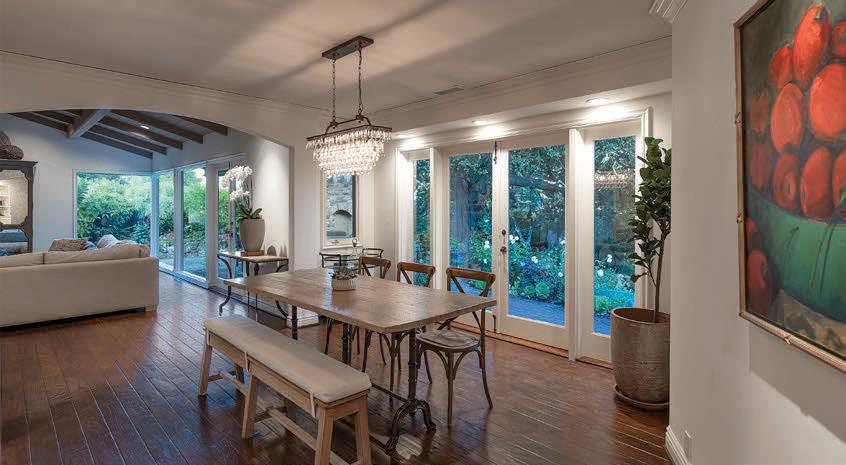
Enter through the historic gates of the storied Arcady Estate, wind along the oak-canopied private lane, and arrive at a knoll-top retreat, a truly magical respite from the stress of the ‘real world’. Reminiscent of a French country cottage, this 3-bed, 3-bath single-level home resides within a gated, incredibly enchanting acre, with every window offering a romantic vista; a lantern-lit oak glen, stone steps and meandering pathways, tranquil cascading waterfall and rolling lawn, passion fruit vine-covered greenhouse, curving stone stairway to a secluded gazebo, large native boulders, and a variety of fruit trees. Schedule a tour of this gorgeous property, explore its abundant amenities, and experience its beauty first-hand!


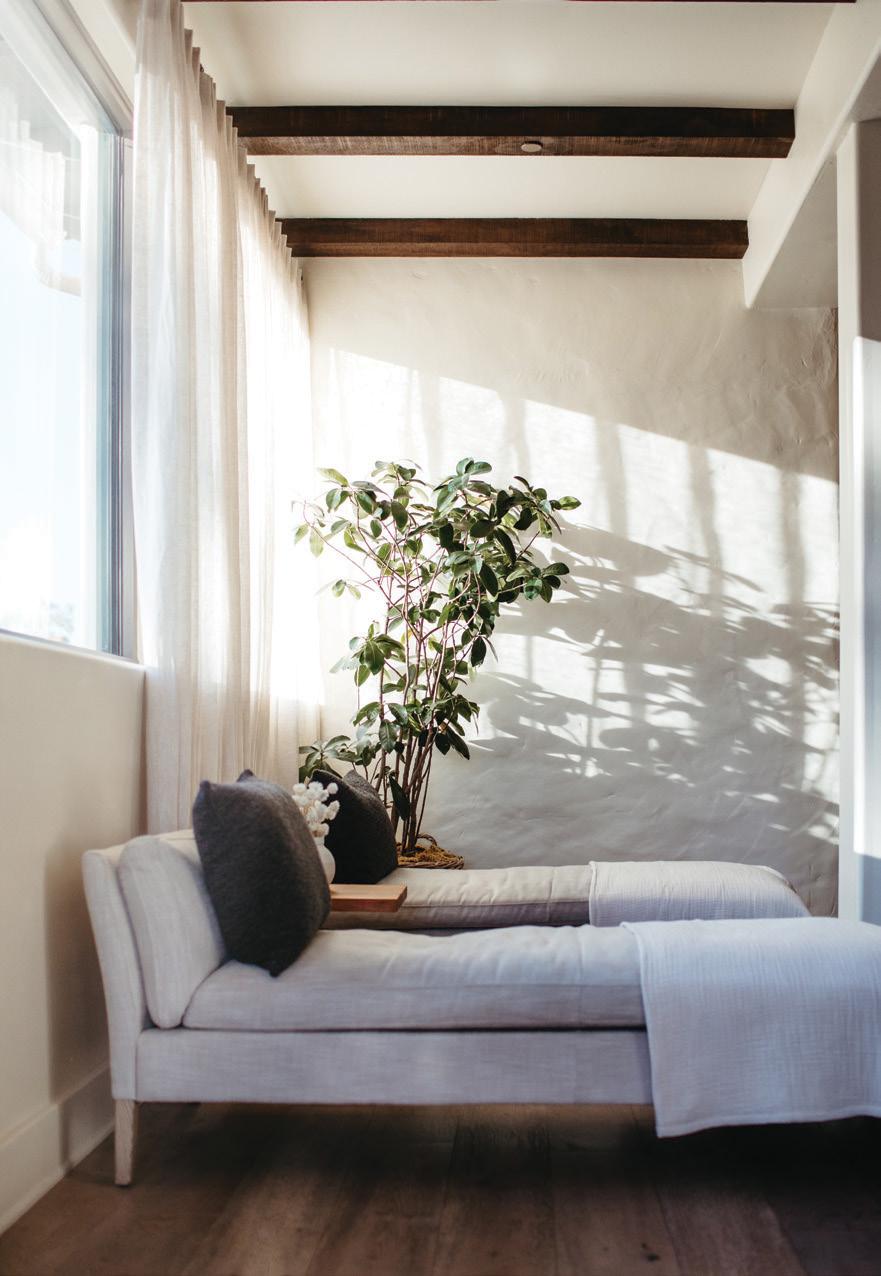

Take time to revel in the joy of travel, share magical moments with loved ones, and discover new adventures at Ojai’s beloved 220-acre retreat. Come rejuvenate at our Forbes Five-Star Spa Ojai, delight your palate at The Farmhouse, and find sanctuary in our private villas and fully refreshed guestrooms. Our serene mountain valley welcomes you to escape in a moment with Ojai’s rare spirit.
(844) 597-8955 OjaiValleyInn.com





BY JOE DONNELLY
PHOTOGRAPHY BY TIM STREET-PORTER
I’d heard a rumor that renowned Los Angeles architectural photographer, Tim Street-Porter, a refugee from jolly-old England’s less than jolly climes, came to Los Angeles for a Dodgers game and never left. While that turned out not to be the case, his introduction to mid-century L.A., a period that spawned the city’s signature style and became Street-Porter’s enduring muse, was even better: the Beatles at the Hollywood Bowl.
Street-Porter, who had been studying architecture back in London before he switched to photography, was then living in San Francisco as an exchange student, drawn there by a love of jazz and the desire, like many young men (and women), to go west.
“It was great,” says Street-Porter. “You could discover early LSD, and it was the height of the jazz era. I was into Coltrane–I even met him once–and Charlie Mingus, and was really able to encounter all that. A year or two later, the psychedelic rock
groups had started to take interest away from the jazz culture.”
It was around that turning point in time that he saw the Beatles play at San Francisco’s venerable Cow Palace. He decided to follow the boys down south for their legendary Hollywood Bowl performances, armed with fake press passes he and friends had cobbled together. “We were able to stand next to the stage and it was great. It was my first experience of feeling kind of old because I was in my mid-20s and the whole audience was screaming teenagers.”
Like the Beatles, Street-Porter would soon return to London. Seven years later, he met Ed Ruscha in 1972 at one of the artist’s earliest shows abroad. Ruscha was part of the muscular Chouinard School of Angeleno artists gravitating around Venice Beach, a scene that Street-Porter found intriguing. By then, fellow Brits such as artist David Hockney and the architectural critic/urbanist Reyner Banham (Los

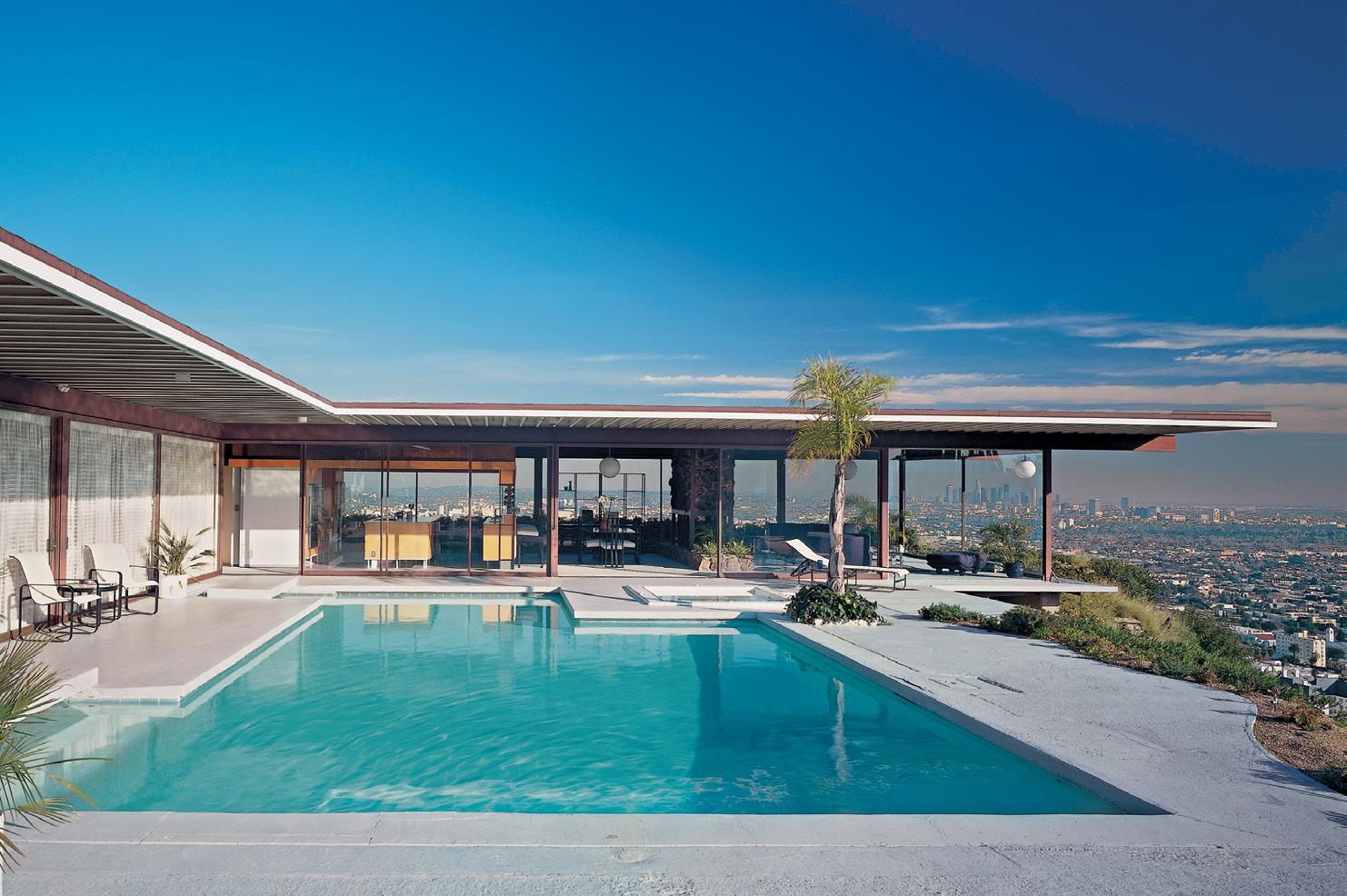
Angeles: The Architecture of Four Ecologies), had already sparked a rethinking of the clichés about a sprawling, senseless Southern California metropolis. When his friend, British pop-art progenitor Allen Jones, came out to spend the summer with the Venice Beach crew, Street-Porter decided to tag along.
“That’s when I discovered L.A. was really extraordinary. I came out to stay and met all those artists, Larry Bell, Billy Al Bengston, Frank Gehry—something was happening here, absolutely. There was a whole culture of artists who didn’t have any established galleries who were just out there making art and were extremely relaxed and would take motorcycle trips to Baja. There was quite a lot happening and there was no equivalent really in San Francisco at the time,” Street-Porter remembers. “I was able to appreciate the landscape and the light. I loved everything about these desert landscapes, which were completely the opposite of what I’d grown up with in England or had seen on the East Coast.”
In the almost half century since, Street-Porter has made his name as, arguably, the preeminent photo documentarian of the Los Angeles landscape, natural and built, that he adopted. In a run of iconic books such as Los Angeles House: Decoration and Design in America’s 20th Century City, L.A. Modern, and, more recently, Los Angeles Today: City of Dreams and this spring’s City of Dreams: Los Angeles Interiors, Street-Porter and his wife, the writer and designer Annie Kelly, haven’t just reflected the city, they’ve helped define it.


We caught up with Street-Porter on one of those SoCal summer days that likely lured him here in the first place to talk about his muses, past, present, and future. (The following has been edited for clarity and concision, if that’s important to you.)
When it comes to Los Angeles, I’ve often found that there’s no zealot like a convert. Would you say you were a convert?
I guess I was, yeah, epitomized in particular by my attrac tion to cacti. My Australian girlfriend, who became my wife, and I arrived in Los Angeles and we were renting a house in



the flatlands in Hollywood. It was owned by a Mexican and it had a rose garden in the front. I had grown up with rose gardens and what I wanted was cacti and I was able to talk the landlord into pulling up the roses and planting cactuses. He couldn’t understand it at all. But as long as I promised to return the roses to their proper place when I left the property, which I did, we could all be happy.
Obviously, you’re renowned for contributing to the cultural history of L.A.’s mid-century modern architecture and style. Los Angeles had developed a very distinct vernacular in private and commercial architecture in the post-war era. Do you think it still has one, and has it evolved since then?
There are all kinds of new and recent architectures happening; it just happens that L.A. had a greater and important concentration of early modernist architecture than just about anywhere on the planet and that’s what I decided I wanted to document and do a book about.
I don’t know if what’s happening now architecturally in Los Angeles compares with the rest of the world. We are lucky to have had Frank Gehry here of course. With him I was lucky because I had known him early, because early on—he was part of the Venice art scene because he always wanted to be an artist. I knew him and he helped sponsor my green card, which was great.
But I think architecture, because of the media and the means of the communication around the world, has gotten quite international now and there’s extraordinary architecture happening everywhere, recently.
I think in terms of indoor spaces, here, there’s not much better than the interior of the Apple store in West Hollywood by Norman Foster. There’s nothing else like it in Los Angeles. That’s one space you almost take for granted because it’s an Apple store, but it’s right up there with The Broad in terms of its cleverness as an architectural space.

“There are incredible art galleries of national and international quality popping up all over L.A., so that makes up for the lack of excitement in, particularly, commercial architecture.”


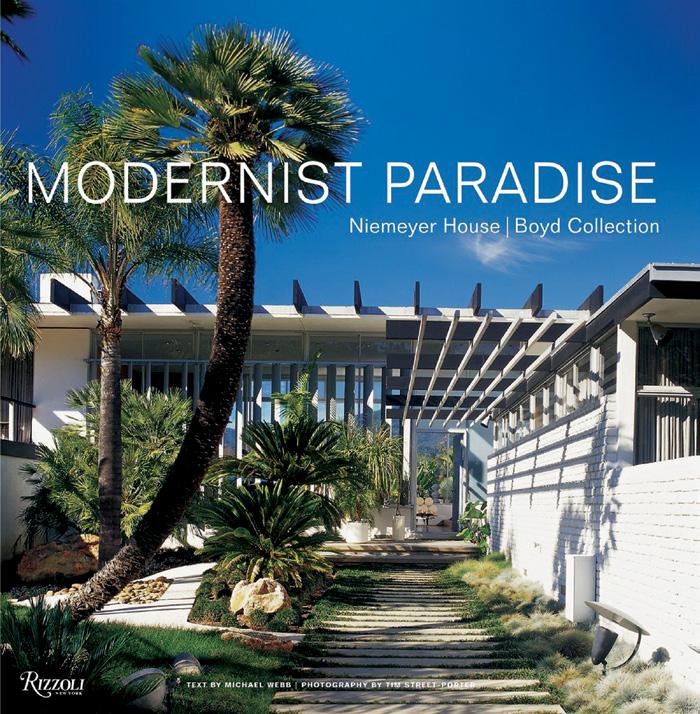
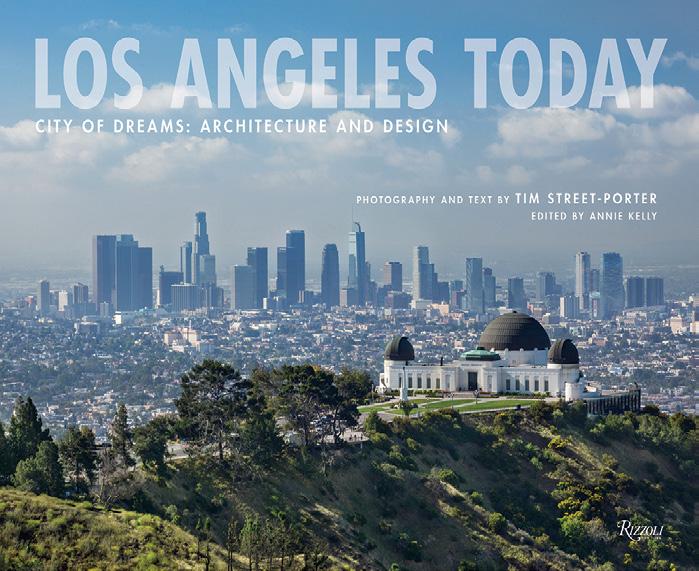
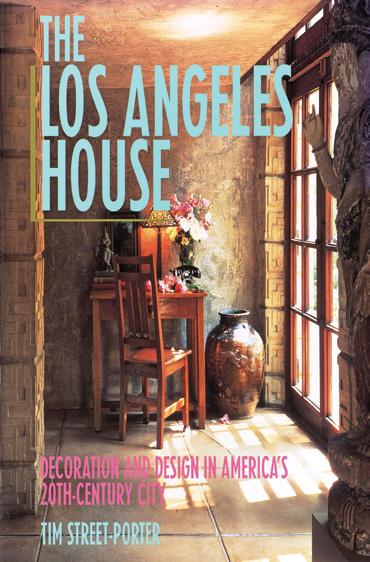
Street-Porter captures Southern California in enough books to fill a long shelf. These are just some of them.







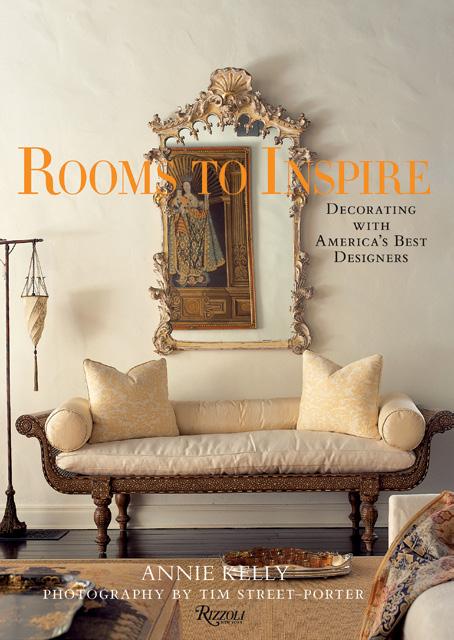
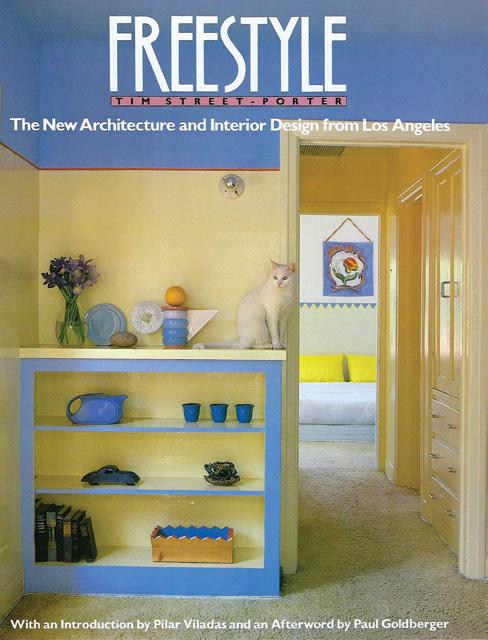
There’s an emphasis now on the need to backfill urban spaces and create density, due to the housing crunch, such as in Hollywood, where you live and work. Have you seen anything inspiring come of that imperative?
The architecture around Hollywood that you’re talking about I think is absolutely appalling. My wife and I spend time in Sydney and the equivalent commercial and residential spaces in Sydney are things you’d actually want to look at. Here there seems to be no interest in elevating the environment and spaces when you walk around at all.
What is that a function of, do you think?
Just a lack of cultural pressure, whatever, just people have no expectations. No one is rising to the opportunity to put something good on the street.
Is this affecting your appreciation of the city?
The whole experience of living in L.A. is extremely complex and there’s a whole lot we love about it… It’s a very exciting place to live and there are wonderful things happening. There are incredible art galleries of national and international quality popping up all over the place, so that makes up for the lack of excitement in, particularly, commercial architecture.
Montecito has a defined cultural identity and its architecture is a big part of that. Obviously, creating more density isn’t as high a priority here. As you see it, is Montecito’s identity being preserved, or is it evolving?
First, the major 1920s Montecito estates, some of which I’ve photographed, were divided up years ago. Today, the city is otherwise relatively intact and maintains its low intensity charm (compared with what’s happened to Beverly Hills). So much so that to me it’s the most beautiful city in America. Talented designers like Penny Bianchi have moved here from Los Angeles, bringing added charm and sophistication. I worked with her years ago and included her early Pasadena house in one of my books, and her Montecito house, much published, is a dream.
You once described L.A. as exotic. Are you still intrigued by Los Angeles, its architecture and design, or has it become more rote?
It still has incredible light and the desert and the landscapes, which still can feel exotic.
In terms of residential architecture? When the gems you’ve documented were being made, they were not for the rich; they were for the middle class. Now, they are tremendously expensive. Is there anything interesting in the residential space that isn’t just for the wealthy?
There are some architects that are doing things that are quite exciting around housing and multi-housing spaces. The idea of the middle class of postwar America was that you could reasonably expect to own a home and replace your car every few years and that’s practically impossible now and that’s sad.




It all depends on who the architect and the developers are. You have some developers who want to do inspiring things, but most just want to make a buck.
There are opportunities. My interest with the Rizzoli books I’ve produced, is to try to draw attention to what is exciting about L.A. architecture, early, old, and what’s happening now. That’s the chief contribution, I’m trying to showcase what has been happening and what is special and worth documenting about the architecture of Los Angeles in particular. I drove around the 500 square miles that is L.A. County and was able to spend time to document whatever was unique and special about its architecture and also what was happening with the museums and new work, and it was as interesting as anywhere else.
Is the goal of your work to remind us of what’s possible?
Yes, it is completely, because if you increase the awareness of what has happened, you are hopefully more likely to add to what has happened in a positive way, maintain standards, and even elevate them if possible.
What is your next project?
At the moment it’s a book on the Frank Lloyd Wright homes in California. I’m halfway through it. I’ve done most of the Los Angeles homes and now I have to get to Northern California. I expect it to be out in a couple of years.









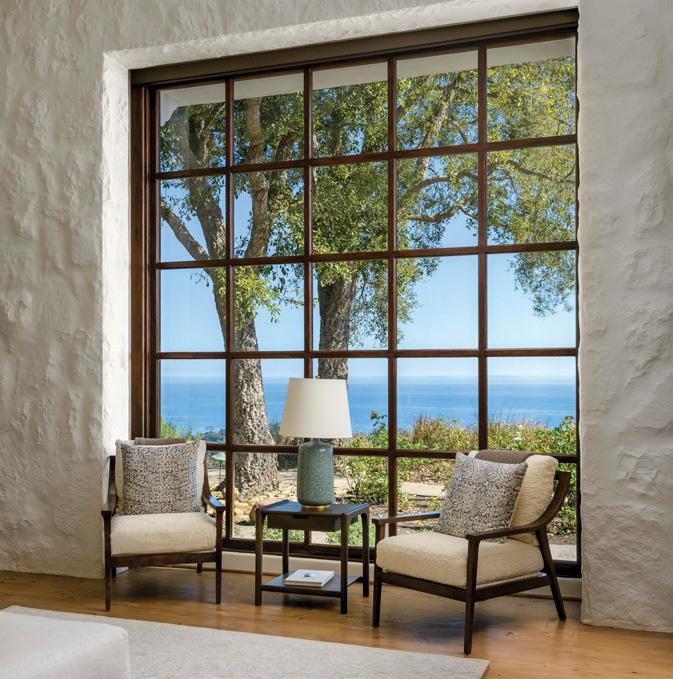




890 Park Lane
$14,950,000
Riskin Partners Estate Group

$ 7,500,000
Edward A Edick
Mary Lu Edick

9 10 B uen a Vista Drive $ 13,990,000 Ris k in Partners Estate Group


Campbell Group

Mary Lu Edick
Edward A Edick




BY



Since approximately the beginning of the year, our nation has lost two notable centenarians. Charlie Munger, who adopted Montecito, was Warren Buffett’s business partner (Vice Chairman of Berkshire Hathaway), and one of the greatest investors of all time. Charlie passed away at Santa Barbara Cottage Hospital just days before he would have turned 100. And Iris Apfel, the style legend, passed away at the age of 102. Both had a profound effect on the very much alive interior designer and style icon Penelope “Penny” Bianchi, who continues to design the kind of exuberantly restrained homes Montecito is known for. And she shows no signs of letting up.
Bianchi still leads the stylish and peripatetic lifestyle of an “It” girl a third her age. Any photo she appears in looks like it was a wildly fun event you missed. And whenever you run into her, she looks like she had more fun last night than you’ve had all year. Who knows? Maybe she did.
Of course neither Munger or Apfel can ever be replaced, but my nominee for Iris Apfel 2.0 is the Pasadena-born but marriedto-Montecito Penny Bianchi. She’s a big part of our town’s je ne sais quoi that so few can put their finger on and yet somehow Bianchi is able to create and recreate that vibe not just effortlessly but ad infinitum. Mise-en-scène seems hardwired into her. Strangers stop her on the street and demand her style secrets. It’s why Mike White put her in White Lotus season two (and she’ll be returning in season three)—because he simply had to. Anywhere Bianchi appears is a Fellini film but costumed by Ralph Lauren and choreographed by Balanchine. Sometimes I think we are all extras in Penny Bianchi’s life.

“I’VE ALWAYS SAID THERE IS A TUNNEL FROM PASADENA TO PADARO.”
– PENNY BIANCHI
Our story begins, as all great ones do, in Pasadena. (Birthplace of J. Robert Oppenheimer, Jackie Robinson, Julia Child, Phoebe Bridgers, and of course the adopted town of the brothers Van Halen.) You’d think her parents were Merchant and Ivory, but in fact Penny is the offspring of Charles and Ella Whyte of L.A. and Pasadena. Charles died when Penny was four, and her mother was “just a very brilliant, talented woman who knew more about taste, style, elegance, and work than anyone I have ever met—she taught me everything I know.” At seven, Penny, like so many who will grow up to become great designers, is already that restless kid rearranging the furniture while the other kids are breaking bones and teeth on pogo sticks. En même temps Penny is scrutinizing the vernacular housing of Pasadena and uploading thousands of images into her head.
Says Bianchi, “My mother explained to me only 2% of the population has color memory, and generally a different 2% of the population has a photographic memory. But I lucked out with both.” I tell Penny she seems to have won the genetic lottery for designers. “Not quite,” she says. “I can’t draw worth a damn and that would’ve been the hole-in-one.”

















At 13, Bianchi sees a house in Pasadena she determines “one day will be mine” and does not know at the time the home was designed by famed architect Reginald Johnson. The same Reginald Johnson who designed our Biltmore, Coral Casino, Music Academy, Bellosguardo, Baldwin Hills, Lotusland, the Cate School, the Montecito Club, the Santa Barbara Post Office—it’s quite a list. She also does not yet know that her prediction will in fact turn out to be 100% correct.
Bianchi’s mom can see that young Penny is both precocious with design and obsessed with it, so she gives her the seminal Elsie de Wolfe tome, The House in Good Taste. For the uninitiated, de Wolfe is credited with the concept of the home as a representation of the owner’s identity in addition to, well, basically inventing the profession of interior design. Oh, just that.
The House in Good Taste is a revelation for young Penny who didn’t realize her obsession could actually be monetized. She enrolls at USC though her mom cautions her to fill her head with general knowledge and not study design. “My mother taught me that designers with any talent don’t have time to teach. So you won’t learn design in a class. Taste, you’ve either got it or you don’t.” Instead, Ella emphasized learning design through the study of literature and therefore learning the philosophy behind good taste— and conjuring your own images rather than trying to emulate those of others. Penny rattles off the names of her holy books: “Edith Wharton, the Brontë sisters, Emily Dickinson—those were my Martha Stewarts.”
When Penny graduates from USC, her mother is not just Penny’s mentor but also first patron. And the young grad did not disappoint. When the makeover of their family home was revealed, Penny’s mother stated drolly, “When people see our place, everyone is going to want you.” And with that Penny Bianchi’s career as a designer was launched.

Any designer will tell you an important aspect of your home feeling like a sanctuary is feng shui. As everyone in California knows by now, feng shui, also referred to as geomancy, is the spiritual semi-science that’s all about creating harmony between oneself, one’s domicile, and its environs.
How the home is sited is foremost and critical. Is the home proximate to noise? If so, what kind? A babbling brook or a siren repair shop? Another aspect not-so-much talked about is neighbors. We all know that neighbors can make or break one’s hyper locality. And for a long time Penny Bianchi’s neighbor was Oprah. So… what was it like to have Oprah as a neighbor?
“Honestly, Oprah was the best. Right away she gave me her contact info. And told me to call for any reason. Okay, not any reason. But any reason within reason having to do with neighborly concerns. Occasionally she’d have concerts over there. And if there were concerts over there that meant there were concerts over here. People like Roberta Flack and Stevie Wonder, so I wasn’t mad at it. In fact she’d always call and warn me. So when there was a gospel choir concert over there, we’d have a gospel choir concert over here. And I’d invite over my own people and cater our own event. We always loved Oprah’s performers—we just had different guest lists.”
One of the many beautiful objets one notices at Penny’s Mediterranean France-meets-Montecito manse is a beautiful aviary. Inside that aviary there’s a sort of… bird carousel with many compartments. Bianchi explains to me this was the original mail drop from the old Miramar cottages (since replaced by the Rosewood Miramar hotel). Somehow she finagled the old mail sorting system from the old Miramar before the new Miramar began construction. But before Bianchi could get the old mail sorter from the Miramar to her own property in one piece, it had to first be driven partially across Oprah’s property. And did Oprah make a fuss? “Not in the least. As a neighbor, Oprah has always been extremely generous and sensitive and quite responsive. And I’d say she’s been a great steward not just of the land, but everything that lives here.”
“I love Montecito,” Bianchi continues. “I love my micro-neighborhood, and every day I pinch myself for hitting the jackpot with just the most respectful and congenial neighbor… Who just so happens to be Oprah Winfrey.”



Penny Bianchi and Molly Munger, the daughter of the uber investor Charlie Munger and a lawyer like her dad, both went to see a wreck of a home for sale in Pasadena by the aforementioned Reginald Johnson. Molly had seen the house first and loved its bones, but could not see a path to livability—so Penny pounced—it was after all, the home she’d sworn as a child to one day own. Penny explains, “I got to work on it right away because I can ‘see’ what a house wants to be. And since my refresh was mostly cosmetic, I was able to clean that place up lickety-split and turn it around in less than two months.”
Some time thereafter, Molly Munger was driving to a fundraiser for the Philharmonic—at an address she knew was either at or near the house she passed up. As Molly tells me, “When I walked inside that old Reginald Johnson I was speechless. What Penny did with it was truly transformative and I just went out to my car, closed the door and sobbed. I sobbed because it was the most beautiful home I’d ever seen, it was my dream, and Penny Bianchi was living in it.”
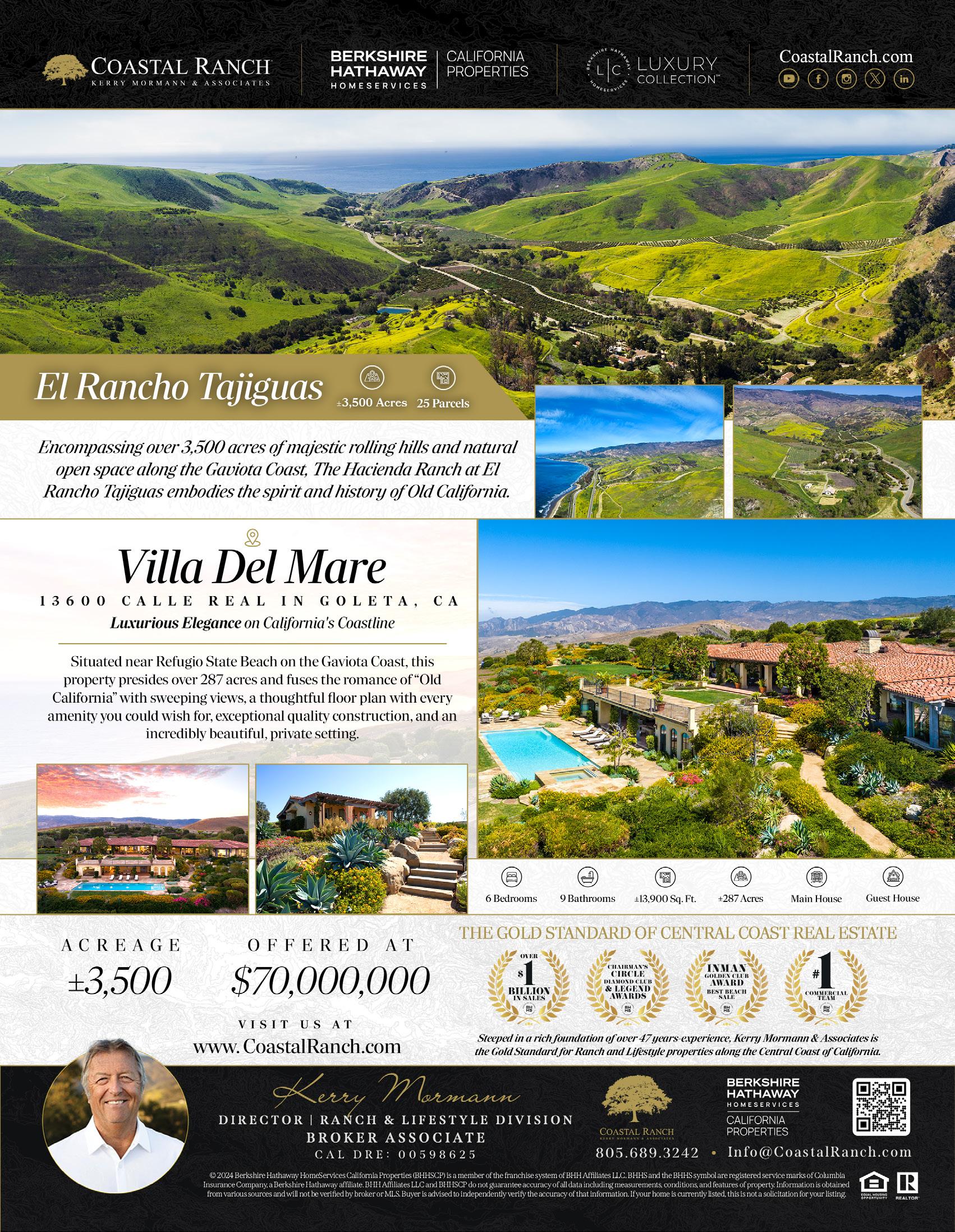






Eventually another Reginald Johnson comes up for sale in Pasadena which, once again, intrigues Molly Munger and, once again, is wrecked. But this time Molly has learned from her earlier folly, so she opens escrow and strikes a deal with Bianchi. Molly tours Penny through the Reginald Johnson she wants to buy but with the caveat, “I’m only buying this house if you’ll do it. And you have to do it as if it’s for you—as if it’s your own.”

Charlie Munger came to look over his daughter’s latest dream wreck before the close of escrow. As Penny tells it, Charlie struts through the house like General Patton (another Pasadena native) inspecting troops and not liking what he sees. “He’s just grunting and groaning, not actual words but just guttural sounds of disapproval—’cause that’s how Charlie was. You could say he was a man of few words… but many sounds. In any event, Charlie just wants to tear the whole thing down.”
But Penny assures Munger the wrecking ball won’t be necessary, she says the place just needs paint and revived surfaces and Charlie agrees to butt out—even though he doesn’t believe in the project whatsoever. So once again Penny comes in with her blitzkrieg of beautification, and this time it takes a little bit longer, 10 months, including remodeling. “This time when Charlie returns, he’s looking around like last time. Only this time there’s no grunts. He wanders from room to room like a dog who can’t find his ball, then finally declares, ‘You’ve tamed the beast’ and walks out.”
“That was the thing about Charlie,” continues Bianchi. “He was a plain speaking guy from the plains of Nebraska. But once you were ‘in’ with him, you were in for life. He was an old buyand-hold guy. Not just with stocks, but he was also that way with people. If someone was good, if someone had value, he would stick with them forever like Warren Buffett driving that same old Cadillac all those years. I remember after doing Molly’s house, I had lunch with Charlie on a Wednesday. And then we had lunch together almost every Wednesday… for the next 20 years.”
Almost as soon as Penny proved herself with her stellar renovation of Molly Munger’s, Charlie had bigger plans for her. A subsidiary of Munger’s received the fairly unbuildable Sea Meadow parcel in foreclosure, and you wouldn’t know it by the looks of Sea Meadow today, but back then those 21 acres of coast were almost the very definition of unbuildable: a flag lot, mired in red tape, deeply enmeshed with the Coastal Commission, parts of which were sacred to the Chumash tribe of Native Americans.
After 14 years of inadvertent ownership and building delays, Charlie did not think the property had value; remember these were not the heady times of Montecito-à-la-Meghan but the dowdy times of Harry’s grandmum (another near-centenarian we recently lost). Charlie didn’t think they could even fire sale Sea Meadow unless they developed it themselves. So he set to work with a team of local Montecito all stars including Richard Six, Michael Towbes, and the architect Jock Sewall… and eventually even Munger’s partner Warren Buffett got involved. And then there’s…


“My strategy was always to hire the right person and just let them do their job. That’s how I wound up doing more than 30 residences, all with Penny Bianchi, with no two the same. And let me tell you, each and every one of those homes was tasteful, impeccable, and timeless. Which is no surprise because that’s pretty much Penny in a nutshell.”
– Charlie Munger, the architect of Berkshire Hathaway and founder of Sea Meadow
“Many years ago when I first visited Adam and Penny Bianchi, I drove up a gravel driveway between vernacular Mediterranean buildings and was transported: It was as if I had instantly left suburban Montecito for a small farm in the south of France. Our hosts answered the door, and I entered a charming interior that continued the feeling. It seemed filled with furnishings from family and travels. Of course it was decorated by a well-known interior designer, but it wasn’t self-consciously arranged. It was friendly, casual, and comfortable—probably one of the hardest things to achieve, and only possible from someone who knows that the best designs are often the least obvious.”
– Marc Appleton, legendary architect
“Montecito is the most beautiful city in America. Talented designers like Penny Bianchi have moved here from Los Angeles, bringing added charm and sophistication. I worked with her years ago and included her early Pasadena house in one of my books, and her Montecito house, much published, is a dream.”
– Tim Street-Porter, architectural photographer

As with Molly and her Reginald Johnson, now that Charlie has been won over, he’s only comfortable with Penny Bianchi as his designer of every single Sea Meadow home—six of which would eventually be for his own use and that of his rather extended family. But each home needed to be unique as per Charlie’s preference. Because his idea was to build a community of uniquely beautiful homes more like a European town rather than expensive tract housing that Montecito didn’t need or want. Any time Charlie attempted something out of his wheelhouse of investing (like building the Channel Cat, his world’s largest catamaran) he always wanted to do it “the best.” Which is why he hired Penny Bianchi to do 27 homes for him in Montecito in addition to his everyday personal residence in Hancock Park.
Coda: I return to Charlie’s place in Sea Meadow with Penny. She hasn’t been there for a while and the normally upbeat Bianchi, on this day, was uncharacteristically emotional. As we traipse through Charlie Munger’s house, she is just taking it all in and looking maybe a bit… teary? She tells me she hadn’t been over there for a while. And as she checks back in with the Quimper ceramics they’d bought from the Summerland Antique Collective—everything was just exactly as Penny left it 30 odd years ago. Clearly the emotion of it catches her by surprise. I ask her if she is alright and she says, “I just haven’t been here for a while—for years really. And everything I did here, everything we bought—it’s exactly the same. It’s like a… Polaroid of where I put things—decades ago. It’s all… exactly how I left it.”
That’s what people mean by timeless design.
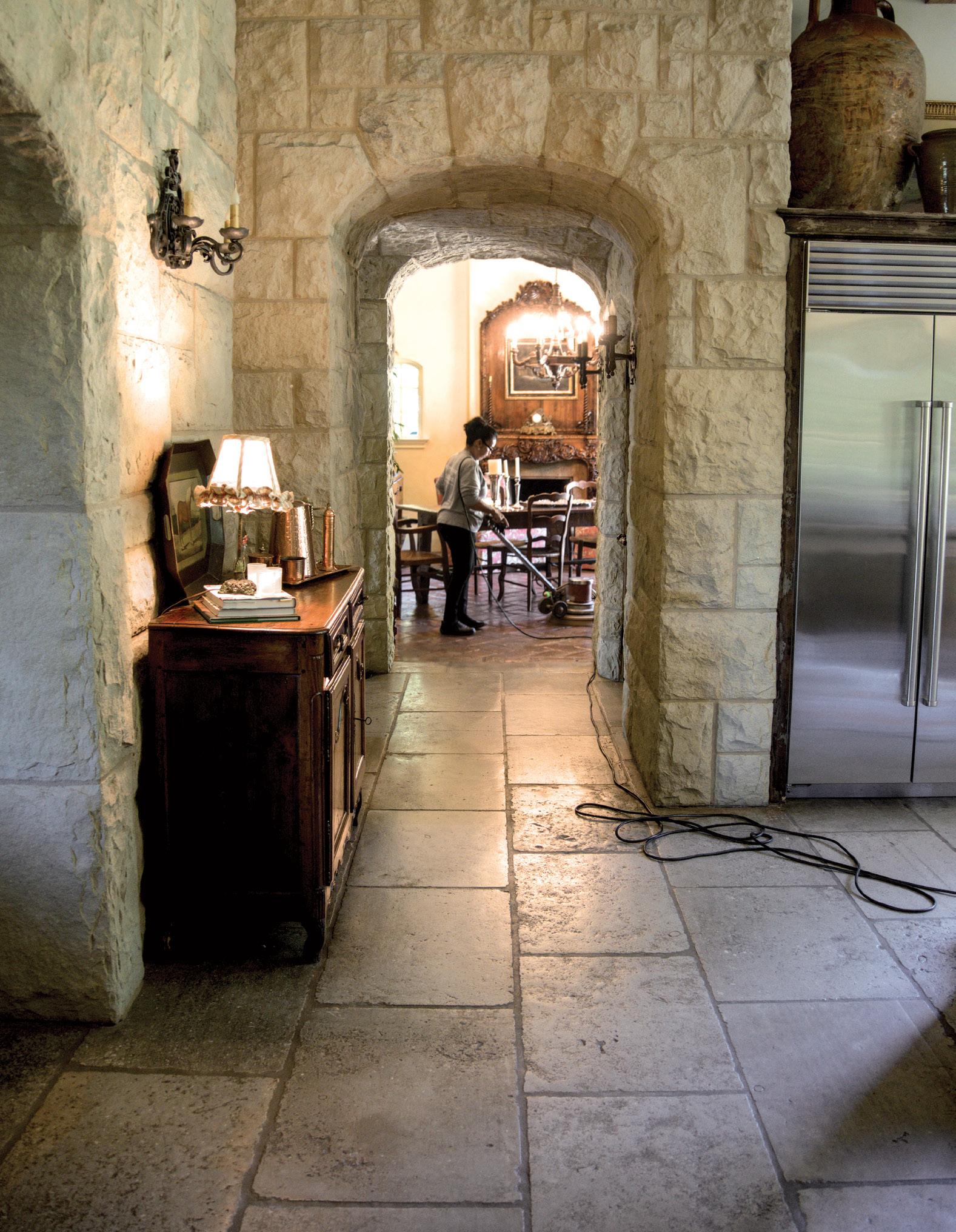
BY TIANA MOLONY

Some people are often surprised to learn that the person in charge of Taylor’s Floor Restoration in Santa Barbara is 59-year-old Carmen De Loera. “People are shocked to see a small Mexican woman in a position of power,” De Loera says.
Not only does she own the business, but she and her husband, Octavio Pimentel, do all the restorations themselves. De Loera sees herself as a floor rehabilitator, an expert doing what she does best. “I love my work; it is like art for me,” she shares. “I don’t see it as hard work.”
De Loera assumed ownership of Taylor’s Floor Restoration— formerly Reef Tile Restoration—in 2017 following the passing of the previous owner, Leslie J. Taylor. Having worked for Taylor for over 30 years and serving as her indispensable partner for 15 of those, De Loera was the obvious choice to take over.
In preparation for taking over the business, De Loera—originally from Zacatecas, Mexico—ensured her success by taking some classes: English to strengthen her communication skills and business to better grasp the administrative side of things.
Floor restoration is a traditionally male-dominated industry
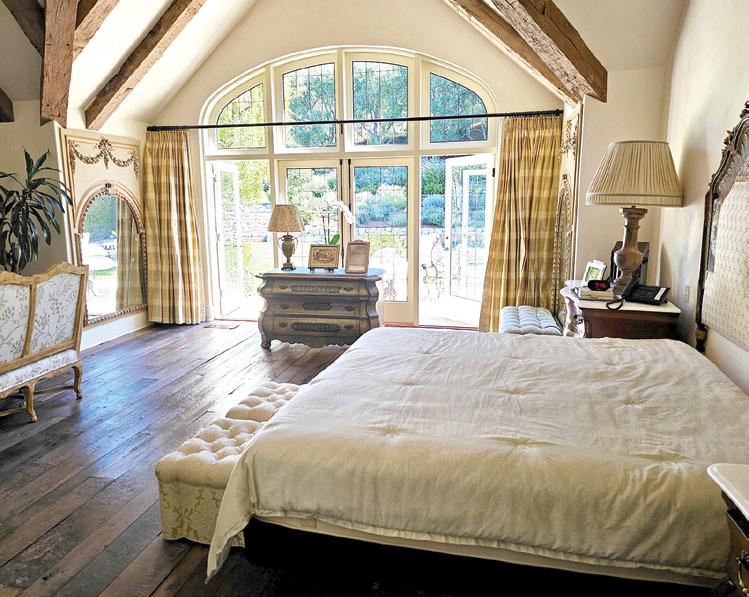
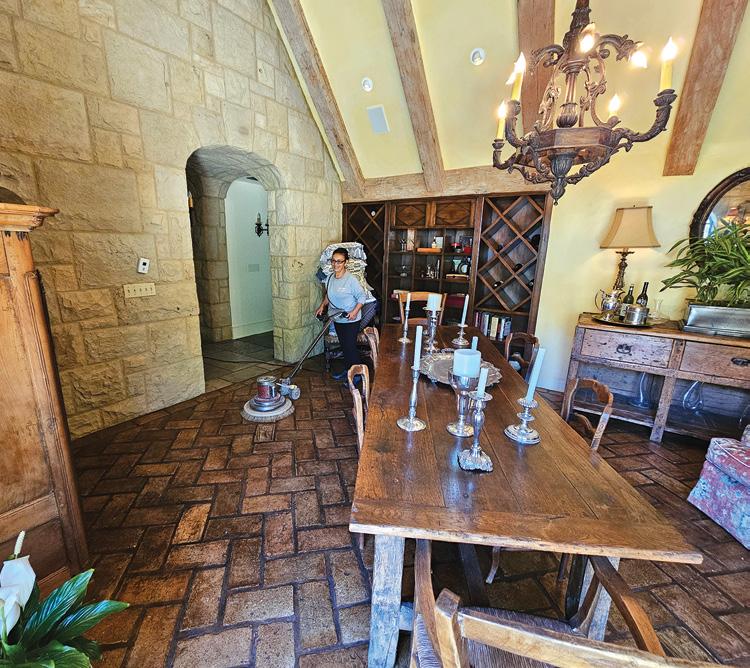
and her presence is a refreshing break from the norm. “It’s really interesting,” she says. “Of course, there are a few times every now and then when you get machismo in the workplace,” she laughs. But for the most part, she receives respect from her counterparts. De Loera’s position of power somewhat mirrors the transformative floor restoration process, where something old is polished to reveal something new and undeniably better than before.
De Loera and Pimentel are masters of the craft. Their expertise takes on a natural rhythm, akin to a thoughtfully crafted dance. “It’s incredible to see not only how well they work together but just how much they get done,” De Loera’s daughter, Brenda Gutierrez, says about their work ethic. “And they’re small,” she adds.
De Loera is approaching 60, but she has no plans to slow down. With modern equipment, she’s no longer working on her hands and knees. “We still do all of the detailed and delicate work by hand, but otherwise we’ve become more efficient over the years with the use of our bodies, our products, and our effect on the environment. I feel good; I’m still working hard,” she muses. “I can still work another ten years.”



Munger and Buffett’s stockholder meetings were like Burning Man for the business set
BY LES FIRESTEIN

Iwas always a wee bit puzzled by the hullabaloo surrounding Charlie Munger’s proposal to solve the student housing crisis at UCSB by building one massive dorm. Charlie had successfully built much enjoyed housing at the University of Michigan and at Stanford. He built the Kavli Institute at UCSB as well as its residences, not to mention the beloved library at the Harvard-Westlake School in Los Angeles. So it’s not like Munger didn’t know his way around a drafting table. Moreover, Charlie Munger was the visionary behind Montecito’s vaunted Sea Meadow HOA—one of the nicest such communities in California, if not the U.S.
Sea Meadow, a collection of French-inspired homes nestled along the coastline, stands as a testament to the unexpected architectural legacy of Charlie Munger—a man better known for his business acumen and pithy phrasing than his eye for design. When I interview Munger just before he passes, he speaks with the measured cadence of someone who’s seen it all. “I’m doing pretty well,” he remarks wryly, “It’s not like being young, but I’m not complaining about life in my old age.” When I tell Munger I’d heard the second century is much easier, he smiles and looks hopeful.
...wasn’t born of passion but of practicality. His uncle by marriage, Frederick Stott, a Harvard-trained architect, designed the first house Munger ever bought and built—and importantly was the chief architect for the FHA in Southern California and who established the standards of architecture that applied to all FHA loans. Munger spent a lot of time around Stott, loved and revered him, and this early exposure to the world of design would prove fortuitous in ways Munger couldn’t have imagined way back then.
Charlie Munger, the “architect of Berkshire Hathaway” and nearly 100-year-old rock star. To give you an idea of how popular Berkshire Hathaway stockholder meetings are, attendance is nearly 50,000. Second place, which is probably Apple, is around 1,000.
The story of Sea Meadow begins not with a grand vision, but with a foreclosure. “That property that’s under Sea Meadow was in the foreclosed property account of a Berkshire subsidiary,” Munger explains. “I was an accidental developer of the land. Plainly speaking, we had to develop it to get our loan back.”
What started as a financial recovery operation soon evolved into a labor of love—and frustration. The development process for Sea Meadow stretched over nearly two decades, a period marked by pitched battles with local authorities and a shifting real estate landscape. “It took us about 15 or 18 years to get the first building permit,” Munger recalls, his voice tinged with lingering disbelief. “Planning permissions in Montecito were even harder to get back then. I think you need to live almost a century like me in order to jump through just the Coastal Commission hoop and that’s before you even get to the County of Santa Barbara.”
The challenges were as much cultural as they were bureaucratic. Sea Meadow was based on a renowned gated community called St. Malo in Oceanside, California, which in turn was based on the town of Saint-Malo, a port city off France’s Brittany coast. “We chose St. Malo as our exemplar for Sea Meadow because it was the most beautiful developed coastal parcel anyone had ever seen,” says Munger. “And St. Malo was based on that town in France because it was the most charming town in France that any of us had ever seen.”
“ The most famous composer in the world was utterly miserable most of the time, and the reason was he always overspent his income. This was Mozart. If Mozart couldn’t get by with this kind of asinine conduct, I don’t think you should try.”
– Charlie Munger

“People make a lot of mistakes. That’s how we get rich.” – Charlie Munger
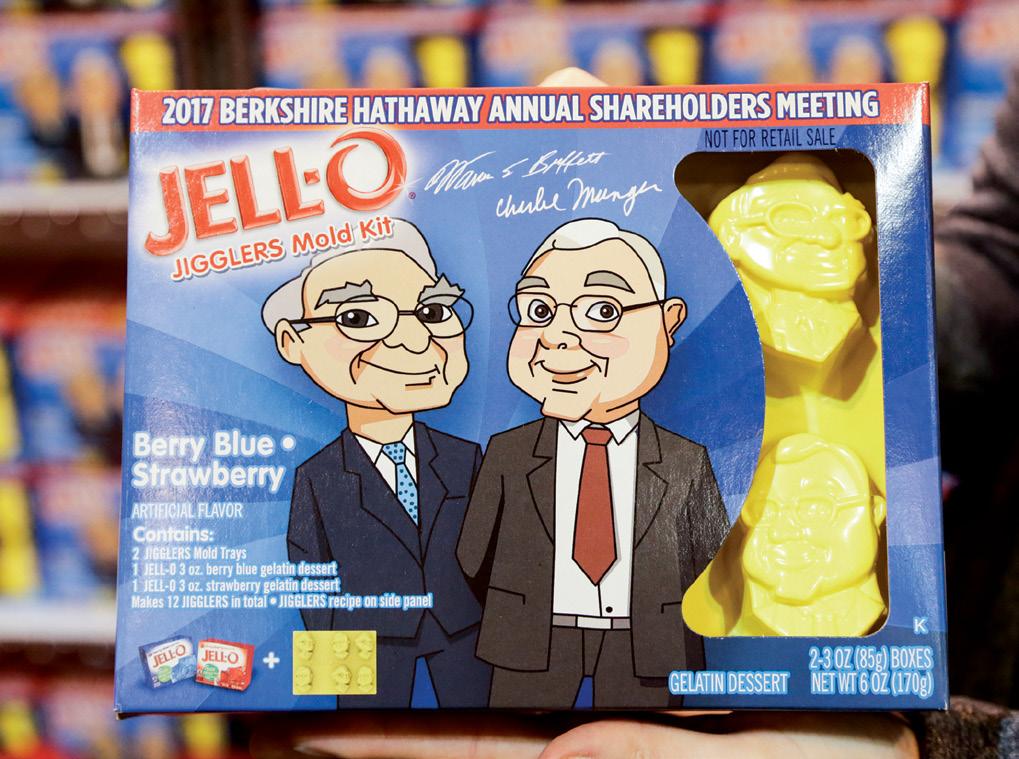


California’s St. Malo was home to luminaries such as the Pillsbury family, the Maytag family, and sometimes Prince Philip and Princess Anne.
Munger says the French style they chose was both a blessing and a curse. Santa Barbara was definitely more familiar with Spanish architecture than with French, so Munger found himself at odds with local sensibilities and some academic pedantry. “The County would hire professors,” he recounts, “and some professor would say, ‘You can’t have a skylight here because no classical French house had a skylight.’ And I’m thinking, ‘That town in Brittany didn’t have electricity either. Does this mean we can’t have electricity?’ Frankly, I didn’t think some professor should be telling me whether or not I could have a skylight that nobody else could see anyway.”
To bring his vision to life, Munger enlisted the help of noted architect Jock Sewall, known for his encyclopedic knowledge of Mediterranean design. “He’s a very likable, good, flexible kind of a guy,” Munger says of Sewall. “Sensible and so forth. Of course, I like him.”
The collaboration extended beyond architecture. Interior designer (see story on page 72) Penny Bianchi played a crucial role in shaping the Sea Meadow aesthetic. “Penny had more influence than any other person in the decoration and so forth,” Munger acknowledges. “She was also the main exterior decorator. I trust Penny’s taste implicitly so she even chose some of the materials in the construction.”
As the project progressed, Munger’s practical nature led to innovative solutions. When faced with water access issues—a common method the County would use to literally close the spigot on development in the area—Munger took matters into his own hands. “We created our own water company there at Hammond’s and drilled our own well for fresh water,” he explains, demonstrating the kind of resourcefulness that defined his career.
(top) Keith Richards may be 104, but Charlie Munger has his own Jell-O mold.
(middle) Charlie Munger and Warren Buffett plushies. How many other nonagenarians have merch?
(bottom) Buffett always called Charlie the “architect of Berkshire Hathaway,” but this label was one instance where Charlie took a backseat.

Today, Sea Meadow stands as a testament to Munger’s perseverance and vision. The development has become a family affair, with Munger recently purchasing an additional home in the community. “My family likes having houses in Sea Meadow,” he says. “My kids like to throw parties. They needed more space.”
Munger’s architectural influence extends beyond Montecito. He has left his mark on university campuses, including the graduate residences at the University of Michigan in Ann Arbor. “It’s their favorite graduate housing,” Munger notes with a hint of pride.
Despite his successes, Munger harbors no illusions about the challenges of real estate development. “Real estate development is a very dangerous activity,” he warns. “And nowadays you’re held up so long getting permits and planning permissions, it tends to be a very difficult way to make a living.
“I developed Sea Meadow because I didn’t want to let the zoning authorities rob me the way they wanted to. Things have worked out now, but at the time I thought that had I let them rob me, we might have had a better financial result.”
As our conversation winds down, Munger reflects on his unexpected journey into architecture and development. “I never tried to make a living or anything out of architecture,” he muses. Yet his impact and legacy on the built environment is undeniable, from the French-inspired homes of Sea Meadow to the innovative student housing at major universities, the Kavli Institute for Theoretical Physics, and the Harvard-Westlake library in L.A.
Charlie Munger didn’t believe in doing anything second best. At the time the Channel Cat was built, it was the largest catamaran in the world. The architect of Berkshire Hathaway brought the same ethos to the development of Montecito’s storied Sea Meadow community.
“ We recognized early on that smart people do very dumb things, and we wanted to know why and who, so that we could avoid them.”
– Charlie Munger
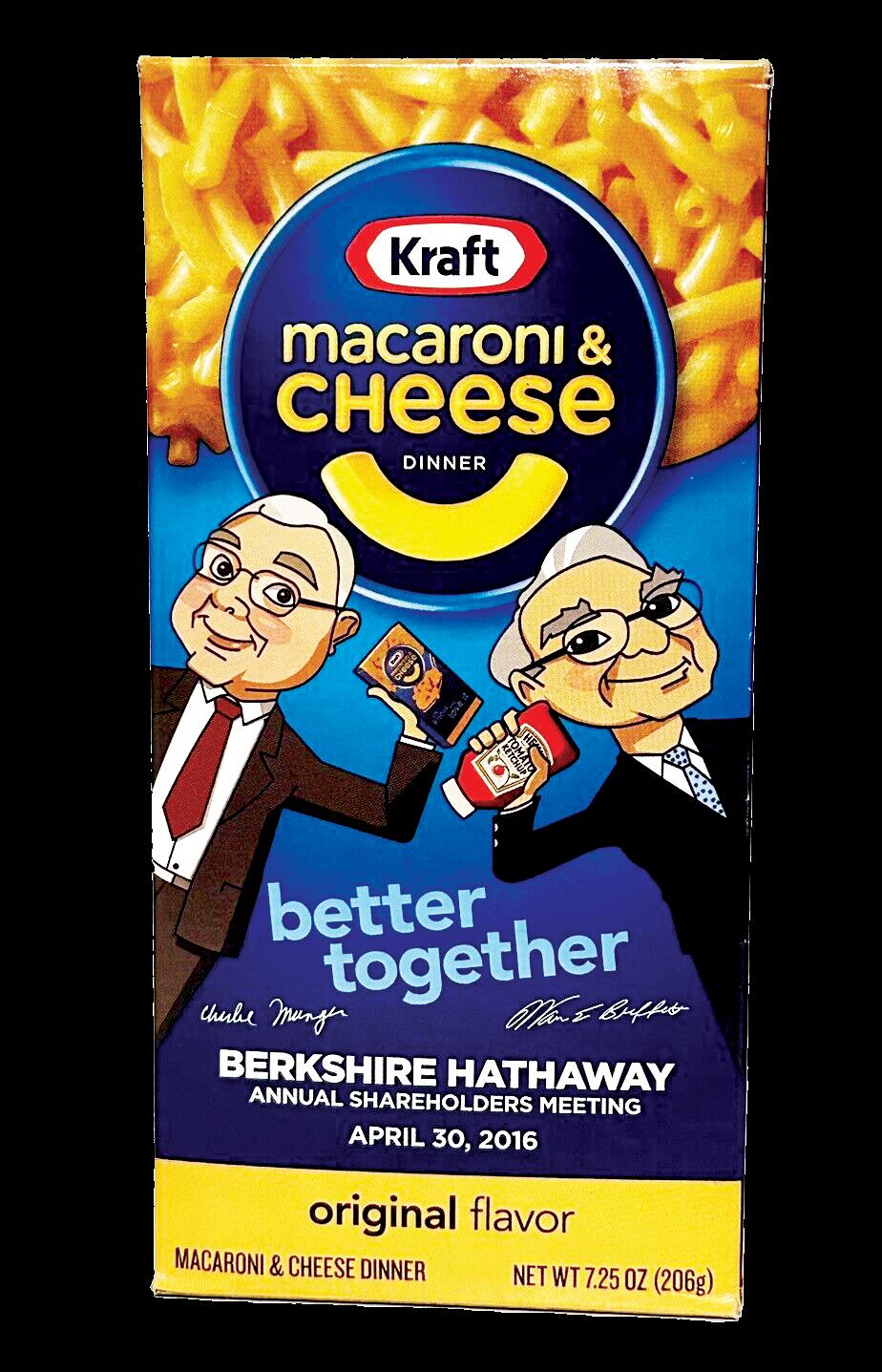
BY JEFF WING
In 2018, Charlie Munger purchased—and then handed over to UCSB—1,800 Edenic acres of nearly primordial Gaviota Coast: Las Varas Ranch. An untouched coastal shangri-la of lemons and avocados, the parcel had to that point only been enjoyed by the local cattle, though the area was also a well-known (if inaccessible) winter surf break.
Munger’s extraordinary purchase-and-gifting of the undeveloped property was made possible by Berkshire Hathaway’s top ranch estates dealmaker Kerry Mormann—someone who has spent 45 years reframing real estate brokerage as an arm of California conservation.
Kerry Mormann is one of those guys whose resting face is a crinkly-eyed smile, and why not? His near half-century expertise in the “conservation easement” real estate instrument has benefitted dozens of private landowners in Santa Barbara County; those enlightened souls who revere their holdings as more than just fungible dirt. The indefinable value that inheres in untouched landscape is not a value everyone is given to see. But for those landowners who define their holdings as the riches of legacy and stewardship, there is Kerry and his wife, Mary Mormann.
“I like to see the preservation of open space and agriculture,” Kerry Mormann said once to an interviewer. “A conservation easement is perpetual, and signifies that the property can never be subdivided. It’s going to stay there.” It’s in the structure of the extremely pliable conservation easement to reward the far-seeing land holder for this magnanimous gesture. The value of the Development That Might Have Been is capably appraised, and that

number is written off state and federal taxes over what can be a fairly lengthy time span. “I’ve been involved in a number of conservation transactions,” Mormann says. He was involved in the Jalama Ranch transaction that famously saw the Nature Conservancy take possession of 24,000 near-wildland acres on the Gaviota Coast, a bastion protected in perpetuity and now called the Jack and Laura Dangermond Preserve.
Joining Berkshire Hathaway HomeServices in 2015, Mormann became director of Berkshire’s new California Properties—Ranch & Lifestyle Division, bringing to the work his own conservationist inclinations. There is very little word-mincing in Mormann’s world. “The motto is preservation of open space and habitat.”
The Mormanns found the transfer of Las Varas to UCSB uniquely triumphant. Recounts Kerry, “Las Varas was an especially gratifying undertaking. A lot of people had looked at the property, including Google and Zuckerberg, before Charlie rescued it.
“I’m not sure people appreciate just how much Charlie gave to UCSB, to the environment, and to higher education generally. When you add the fact that we’re a Berkshire Hathaway company doing this at the behest of one of that storied company’s foundational partners… Let’s just say it was a blessed and uniquely satisfying transaction.
“Then as the cherry on the sundae, after the deal closed, Charlie took us all out on the Channel Cat, his world-class catamaran, to celebrate. Suffice it to say that kind of transaction is not a daily occurrence. Definitely a career highlight.”
“I try to get rid of people who confidently answer questions about which they don’t have any real knowledge.”
In Montecito, where change is sometimes met with resistance, Charlie Munger’s Sea Meadow stands as a reminder that vision, persistence, and a dash of accidental circumstance can reshape a landscape. As the sun sets over the Pacific, casting long shadows across the meticulously designed community, one can’t help but appreciate the legacy of this accidental architect—a man who, in seeking to recover the value of a loan, ended up leaving an indelible mark on one of California’s most cherished stretches of coastline.
As we wrap up, I ask Charlie about the notable 4” thick solid doors in his personal Sea Meadow residence, and why they’re so over-engineered. “When I started out in my house in Hancock Park, I didn’t have much money, so as you’d expect the place had cheap hollow core doors. Years later when I was redoing the place, I told Penny she had to keep those old cheap doors because I never wanted to forget where I came from and how it was back then.” “So what’s with the 4” thick doors you have all around your house in Sea Meadow? Why didn’t you go hollow core again?” I ask. Says Charlie, “I like to be reminded where I came from, but I don’t need to be reminded all the time. And, after all, it is Montecito.”
Charlie Munger has left us with a lot. And, fortunately, it’s a lot you can build on.
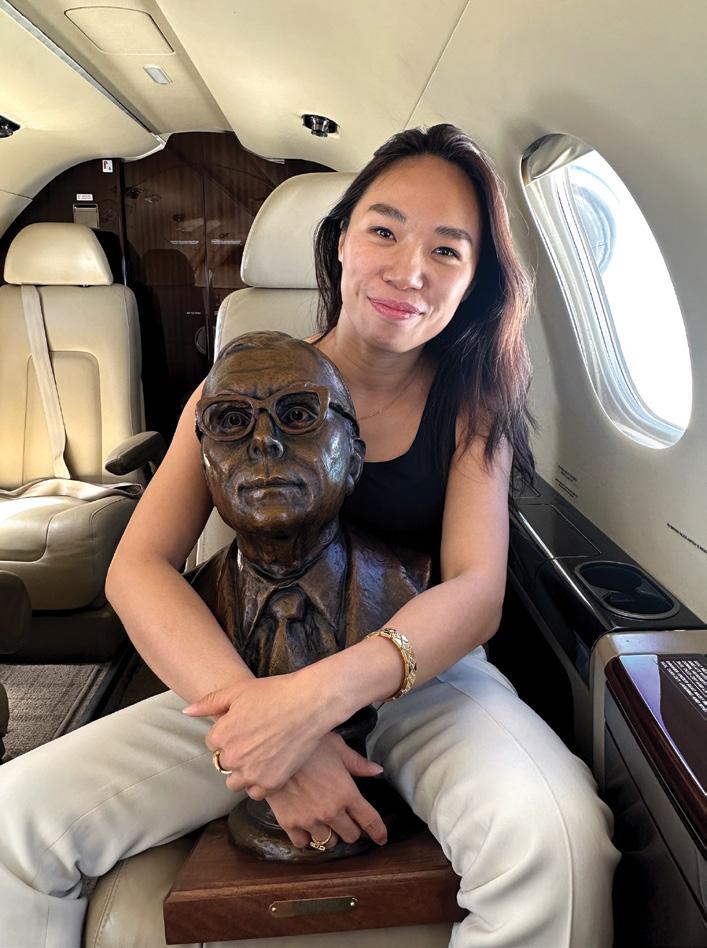
Sculptor Yu Shu has been a Berkshire Hathaway stockholder for 10 years, attending the stadium shareholder meetings. Her admiration for Munger and Buffett knows no bounds. She particularly takes to heart their advice to “invest in yourself.” Two years ago in art school, Shu asked herself, “How can I do what I love?” She founded her own company, Berkshire Legends, that sells her skillfully crafted bronze bust statues of Munger and Buffett. When asked if she made bronze busts of anyone else, she said, “So far, no one else.”
Munger’s 4” thick Sea Meadow doors pay indirect and nostalgic homage to the hollow-core budget doors of his humble Hancock Park beginnings.



BY SOPHIA ORTEGA

Albert Kiefer didn’t have a plan when he entered the art supply store, just a thought that had been ping-ponging around his head for a decade: “I want to pick up drawing again.” While his wife, a painter herself, was checking out, Kiefer picked up a small sketchbook. “Let’s buy this and just start,” he thought to himself. He selected a gray pen and a handful of colored markers—items that would delineate a new chapter of his life.
Kiefer is based in the Netherlands; his home office is about three miles from where he was born. He was an artistic child who worshipped Adam West’s Batman and spent hours drawing comic book characters himself. As a teenager, he told his mom that he wanted to go to art school, but she requested he study to become an art teacher rather than a practicing, but potentially hungry artist. He acquiesced to her wishes. “I was really a very friendly son,” he says of himself. It’s Albert’s nature to be agreeable.

Around the time he was graduating, something unlikely caught his eye, setting him off on his first career—the now primitive computer animation of the Dire Straits “Money For Nothing” music video. “If you see that now,” Kiefer says, chuckling, “it’s so horrible, but at the time it was stateof-the-art. I was blown away!” (It’s worth a google.) So Kiefer got a job in computer graphics as a visual designer. “I’m an enabler,” he says, “in a sense that if people have ideas, I can make them visible.” A love of creation, of executing concepts, has always thrummed through him, but for decades his work lived exclusively on screens.







“I DON’T WANT TO HAVE AN UNDO BUTTON,” KIEFER SAYS. . .

Before his sketchbook purchase in 2016, Kiefer hadn’t drawn with a pen and paper for three decades, woefully out of practice since his days of recreating comic book characters. “I loved drawing these characters,” Kiefer says, “and I loved that I could actually do that. If you train yourself, you could do that. That’s also something that when you don’t do it for 30 years, it’s gone. You have a rhythm when you draw and that rhythm is no longer there.”
But squarely in his middle age, he felt pulled to the hand-scribed, the undeletable. “I don’t want to have an undo button,” he says, “Control Z or Command Z; I don’t want to have that safety net.” Armed with his new implements, Kiefer sat down to draw for the first time in decades. He made two rules for himself: he was going to draw one sketch every day, and that sketch had to be executed quickly.
I often prickle when I hear rules being discussed, especially around art. I’ve witnessed rigidity fail—producing shame instead of any positive output. So often, rules become a measure against which to feel bad about oneself.

. .
.“CONTROL Z OR COMMAND Z; I DON’T WANT TO HAVE THAT SAFETY NET.”
But as I listened to Kiefer describe his daily practice, I realized his tenets were implemented to ward off rigidity. “It has to be done quick. I don’t want to fall in love with a sketch.” Otherwise, he wouldn’t be able to make it a daily practice. He knows perfectionism is not conducive to learning, asking of himself commitment, not precision.
On day one, he drew his bookshelf. On day two, he drew the church visible through his office window. He sketched the items on his desk, a hard drive, a Smurf figurine. Then a local Facebook group posted a picture of a beautiful, historic convent that used to exist in his province of Limburg. Kiefer’s first thought was, “I don’t want to draw that.” The building had an intricate entrance with sculpted figures, much more detailed than he was used to. But he turned his initial instinct on its head, saying, “Well, let’s just do it. I’m not going to make a fuss out of if something is complicated or not.”
Kiefer’s ritual evolved into an ode to architecture, and he is now best known for his lively house sketches. “Advantage of a small city,” Kiefer says, “I do everything on foot. I can go shopping on foot. I can go into town on foot. So I walk a lot, and I see a lot of architecture, buildings from the 1700s, 1800s, all around me. And when I got that positive feedback on Facebook on just that one drawing, it was like, ‘Okay, I don’t have to figure out, like, what should I draw today?’ Because this building’s enough, so why not combine my affinity with architecture and sketching houses?”



In the years since devoting himself to daily imperfection, Kiefer’s craft has snowballed into creative success. On Instagram, his expressive drawings have amassed hundreds of thousands of followers. In 2021, he was approached to teach his signature style in an online course through Domestika, and his first how-to book, Housesketching, was just published last month by Quarto. Next year, he starts traveling to other countries to lead on-location workshops, another undertaking he’s embracing because he’s scared of it.
From what I can tell, Kiefer doesn’t form any emotional connection to his subjects. Most artistic renderings of architecture aim for realistic replication, but Kiefer seems to capture the soul by way of loving caricature. Maybe this is what resonates for his fans. He sees shapes that are interesting or not. He has intentionally trained himself to not be precious, to keep moving rather than letting his ego snag on preconceived standards.
It’s worth noting that Kiefer has never drawn his childhood home. And when I ask if he ever would—to commemorate the structure, perhaps—he laughs. “No!” he says, “because it’s boring!” It’s refreshing, his disinterest in sentimentality. His artistic practice is one of nonattachment, which is how he’s able to return to the blank page day after day with delight.

@housesketcher
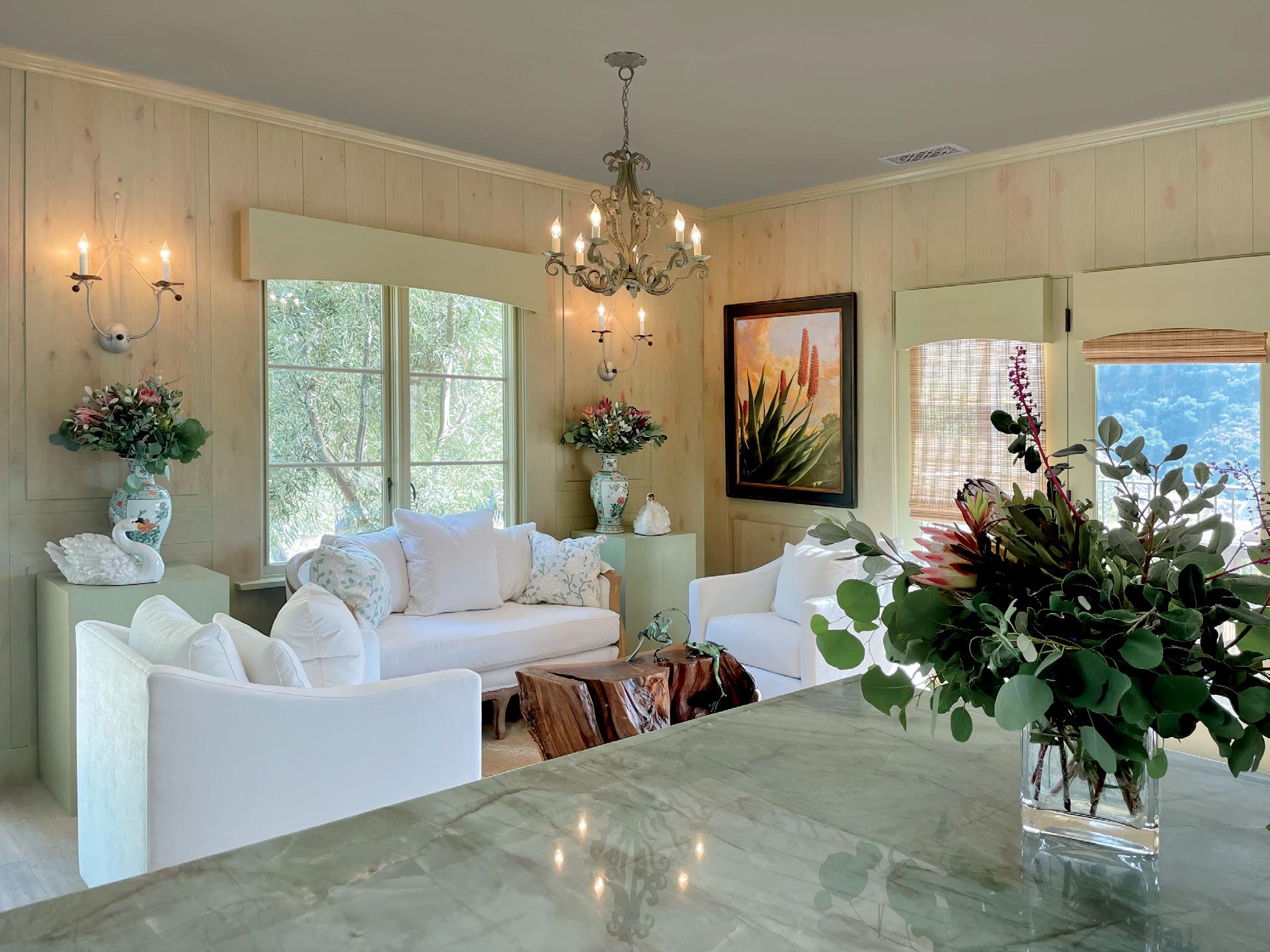










WAS IT
WITH THE CONCRETE SHELL AT 24844 MALIBU ROAD SOON CLOSING ESCROW, IT BRINGS TO AN END YE’S CONTROVERSIAL STEWARDSHIP OF TADAO ANDO’S BEACHY BRUTALIST SHRINE. ARE YE AND HIS DESIGNERS REALLY THE BRUTES OF BRUTALISM THE NEW YORKER WOULD HAVE YOU BELIEVE? OR DID THE LEGACY PRESS GIVE THE RAPPER A BAD RAP?
* FROM WHAT I CAN TELL, THE ORIGINAL SOURCE OF THE “BIANCA NEEDS TO BE RESCUED” NARRATIVE WAS THE HARD HITTING REPORTER KNOWN AS KATHY GRIFFIN, AND THE NEWS ORG BACKING HER UP WAS THAT PLACE WHERE FACTS GO TO DIE KNOWN AS TIKTOK.

Kanye West, who has been passionate about design since childhood and has lectured at Harvard on the subject, recently sold his Malibu beach house designed by the Birkin of architects, Tadao Ando. For those who’ve been living in a cave or in a Ye-designed hut in Calabasas, Kanye got the home in his divorce and proceeded to… modify it… with a sledgehammer. Not as a euphemism. Well, as a euphemism too. But also with an actual sledgehammer.
Originally Ye wanted Ando to oversee his renovations, but apparently the ex-boxer Ando only works omakase, so Ye had the remodel directed by his own design team led by Bianca Censori, who is catnip for TMZ and whose clothes are frequently as minimal as Ando’s designs. But let me just say straight out of the gate that Censori has studied architecture more than Ando has. Much more.
Nevertheless the architectural star chamber was up in arms with what The New Yorker describes as Kanye’s “violent remix” of the vaunted Ando beach bunker. The whole vibe of The New Yorker piece (which greatly influences the global narrative) portrays West as a bull in a china shop (or in this case a Japan shop)—a barbarian who needed to be stopped if only there were an injunctive cure with which to do so. The final days of Ye’s reign over Ando was reminiscent of the end of Biden’s 2024 presidential campaign, and occurred simultaneously, with the pitchfork holders demanding someone “get him out of there” before more damage was done.
For a (50 page!) article, there’s as much missing from The New Yorker’s Kanye narrative as there are windows missing from Ye’s former home. The tacit assumption is that Kanye was (and is) too unhinged and uncouth to show proper respect to an acknowledged Japanese “master.” Unlike the way, say, Beyonce and Jay-Z do in their much larger Ando just up the road.
In their very long exegesis (exi-Yeezus?), The New Yorker bemoans how Ye had come to take possession of the Ando beach house, then vandalized it with the aid of his hallelujah chorus of a design team, led by the modern day Lady Godiva known as Bianca Censori. The New Yorker subheadline reads: “How the hip-hop star’s beautiful dark twisted fantasy turned a beach house in Malibu, designed by the Japanese master Tadao Ando, into a ruin.”
For a publication that’s all about the written word, I find “ruin” an odd choice. I also find it strange calling Ye’s modifications a “violent remix.” Nothing other than Kanye’s property value was damaged by his sledgehammers. And the
man did pay $57 million for the less than 4,000 square-foot house. Unless I’m misreading real estate law, once Ye has the keys, he’s kind of entitled to do whatever he wants.
The New Yorker article disparages Ye’s design team as “young” and wearing “all black” like they’re sales clerks at Balenciaga or outcasts from Zoolander. How old are architects supposed to be, anyway? They refer to Censori’s design team “all… still in their 20s” and as “recent students.” For the record, Thom Mayne (Pritzker Prize) was already doing important work at 28, Bjarke Ingels (wunderkind) at 27, and Jean Nouvel (another Pritzker winner) at 25.
Other prejudices in the article are more curious. The article tosses off that Censori “studied architecture” in college, making it sound like maybe she ingested a few TED Talks and an Audible, whereas Censori actually has a bachelor’s and a master’s in architecture. I’m not by any stretch saying that Ando isn’t a massive talent. But it’s interesting that Ando himself is an entirely untrained architect. However you wouldn’t know it the way The New Yorker refers to him by the more deferential “selftaught.” This might be a good time for you to dust off your old copy of Denise Scott Brown’s Room at the Top? Sexism and the Star System in Architecture.
Bianca Censori, the head of Yeezy design, has a starring role in the West-Ando beef (an updated version of the East-West beef) and has along the way become Ye’s second bride. For anyone unfamiliar, Censori is an attractive, pulsating neon arrow that moves in tandem with Kanye. She’s photographed worldwide in outfits that range from provocative to essentially just nipples with pixels. And in a strange gender reversal of Sharia law, or Chinese custom, in many photos Kanye seems to send Bianca out a few steps ahead while Ye demurs, most often cloaked, and lets Censori take the lead.
Their public arrangement reminds me of the carved maidens that were mounted to old ships. These figureheads were the first thing people saw from the coast, which in this case means from the rocky shoals of Nobu Malibu. I looked up the origin of nautical figureheads and learned they were forward facing “displays of power and might.” That’s for dang sure.
The press likes where they have Censori. She’s grade-A clickbait, and reporters with a savior complex debate whether or not she needs to be rescued. There’s no evidence she’s under any sort of duress and a lot of evidence Ye-Anca is legit happy, and that Bianca is managing a relationship with Ye as well as anyone.
Censori probably isn’t making choices you or I would make. Then again, I can’t rock a roll of gaffer’s tape like she can. From what I can tell, the original source of the “Bianca Needs Rescue” story was the hard hitting reporter known as Kathy Griffin, and the news organization behind her is that place where truth goes to die, TikTok. Seems not a lot of Anderson Cooper rubbed off on Griffin all those New Year’s Eves. Nevertheless, the global press ate up the Bianca Censori damsel-in-distress story, then regurgitated it up like a fly before eating it again and again.
The press is so dismissive and objectifying of Censori that I decided to crawl down that rabbit hole myself to see what’s down there—as should you. What I can tell you is for an exhibitionist there’s still a lot of Censori you haven’t seen.
SHARIA LAW, IN MANY
KANYE SEEMS TO SEND BIANCA OUT A FEW STEPS AHEAD WHILE YE DEMURS, MOST OFTEN CLOAKED, AND LETS CENSORI TAKE THE LEAD

CENSORI HERAPPARENTLY,WITH, BEEKEEPER
Apparently Ye’s first wife hates Censori for the obvious reasons, among them that Bianca looks like the inspo pic KK brings to her plastic surgeon. Censori is beautiful, 15 years Kim’s junior, and seems to be a doting stepmom to her step-kids. She and Ye seem to be having a good time (though who the heck really knows). But I can tell you that if you take the time to watch Bianca’s lectures (which few people have) she’s articulate, passionate, interesting, and knows of what she speaks.
Go online and find her design stuff—it’s innovative, futuristic, and primitive at the same time. Her work is thought provoking and looks as good as a lot of the stuff you see in high-end magazines like this one. Are Censori’s Albert Frey-looking plans for the desert on a par with Ando’s Area 51-looking design for Kim’s desert spaceship? I’m not saying that Bianca is Amal Clooney or Neri Oxman but I’m also not saying that she’s not—the architectural designer is only 29, so give her a minute to emerge as Frida Kahlo to Ye’s Diego Rivera.
It’s much harder for women to be taken seriously in the business of architecture which is, after all, completely male dominated and all about the erection. So maybe Bianca isn’t doing herself any favors with the Pritzker committee or her choice of attire. Then again, unusual costume has never been a factor for Peter Marino, who has chosen to live his life as a full-on Village Person— to very little comment, objection, or fanfare. So what if Censori treats every trip to Del Taco like it’s the Met Gala? So does Timothée Chalamet.
Another hole in The New Yorker story is the omission of the “revenge mansion” narrative.
The article is, after all, the story of a great artist destroying another artist’s great work. But with nary a guess as to why. Why would West attack his own home like a lost January 6th insurrectionist?
One obvious theory is that Kanye (as chronicled on Keeping Up With the Kardashians) was the one who introduced the formerly Postermat-wandering Kim to fine art— brands like James Turrell and… Tadao Ando.
Apparently when Kanye first got the legendary Ando on the phone, he was screaming at him with enthusiasm reminiscent of Cuba Gooding Jr. yelling “Show me the money!” That’s tonally how The New Yorker depicts it. But their Far East-West honeymoon was short lived in that Ando, a winner of architecture’s top honor the Pritzker prize, doesn’t really need to collaborate.
When Kim and Ye divorced, they shared custody of the kids, but Ye must have felt betrayed when, just like that, Kim took Ando, and Ando took Kim, in holy patrimony. Then Kim quickly set about building her Ando: a 42,000 square-foot concrete spaceship near Palm Springs. In other words, KK’s Ando would be more than 10 times the size of Ye’s. Tadao! How you like me now?!


THE ARCHITECTURAL DESIGNER IS ONLY 29 AND MARRIED TO A CREATIVE NUCLEAR POWER PLANT SO GIVE BIANCA A MINUTE TO EMERGE AS FRIDA KAHLO TO YE’S DIEGO RIVERA.
Kim then quickly set about doing what Kardashians do—posting pics of herself—with Ando. And KK’s Insta-savvy seems to have had the desired effect: in rapid succession Kanye threw his game board up in the air, laid waste to his own home, and put it up for sale like just another broken shell on Malibu Beach. And while the “revenge mansion” narrative explains a lot, I believe Kanye’s bipolar diagnosis is really the Rosetta Stone that explains it all...
The New Yorker article on Ye skims over bipolarity, simply saying that Kanye has it, as does the guy he hired to pull apart his house. That is the only mention. But I would posit that Kanye’s bi- or even tri-polarity actually explains everything about his war with 24844 Malibu Road, his war with Ando’s masterpiece, with Kim, and even Ye’s war with himself.
Naomi Jackson, a professor at Rutgers who suffers from bipolarity (formerly “manic depressive disorder”) wrote an excellent essay about the affliction. “When you’re bipolar, chaos is always lurking,” says Jackson. People with bipolarity describe having “mania” 25% of the time and grappling with depression most of the rest of the time. Jackson continues, “I know that just below [my] heights of creativity there is a winding staircase that leads to mania.”
Staircases are important to Tadao Ando and to Kanye West, but in different ways. With Ando that’s his jam, with expansive if not disproportionate staircases generally a major feature of his architecture. While staircases terrify Kanye, who apparently prefers ramps.
My theory, not hard to support, is that Kanye is a creative nuclear power plant but with Van Gogh levels of self-torment. His Malibu beach home was supposed to be a place where the surf would drown out the noise in his head. It would be Ye’s sanctuary and lab—where his restless mind could strip life down to its base parts like a physicist with a particle accelerator—trying to smash things into smaller and more manageable things to finally get to the fundamental and foundational building blocks or bedrock of Life, or at least of his life. Of course this was destined to fail. Because when the windows are closed, the noise in Ye’s head drowns out the surf.

have both chosen to live their lives on the global stage. By Kanye’s own telling he has a mental illness that would benefit from treatment. The problem is when all the world’s your stage, there is no offstage. Will Ye ever find the sanctuary to work all this out? One thing’s for sure. It’s not a walk at the beach.
I wish these newlyweds luck.
“I REALLY DO BELIEVE THE WORLD CAN BE SAVED THROUGH DESIGN, AND EVERYTHING NEEDS TO BE ACTUALLY ARCHITECTED.” – FROM KANYE’S LECTURE AT THE HARVARD GSD


























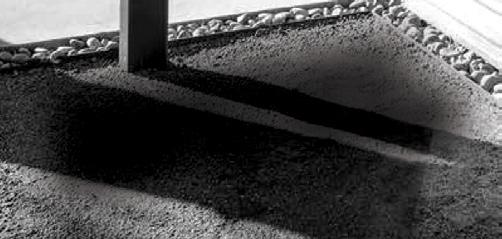





















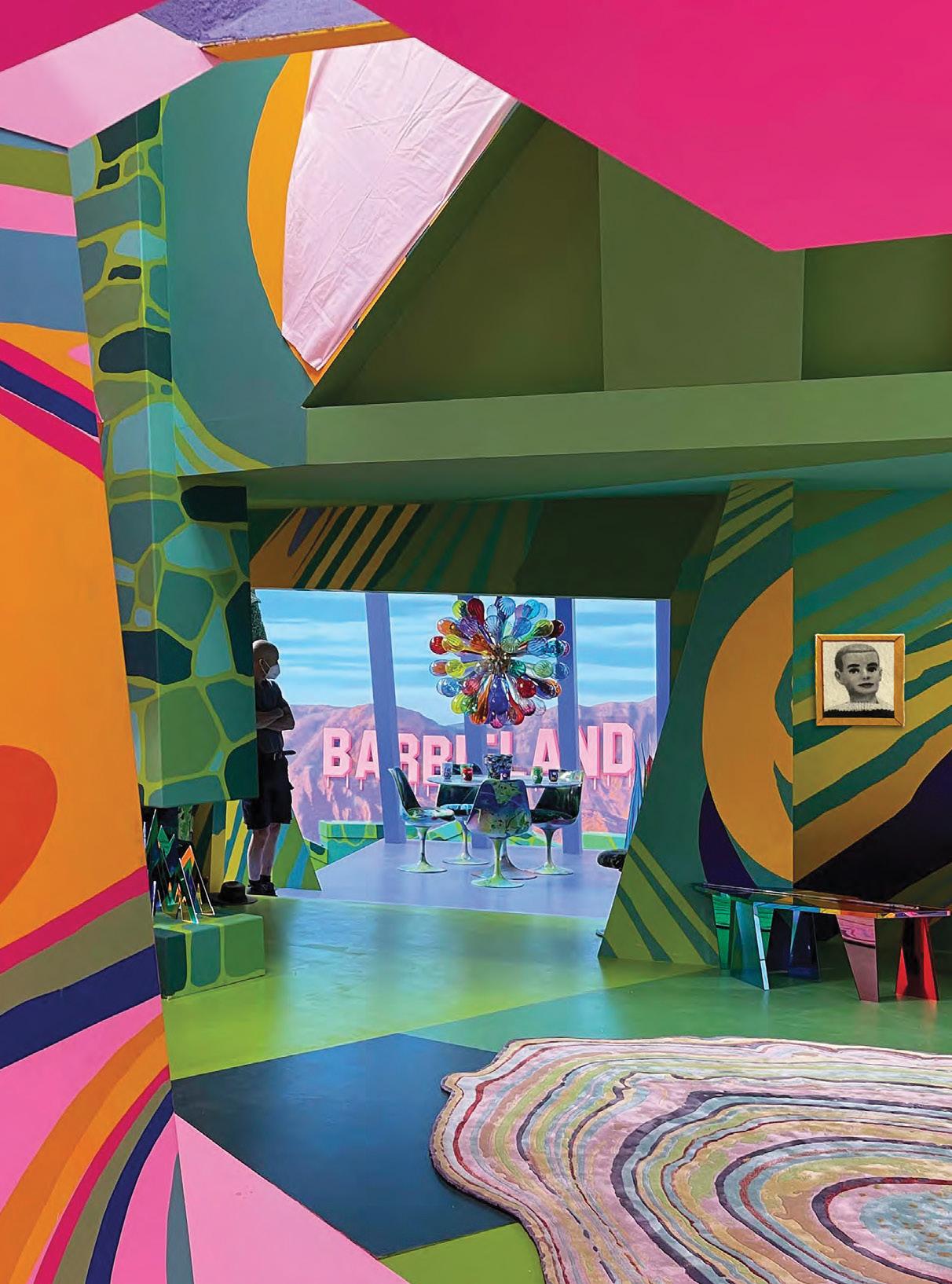

















®

n a tree-lined street in Los Angeles’ bustling Koreatown, up a flight of stairs, and inside a bright apartment exists room after room of stunning 1920s and 1930s-era tile. Multiple entryways are illuminated by extravagant gold chandeliers. There’s half a dozen art deco-inspired bathrooms, dramatic vaulted ceilings, and at least two immaculate vintage kitchens. Except these impeccable rooms aren’t part of a wild apartment plan, and they aren’t even accessible by foot. Unless maybe you’re a mouse. They’re the work of artist Chris Toledo who crafts meticulously made World of Interiors-worthy micro homes. If Barbie only dreamed a little harder, she could’ve been living it up in one of these dream houses instead.
“I love it because it combines a little bit of everything. There’s woodworking and painting. It involves historical knowledge and architecture,” Toledo says about his work that has garnered him the nickname, the Michelangelo of Miniatures.
For a guy who works in miniatures, Toledo’s matchbook-sized Craftsman fireplaces, pea-sized lighting fixtures, and tiny tubs have certainly amassed him a sizable following. He posts images of his work online, like a stunning early 20th century reproduction micro kitchen decked out in subway tiles and a green-checkered floor. For scale, Toledo adds something like a spoon or a bulb of garlic that appears gigantic next to the micro furnishings. Viewers feel like they have fallen down a rabbit hole and into a tiny bygone architectural era. It’s shockingly realistic, otherworldly, and makes you wonder what the asking price is.

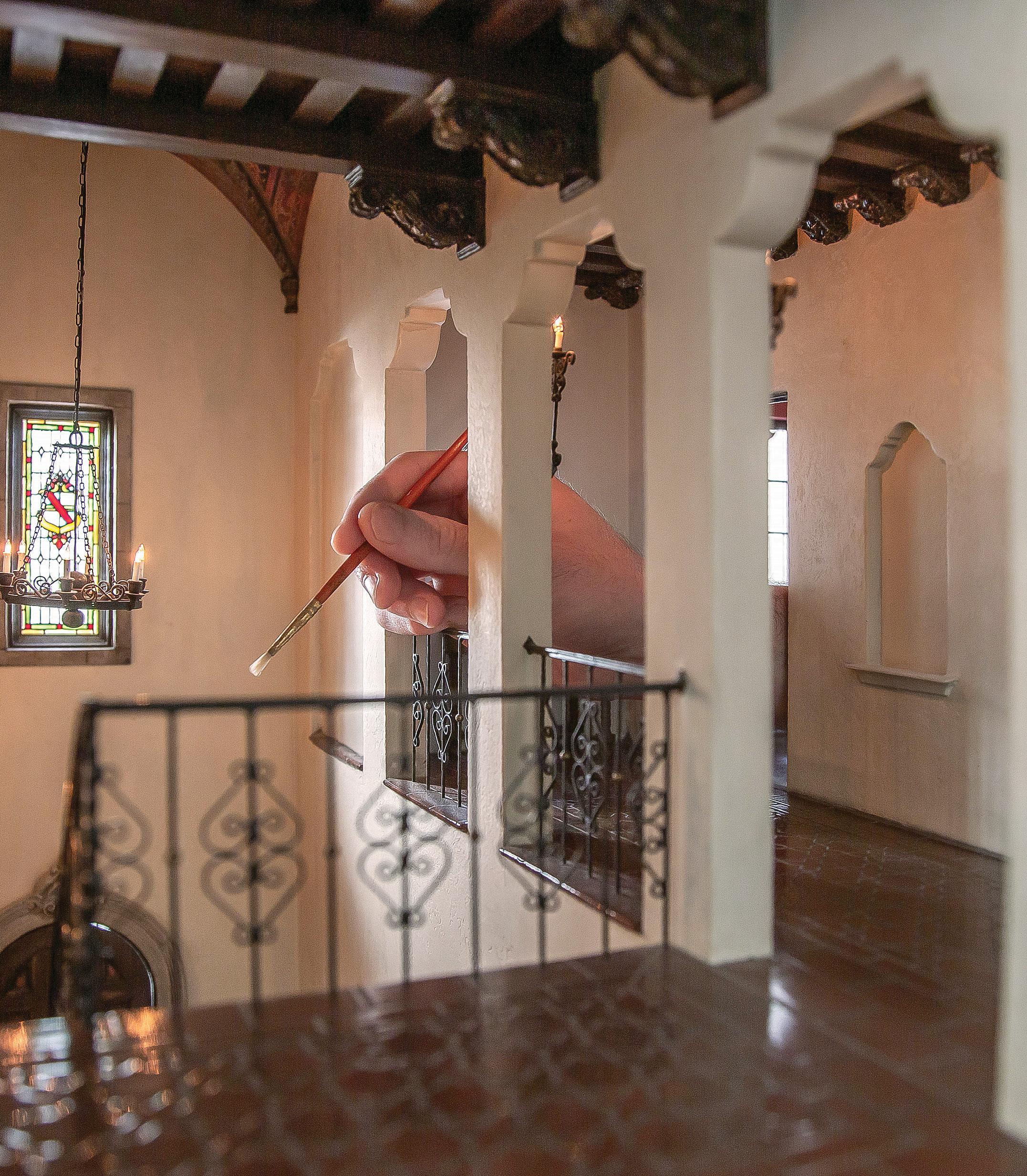

“Inever imagined that people would respond to it the way that they do,” Toledo says. “The other day, on Instagram, I got a message from Jaden Smith saying he loves my work. And when I first started going viral for some of my pieces, Gigi Hadid started following me and she reached out and said ‘your stuff is amazing.’ I’m like, are you for real?” Toledo says.
When his work first blew up in 2016, Toledo was working in fashion and doing photography. “It wasn’t terrible, but I didn’t love it. And all of a sudden having all this attention on this hobby that I kept secret almost my whole life up to that point… It was wild,” he says. “I never imagined that dollhouses would be what I would build my career in.”








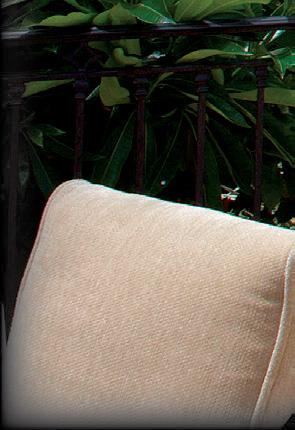




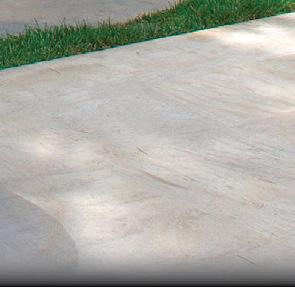


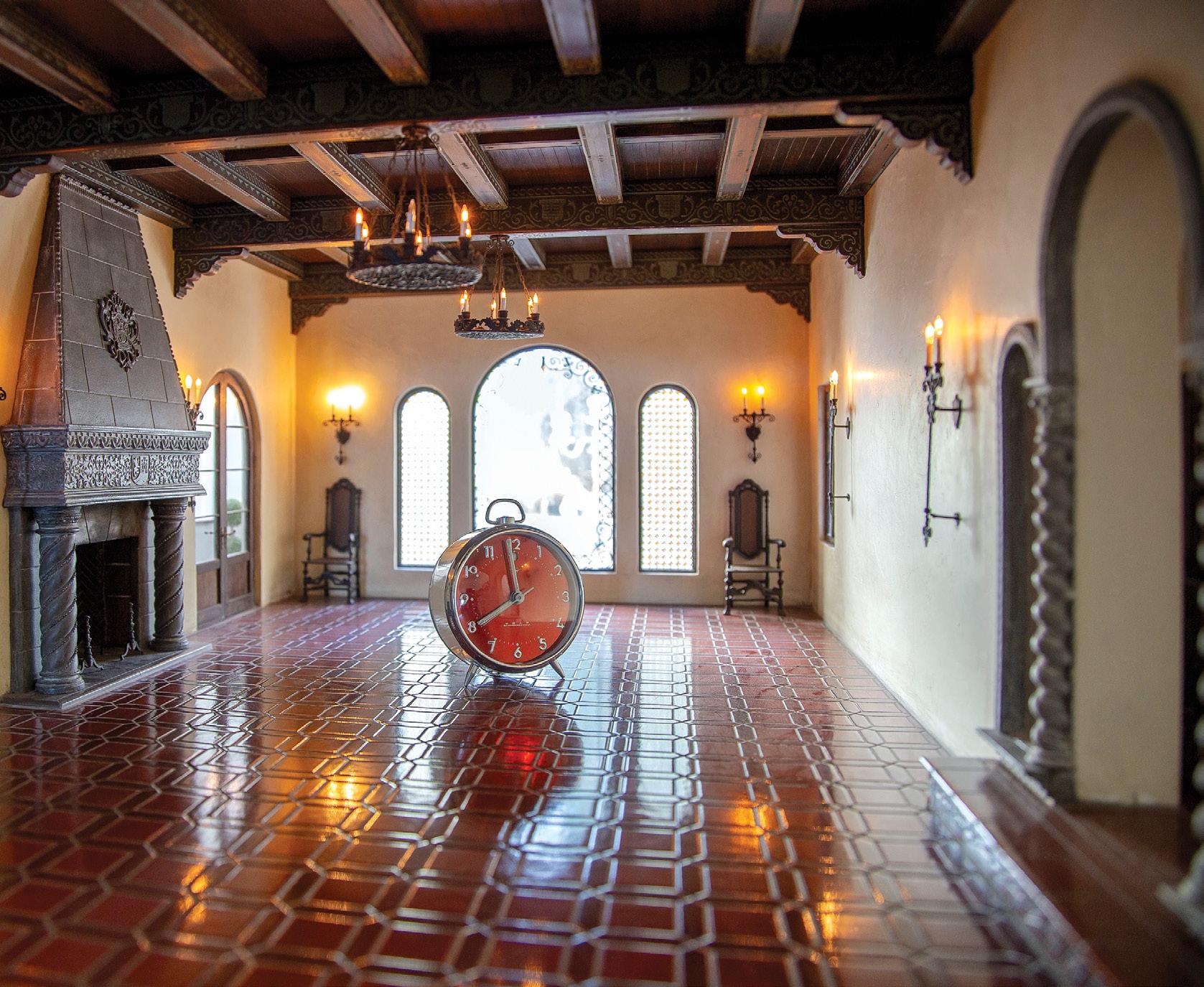
“I love it because it combines a little bit of everything. There’s woodworking and painting. It involves historical knowledge and architecture.”
There’s something comforting about visiting the absolute perfection and controlled space of Toledo’s tiny rooms. They invite fantasy and play instead of the headaches that can come with actually experiencing escrow. And, for Toledo, it offers limitless creativity that’s not confined to his small twobedroom apartment along with an artist’s path lucrative enough to lead eventually to life-size homeownership.
Toledo first discovered miniatures when he was a kid. He recalls being in the dentist’s office riveted by a magazine called Nutshell News, which featured pages of dollhouses and their artists, including one spotlight on a miniature of the iconic Gamble House in Pasadena and the couple who made it. “It took them years to do, but they created all the stained-glass windows. All the Arts and Crafts style—they nailed it,” Toledo
says. “Up to that point, anything dollhouse related I thought of Barbie’s pink Malibu plastic dream house. This was something I had never encountered before.” If only we could all be so inspired at the dentist’s office.
Toledo’s inspiration comes largely from growing up in Southern California. His parents moved to California in the late 1970s from Argentina, and he was born in Hollywood. “All of my favorite styles of architecture are highly showcased in Los Angeles. I really love Tudor Revival, Spanish Revival, Arts and Crafts, and Craftsman,” he says.
Toledo grew up near a spate of star 20th century architectural homes in Alhambra. He would often trail his dad while he worked on such homes as a woodworker and construction worker. “He really appreciated the architecture so he would

always talk me through it, and I’d help a lot with the work,” Toledo says.
Perhaps most importantly, the family garage had a woodworking shop and Toledo—when no one was looking— started doing his own work in there. “I used to make my own little stuff… And I kept it to myself, my own secret hobby because I was a kid in middle school. I didn’t want to tell people that I was building dollhouses.”
As he got older, Toledo delved into different artistic mediums like large-scale painting, photography, and interior design. He studied fashion. He also started building a Spanish Revival miniature like the ones he grew up admiring. “I had never seen anything like it in the miniatures community, so I decided to make it myself,” he says. It was this work that lit up the internet
and brought him his legion of admirers.
If it weren’t already implied, Toledo’s also a diehard DIY guy. It shows in his work. He’ll do months of historical research, getting scrupulous about incorporating the small details—like laying down 6,000 hand-painted red barrel tiles for the mini mansion’s roof, or adding a teeny cobweb on a lighting fixture to make it appear more life-like. Anything he can’t easily source he creates himself. He taught himself how to solder brass scroll railings. He makes his own tiny pillows.
That ethic also shows up in the creative flourishes found in his own apartment. Showing me around his place bedecked with vintage curios and a houseplant bounty, I notice an artful fireplace screen in his living room. “I made that last weekend,” he says.
“Neither did I...”


“I never imagined that dollhouses would be what I would build my career in.”
“Iwas on the Urban Outfitters website and they had sold out of the screen when I found it. It was 300 bucks. And it was metal. I thought, well, I don’t need it to be metal. I pulled out all my miniature tools, designed a version of it on my computer, and laser cut it,” he says.
“Then I had some screen material leftovers and I put the screen in there and spray painted it all black.” Michelangelo, indeed. Toledo is a true Renaissance man.




Sherry, a graduate of the University of Padova, Italy, is a 21st-century artist specializing in the time-honored craft of hand-painted tile murals inspired by the 16th and 17th century Italian masterpieces. Her work blends traditional techniques with contemporary design, creating unique, vibrant tiles that bring a touch of Mediterranean elegance to any space. Whether you are looking to add a splash of color to your home or a custom design for a special project, her tiles will infuse beauty and character to any space.

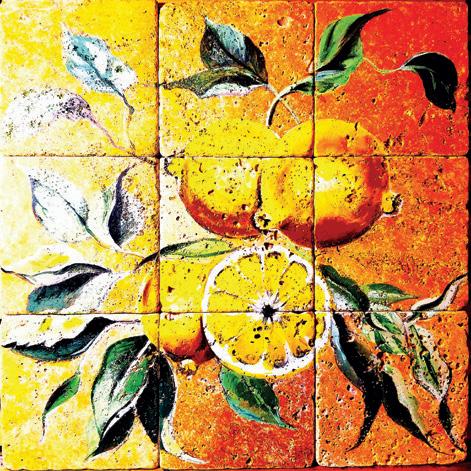
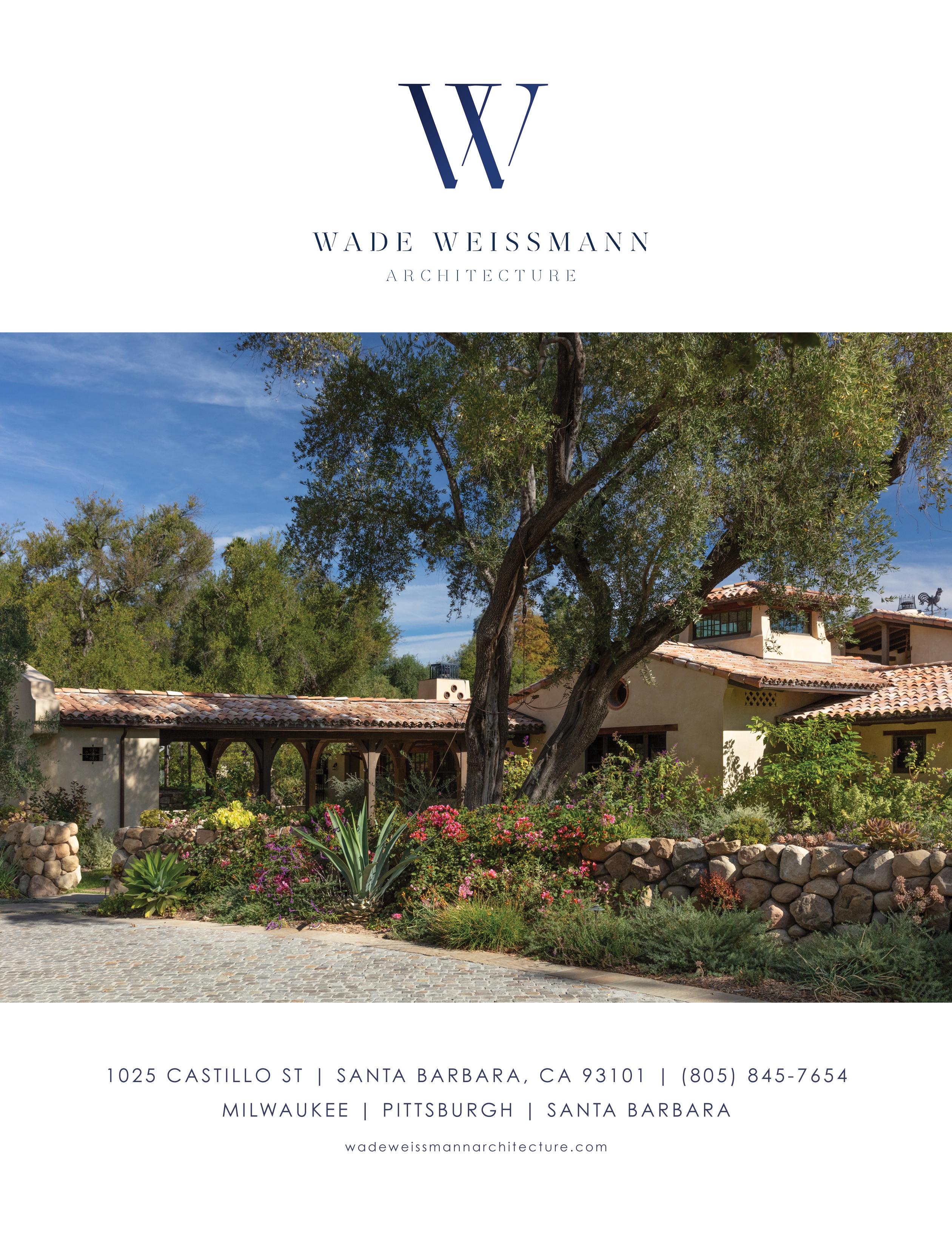
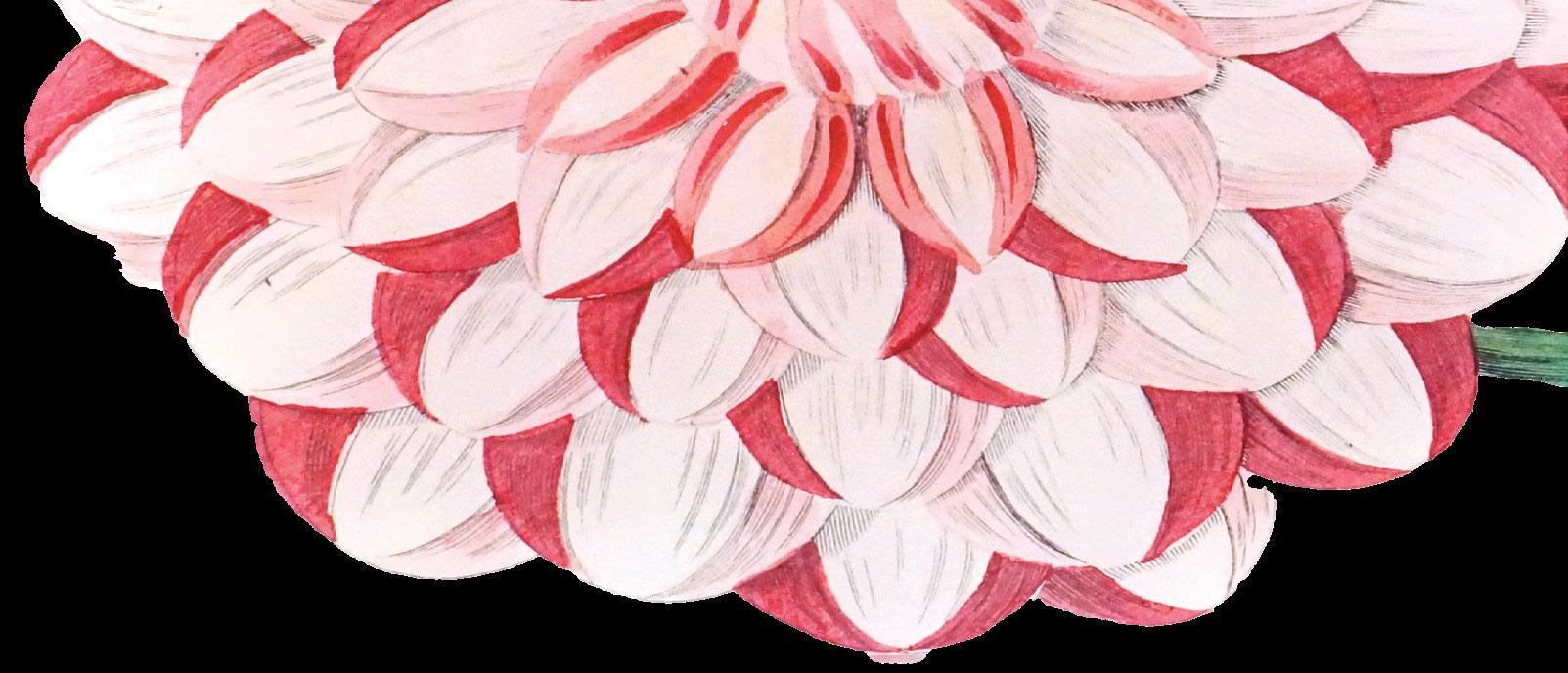
If Wes Anderson had a home goods store, it would be John Derian Company.



Rome wasn’t built in a day, and there’s a reason for that. The guys in their togas and laurel leaf tiaras spent a lot of time hunched over stone tables piled high with drawings and plans—thoughtfully choosing the squat doric column for its load-bearing qualities, penciling out their (still annoyingly celebrated) system of aqueducts. It took a while to put everything together, but that empire lasted a couple thousand years.
John Derian’s empire is of a different vibe. From linocut prints to antique porcelain vegetables, and from an Astier de Villatte Joséphine Bowl on Stand with Hands (you know the one) to Derian’s much-sought-after hand-manufactured functional art, the order of the day is beautiful disorder.

The man himself is many things—accidental tastemaker, thought leader, globally beloved curator, undisputed Neil Armstrong of Decoupage—but a detail-obsessed planner he is not. For all that, the empire encompassed by the John Derian Company Inc. (est. 1989) is at least as hearty as that of ancient Rome, and touches the same conquering breadth of global cartography.

John Derian’s baby is fabulously flourishing in some 21 countries, having launched more than three decades ago without a blueprint, thank you very much. Slap a blueprint at John Derian today and he will glue it to a plate.
“I just can’t even imagine planning ,” he says with goodnatured disgust.


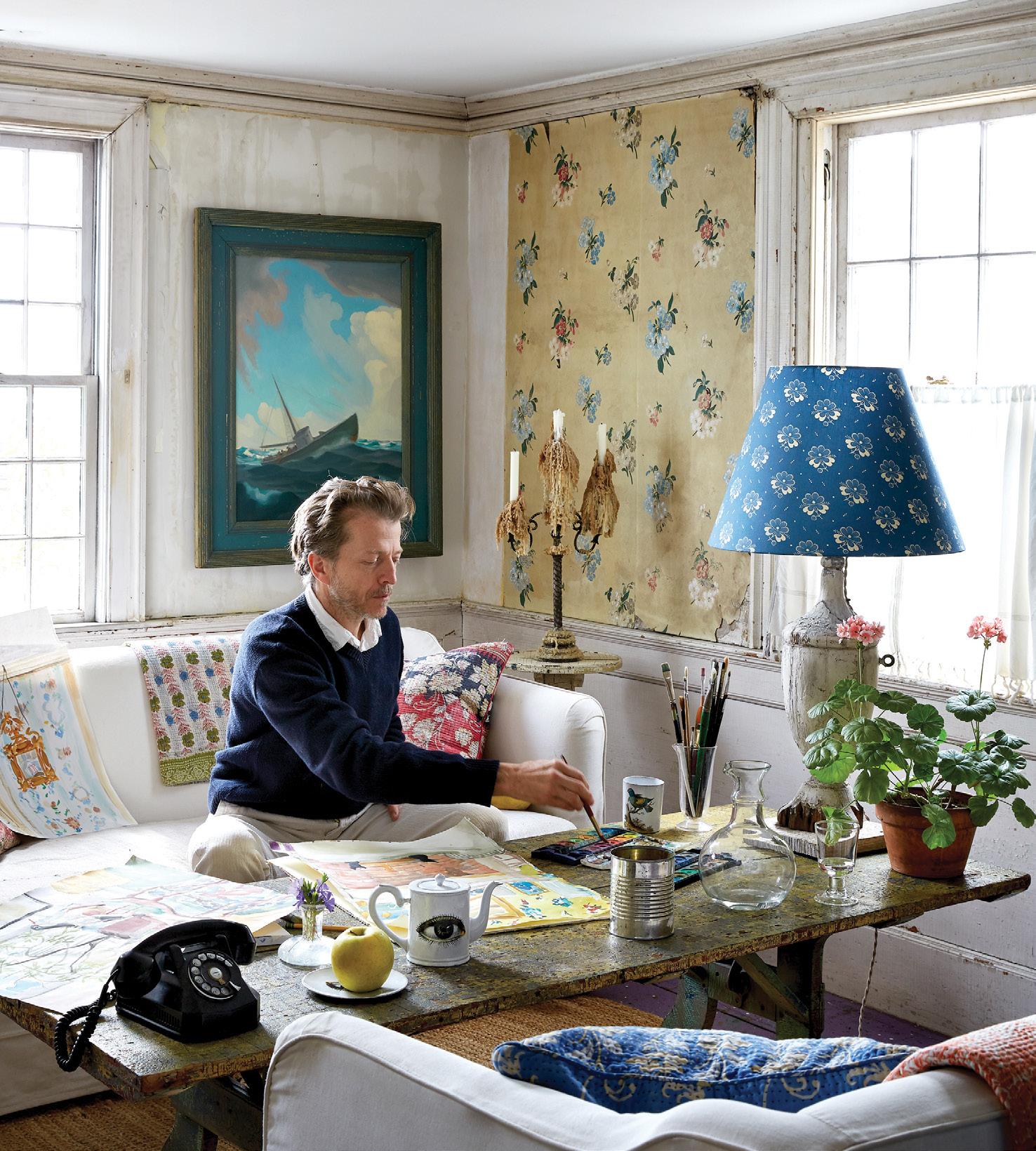
by
Despite this absence of strategic brow-furrowing, John Derian Company Inc. today has five shops, three in NYC’s East Village, one in NYC’s West Village, and a seasonal shop in Provincetown (though they’ve proliferated everywhere). Enter those three adjoined, globally celebrated “home stores” on Second Street and you are, in effect, seeing both Derian’s roiling, beauty-obsessed id and his origin story. The place’s chaotic wallto-wall-to-ceiling objets comprise an indescribable menagerie of repurposed Victoriana, pre-industrial hand-tinted etchings of fish and horticulture, and tea towels of such delicious iridescence and

texture you want to stuff them in your mouth. Vibrantly colored water lilies and moonscapes and eyeballs stare out in subaqueous wonder from globular paperweights.
This description doesn’t begin to scratch the surface, and good luck finding a surface as you wander dazedly through his store, where the décor indecorously crowds every inch, the enchanting merch appearing to have been excitedly flung by a whirling dervish. John Derian has remade home décor in his own image with a candy-colored frisson of bracing old world oddness. What happened?


IBY ZACHARY BERNSTEIN
know for a fact that I’ve been to the Woodland Park Zoo in Seattle, but it was so long ago I have almost no memory of what I saw there, save for two animals: the elephant and the giraffe. They were just too big and majestic to forget. I also remember how I felt just being in the presence of these creatures: awestruck, deferential, and at a poorly-postured 5’10”, not terribly tall. There must be some similar thinking behind the rising popularity of the decorative element known as Big Shiny Balls, a name that’s as smirk-worthy as it is onomatopoeic. “I’ve always been a big believer in scale,” says Shawn Kolodny, the artist and entrepreneur behind the shiny balls. “Big attracts attention.”
I look at these balls. I consider them; inflatable—and deflatable—eye candy that makes a room or a backyard suddenly become the place to be. Some are iridescent, some mirrored, some clear. They even have some Big Hairy Balls (although, not to be a semantic pest, but those balls look more furry than hairy to me).
Before Kolodny made a big business out of his big balls, he was a sculptor who created large-scale art installations made up of, well, big shiny balls. (Who would have guessed?) Their big shiny presence on social media made its rounds to the point where people kept asking Kolodny where they can get some big shiny balls of their own. There was a demand, and Kolodny was happy to supply.
We can be grateful that Kolodny isn’t the kind of artist who would refuse to commercialize his artistic vision. There’s a time and place for that; this is neither. This is art that was meant to migrate into the commercial sector. As the balls are balanced gracefully from the ground, climbing up past the veranda windows, and over the roof, one could feel the evocative sensation of being inside the glass of Champagne rather than merely drinking it. These balls know how to party.
For all its visual wonder, Kolodny concedes that Big Shiny Balls mainly appeals to three segments of the population: event planners, balloon people, and “rich people with pools.” That last one makes sense; the pairing of the balls with a pool is a natural fit. They rise over the water like the crystals in Superman’s Fortress of Solitude, just not as pointy. But wait, did he just say, “balloon people”? Yes, the balloon community is real and he unwittingly, by way of industry, became one of their treasured members. “I didn’t realize what a large subculture that was,” he says.
Subtlety begone! That’s the takeaway we can get from these mesmerizing spheres. They might not be elephants or giraffes, but you’ll never forget how they made you feel.
bigshinyballs.com

Derian’s success was not forged in the wake of an MBA, and we are grateful. His corporate origin story is a stumbling dance of self-discovery and joy in beauty. His ascent to Captain of Industry worked around the usual tieand-suspenders touchstones. “I mean, I took tickets in a movie
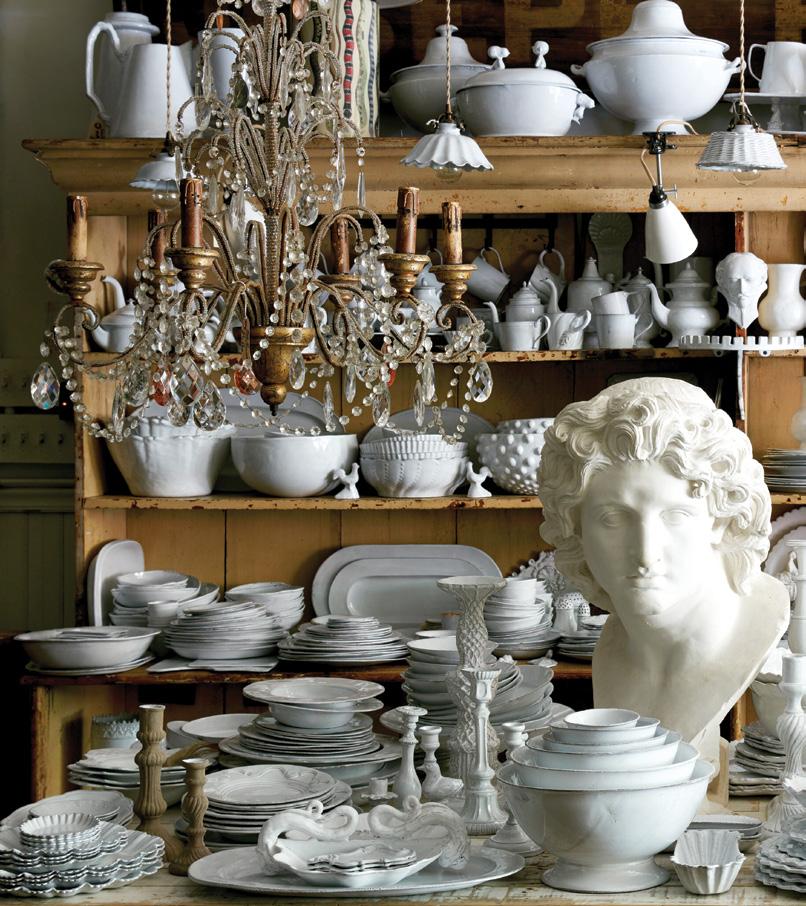

theater. I worked one day a week in a homestore in Boston. I had a couple shifts working at a restaurant. I really just did all kinds of things because I liked it.” What an idea.
As a kid in Watertown, Massachusetts, Derian had his own drummer and marched accordingly, keeping to himself and finding imaginative immersion in life’s weird but charming minutiae. “I always made things,” he says.



John Derian’s mother was from Scotland and his father was an Armenian from Turkey. John was the youngest of six. “I came from a relatively working class family. No one else was creative. So I was sort of the oddball and I don’t think my dad had any idea what to do with me.”
By high school the questions had become more pointed. What was John going to do with his life, his father wondered aloud.
“I was like, I dunno. I just had this other way of being. And then my sister took me to Brimfield when I was 15 in high school (an enormous and legendary outdoor flea market in Brimfield, Massachusetts), and I caught wind of that, and I began flea marketing and going to yard sales.” Sensing his own art soul, Derian enrolled in the Massachusetts College of Art for exactly one semester. He dropped out and kept searching.
“I started slowly collecting things. As for the future, I didn’t plot anything or have a plan, which freaked out my dad. A little bit later, I think when I was 28, he thought maybe I could rent a milk truck, because he had read somewhere that it was a good career. He had no idea who I was or what I did.” Derian took a job in a flower shop.
“And then I accidentally sold a wreath in 1993 to a realtor. I had made these things and that kind of got me started on the idea that I could make something. And that I could sell something!”
When John discovered decoupage, he recognized it as something he found beautiful and strange, and an art form he could master. Eventually he had an appointment at the legendary Barneys department store in Manhattan. Might they be interested in carrying his stuff? At the end of the meeting the answer was along the lines of “Maybe, and that’s final.” Deterred but within range of a payphone, Derian pivoted. Momentously.
“At the suggestion of a friend, I called a shop uptown called Lexington Gardens, then went up there and they were like, ‘These are great!’” The shop owners carried on in that vein for some time, concluding with frank gibberish. “‘We’re doing a show this weekend and we’re going to wholesale them.’ I had no idea what that meant,” Derian says. “They’re like, ‘We’re going to take your work to Europe.’ It was all very vague.”
When they next reached out to Derian, it was with an order. In some supply and demand scenarios, what happened next might be called ‘catastrophic success.’ “Three days later I got a $40,000 order.” Derian and his overjoyed/terrified friends spent days and nights cutting and pasting and gluing and finishing. “And it just took off.”
Today, Derian’s decoupage is available in some 67 cities across 21 countries. Yes, one can find “a John Derian” in both Hiroshima and Halifax, just to express his global reach as alliteratively as possible.
Derian himself is still dazzled; arguably the very quality that makes his taste in beautiful objects dynamic, evergreen, and globally unifying. “I feel like something was always guiding me,” he says. “I don’t know how else to describe it.” He doesn’t exactly try to describe it, but his point is taken. “I have this whole creative world and vision, and somehow I managed to keep going and believing in myself.” Derian grins quizzically. “I don’t know where I got that either.”
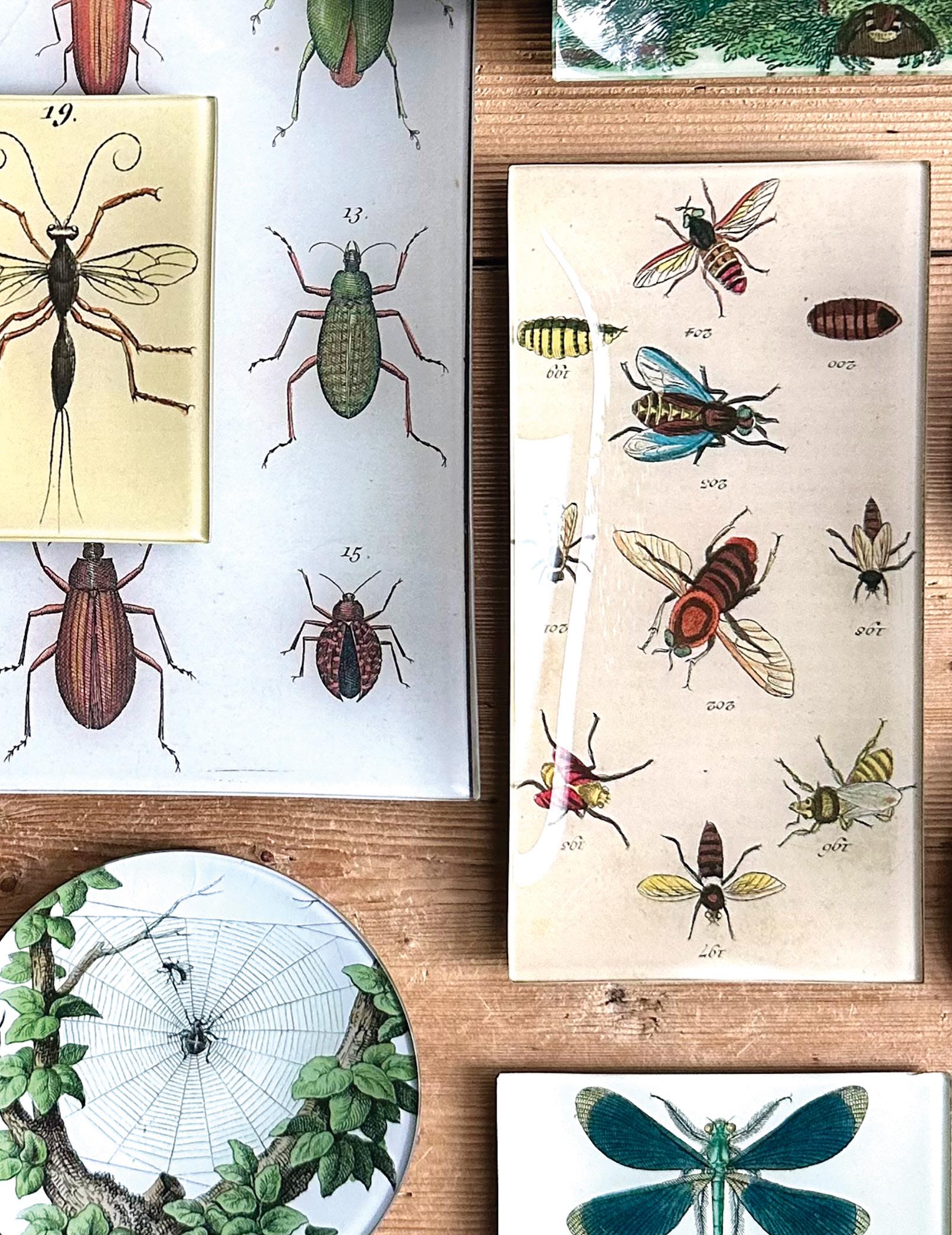








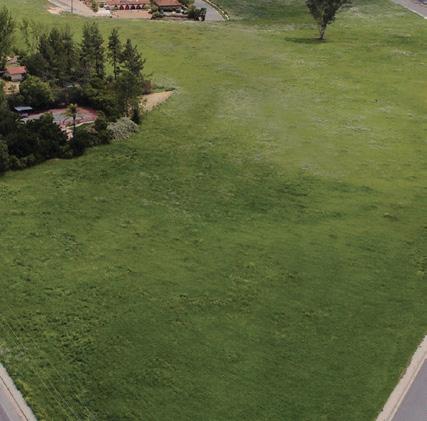
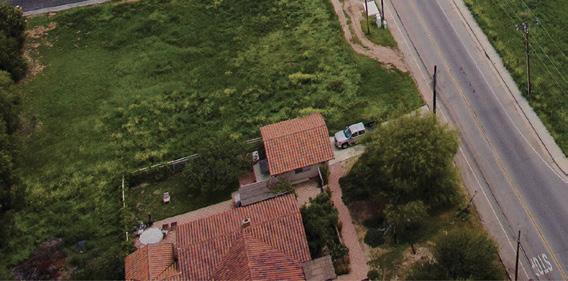



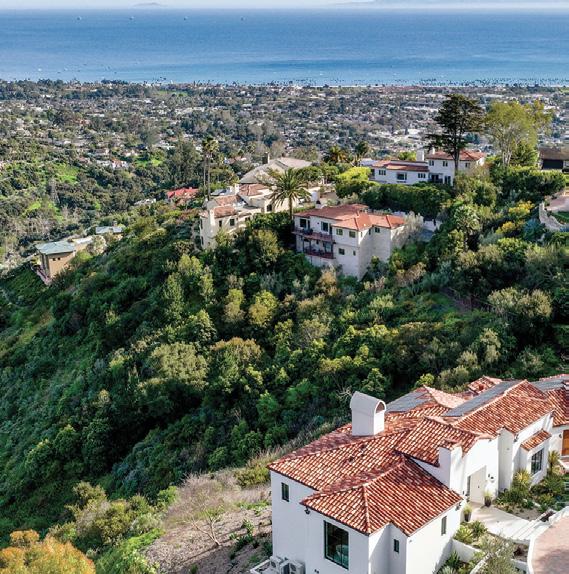



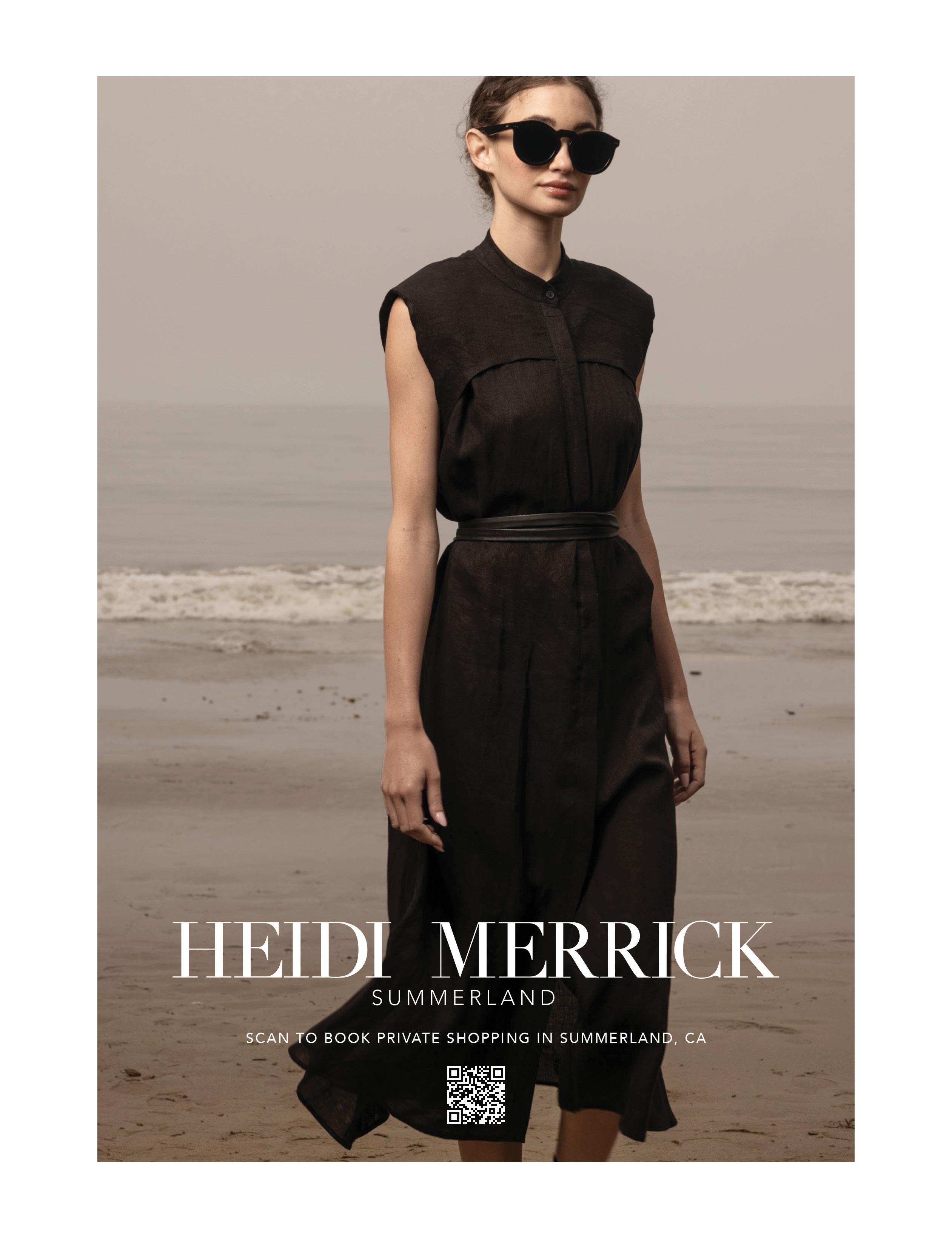

by Jeff Wing
Libbey, Wallace Neff,
In 1923, a wealthy industrialist commissioned legendary golf course designer George C. Thomas Jr. to throw down some links in a verdant and mountainous coastal valley some 80 miles northwest of Los Angeles—the sunburst metropolis just then furtively beginning to exit its chrysalis.
The magnate wisely gave Thomas carte blanche in design and billables, and the resulting golf course—the Ojai Valley Country Club— was immediately lauded as one of the world’s most spectacular. For a clubhouse of commensurate beauty and distinction, the industrialist turned to a 28-year-old architect whose nascent career was in its first blush, but whose drive, talent, and innate love and understanding of California herself would ultimately make him an icon in the state’s architectural pantheon.
Today the Ojai Valley Inn is the five-star village-unto-itself for which the jazz age Ojai Valley Country Club was both seed and heartdriven progenitor. The Ojai Valley Inn is a destination whose murmured name evokes a cornucopia of approachable luxury, and more indulgent, blue-chip amenities than can be listed here without seeming gauche.
The Inn itself is mounted like a gem in a valley of 220 acres, a veritable forest of oaks making the property a shade-dappled paradise. Its 31,000-square-foot Spa Village sees to every imaginable self-care whim—and a few just the other side of imaginable. Four sparkling swimming pools adorn the property, and seven onsite food purveyors, from poolside noshing to fine epicurean dining. There’s even an apiary, possibly a response to decades of guests hissing “If only this place had some bees!”
But it wasn’t always so. Before there was an Ojai Valley Inn—before there was even an Ojai—there was a plank sidewalk frontier town called Nordhoff. Yes; Nordhoff. Over decades, the magnetic allure of the Ojai Valley Inn would draw lifeblood to the re-christened and reimagined area. And could the smitten industrialist have had any inkling just how historically perfect was his choice of designer for his jewel in the crown clubhouse? We think so.
When Ohio glass magnate Edward Libbey first laid eyes on California’s tiny frontier town of Nordhoff and its surrounding valley, he was dumbstruck. Libbey had set out from Toledo on the advice of a pal who’d enthusiastically promoted the Golden State as a climatological Shangri-la that would pacify Libbey’s several health issues. We don’t know what California did for Libbey’s health, but his cardiology was happily seized with an immediate love of the place. Over time, the man’s affectionate and lavish civic improvements would bestow on his adoptive Nordhoff a Spanish architectural mien more aligned with the romance of old California.
By 1917, Libbey’s ongoing efforts had so endeared him to the frontier town’s grateful locals that they rubber-stamped his suggested name change for the place. Yes; “Ojai,” a Chumash word for either nest or moon, is phonetically similar to “Ohio,” Libbey’s home state. But beyond that brute fact lies pure speculation. In any case, Edward Libbey had effectively adopted Ojai and would continue pouring largesse into its improvement and makeover for the short remainder of his life.
In 1923, Wallace Neff was preparing to conquer. Through the unlikely trifecta of breeding, birthplace, and uncannily sweet timing, his emergence as the emblematic California residential architect would fortuitously dovetail with the opening chapters of the Golden State’s myth-making epoch.
Neff’s professional proximity to Los Angeles and high society connections were neatly seeing him into the good graces of an unpredicted new consumer of residential architecture: the fantastically liquid Movie Star. Neff would design homes for Hollywood hot shots Charlie Chaplin, Groucho and Harpo Marx, Darryl Zanuck, Louis B. Mayer, Fredric March, et al. His head-turning remodel of Pickfair in Beverly Hills—legendary domicile of Hollywood’s First Couple, Douglas Fairbanks and Mary Pickford—would become symbolic of Hollywood grandiosity, class, and refinement.
Unlike many of his contemporaries, Neff did not take elaborate side trips into commercial architecture. Home is where his heart was.
Neff’s reputation and workload would wax and wane over the decades. He would pass away in near penury at age 87 in 1982. His Ojai Valley Inn clubhouse, now surrounded by decades of additions, still brightly shines with old–world class. Neff’s portfolio is inseparably woven into California’s architectural legacy, his work inimitable. A Neff is unmistakably a Neff.
“The last half of Neff’s life was very erratic, very up and down,” says Wallace Neff scholar and award-winning architect Marc Appleton, whose own monograph on the star-crossed Neff was published in 2020. “I think one of the ironies probably for a lot of these architects, but certainly for Neff, was that he did this terrific work that is probably better appreciated now after his death than it was when he was alive.”







BY LES FIRESTEIN | PHOTOS BY KIM REIERSON
r. Lawrence Koplin is a Beverly Hills plastic surgeon, but he’s probably not the image you conjure when I string together those words. Koplin grew up in Beverly Hills so he didn’t head to the 90210 seeking fame or famous clients, although he certainly has both. Koplin is a man of multiple obsessions and passions. Mountain climbing. Art. Japanese ceramics. Dr. Koplin has a particular interest in the artist Stuart Sutcliffe, who was the original bassist for the Beatles, but who left the band to pursue his real loves: a woman and a love of painting.
Sutcliffe was, in fact, a phenomenal painter, and an original Sutcliffe hangs in the Koplins’ particularly well-appointed home. The home (curated by the designer Teri Boggess) is one of the most beautiful I’ve seen in Beverly Hills despite its modest size. Why isn’t their home more grandiose? It has something to do with his attitude as a surgeon: that it’s fine to do enhancements and improvements, just don’t overdo them. “My wife Kelly and I reimagined our home to be a ‘jewel box’ with lovely, intimate spaces full of our personal treasures.”


Iwanted to talk to an expert surgeon because as the human body has become a new design medium (tattoos, piercings, and various surgical procedures), enhancements are getting more popular and extreme. With sometimes bizarre or even calamitous results for the individual (Madonna) and even for our country—how much did Joe Biden’s many plastic surgeries conceal what was really going on with him between the ears?
I’d heard Dr. Koplin is the best plastic surgeon in L.A., who operates from a unique perspective, and I’d also heard that he’s a particularly thoughtful guy who speaks with candor. I wanted to talk to him about how people have started redesigning themselves and, more and more, using our own bodies as a canvas with our surgeons as our paintbrushes.
At Koplin’s office and during a second visit to his beautiful home, we talked about what makes for good outcomes in plastic surgery, and Silicon Valley’s obsession with biohacking and reverse aging. While I had Koplin’s attention, I also asked what happened to Madonna, who at first claimed her face was distorted by a long lens camera, and then by a bacterial infection, before later admitting her contorted features were actually the result of aggressive cosmetic surgery:


First of all, can you explain to me how that Madonna thing happens?
There’s a subset of women where their beauty and allure really are a superpower. I mean, the power Madonna used to get from that must have been intoxicating so one understands doing almost anything to try and keep that and sustain it.
Unfortunately as people become increasingly desperate to regain the spotlight, they lose perspective. They become almost like a body dysmorphic patient. And they’re willing to take desperate measures to hold on to relevance and at least look like a younger, better, higher-res version of their current self. Generally speaking, cosmetic surgeries have a certain lifespan. And as the face undergoes natural changes over time, some peo ple feel an urge to do more and more while their body’s ability to adapt and recover from these enhancements may in fact be diminishing. So they go overboard with the fillers and plumpers and such.
It’s like Bondo for the human body.
The surgeries then become a little like substance addiction. Where what used to work as a moderate dose later requires a massive dose to accomplish the same thing.
I feel like everyone is looking in
But
The mixed blessing for celebrities and others with huge resources, is their job is actually to maintain a certain image and they can always get some surgeon to do what they want. Even if it’s not the best thing for them. Unfortunately there’s a certain point where if you start to fill out the face


•Full Wash
•Blowdry & Style
•Updos
•Events



•Weddings
•Memberships




“WHAT’S THE DIFFERENCE BETWEEN GOD AND A PLASTIC SURGEON?
GOD
DOESN’T THINK HE’S A PLASTIC SURGEON.”

Meaning your income needs to be secondary to a successful surgical outcome?
Precisely. If I do the greatest surgery in the world, but it’s not what my patient wanted, then that’s a fail. Critical to the whole process is figuring out what’s the right outcome for the patient? And most of the surgeons here aren’t that way. If the trend is big lips, everyone’s getting big lips. If the trend is bubble butts, everyone’s going to walk around with big bubble butts. And those things go in and out of style, just like narrow ties and wide ties, and those people are going to be unhappy at some point in time. And I believe that the surgeon has not done them a service, even if they think they know something that they want, it’s like a bad tattoo. I wouldn’t do the tattoo if I was the tattoo artist, if I thought the person was drunk or wanted a revenge tattoo or something like that. There’s a lot of nuance to it that unfortunately a lot of plastic surgeons don’t practice. They just want the bragging rights to having that actor or that billionaire as a client.
I noticed that a big part of your process is making sure before the first incision that you and your client are 100% in alignment about where you’re trying to go as well as the best way to get there. You’re like the two different drivers of a hook and ladder.
To continue the analogy, I’d say there are two people driving, who need to adjust to the conditions and to each other in order to make the sharpest turn. Because we’re coming from different places and each can see things that the other one can’t.
EDI feel like your house is an externalization of your philosophy as a surgeon. It’s not any more than what you need, and things are curated and orderly and balanced.
That’s all my wife, Kelly, and our designer Teri Boggess. They did a great, faithful restoration. It’s not a large place but their genius is using reclaimed treasures to honor the past while, at the same time, bringing the house into the present. To an extent you could say I try to do a similar thing surgically.
I noticed your collection of kintsugi (kintsugi is elegantly repaired Japanese pottery).
Both wabi sabi and kintsugi are philosophically and aesthetically important to me. Japanese culture, as we all know, probably has a greater appreciation for age than our culture’s emphasis on youth. It’s a sensibility that appreciates the beauty of things that are impermanent but nevertheless endure, showing their age along the way, but also developing character. And, fortunately with the development of this patina, the byproduct is a certain aesthetic bliss.
And kintsugi?
Kintsugi is the physical art of repairing broken pottery with “golden joinery,” requiring skilled training, patience, and artistry. If pieces are missing, they need to be replaced by various options only limited by the artist’s imagination. And this is exactly what we aspire to achieve as plastic surgeons. I also realized that this fine detail work requires patience, hyper focus, and fine motor skills—which is something I happen to be good at. So I’m thinking kintsugi might be a wonderful hobby not only to collect but also to perform.

What is the most satisfying part of your work?
The most satisfying part of my work is pleasing myself by the quality of our results and pleasing my patient by delivering even more than they might have hoped for. And while I can’t wave a magic wand and grant my patients happiness, I can give them a rather excellent tool for getting there.
My hope for my patients is to give them the best possible outcome and a positive, fun experience. When the procedure is done and they’re fully recovered, I want them to have an appreciation for the art of plastic surgery—because it is where art meets science—and to miss us when they no longer have to see us.
Adam Carolla talks about motivation for actions in life and his philosophy is “if it doesn’t make you happy or make you money, then don’t do it!” Well, plastic surgery doesn’t make money for the patient… usually. So, 99% of the time it’s to make people happy. Now, surgery doesn’t directly make people happy, but the outcome of the surgery certainly should. Sometimes it’s just to make the person look the way they were when they were younger. Sometimes it’s to improve a severe injury or scar or deformity. And sometimes it’s to correct something they were born with that they are extremely self-conscious about. But if it’s safe, if success is the reasonable and expected outcome, if the risks of a poor result are minimal—and if it makes you happy—then why not?




We are passionate about helping our clients navigate the complexities of real estate, whether buying or selling homes, investment properties, or residential income properties. As part of the largest locally owned and operated brokerage, working directly with the owner of Village Properties, we offer tailored, creative solutions to meet your needs. Our deep appreciation for Santa Barbara and our commitment to the community set us apart in the industry. Give us five minutes to show you how our


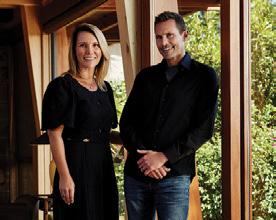
and dedication can make a difference for you!

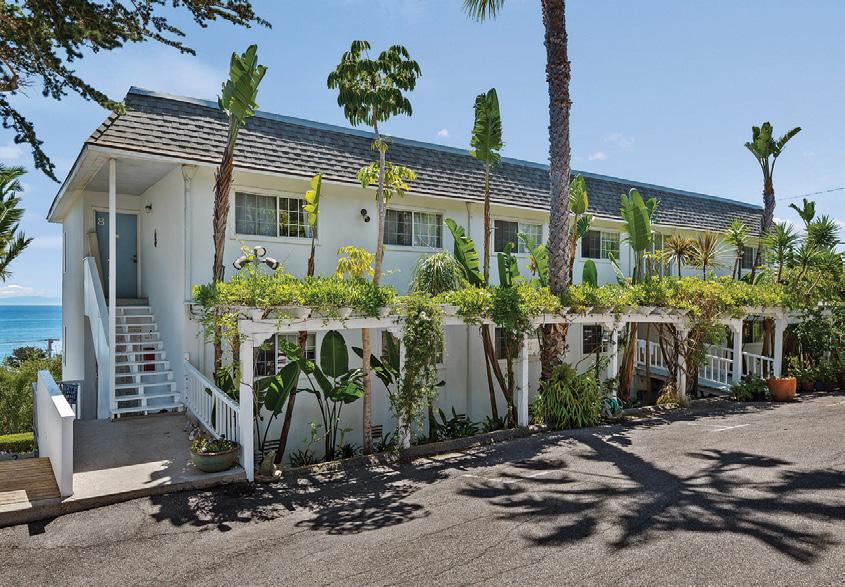



BY CHRISTOPHER MATTEO CONNOR

Emily Silva admits that some of her lamp designs can be startling. A biomorphic chandelier with spiraling War of the Worlds-esque alien tentacles seem to reach down as if transporting you to another world, which is sort of the point.
Sticking to that theme, many of Silva’s pieces come with ethereal names such as Space Invader, numbered sequentially: Space Invader N.001, Space Invader N.002, and so on. The lamps have a sort of papier-mâché stream of consciousness that arc, bend, and flow; fluid shapes that feel organic, but not quite of Earth.
Silva recalls growing up in a home where there was the need for perfectionism. It always ended in vain. Now she finds beauty in the perfectly imperfect.
“It’s maybe uncomfortable,” says Silva, “like there’s a celestial body inside your home.”
That uncomfortable aspect is intentional. Along with using Space Invader No. 016 for, say, our bedtime science fiction reading, she wants us to engage thoughtfully with her work.
“I THINK I’M WORKING A LOT CLOSER TO ARCHITECTURE THAN I WAS WHEN I WAS WORKING IN AN ARCHITECTURAL FIRM.”
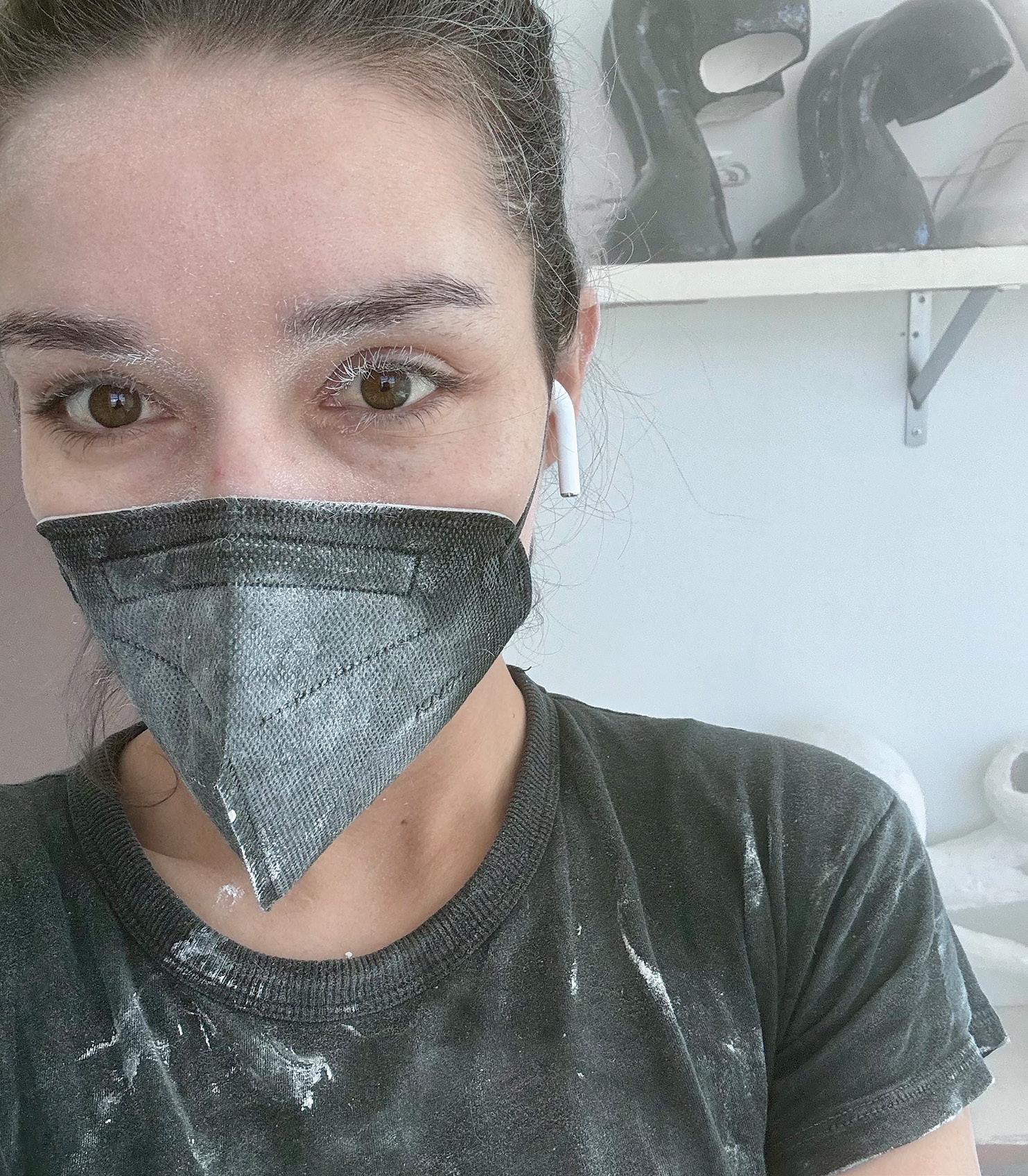
“T
here’s two different people: someone who will look at it and say, ‘That is the most bizarre lamp that I’ve ever seen.’ And then there’s somebody else, and whether they love it or not, will just totally get it. I would much rather have an object that gives someone an intense reaction compared to a lamp from any Big Box store.”
Under the banner of Studio Chora, Silva works in her home state of New Mexico, itself a hotbed of alien lore, and she’s made

a name for herself creating functional art pieces for the home. Her work feels part of a surreal lineage of 1960s biomorphic artists, bringing to mind figures like Catalan’s architectural poster boy Antoni Gaudí. Or, if we’re thinking locally, architect Jeff Shelton, whose creative reimagining of Santa Barbara’s Spanish Revival architecture introduced playfully curved lines, whimsically wavy surfaces, and asymmetrical “imperfect” fixtures to his renowned buildings.







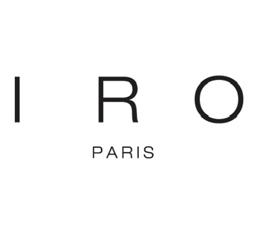



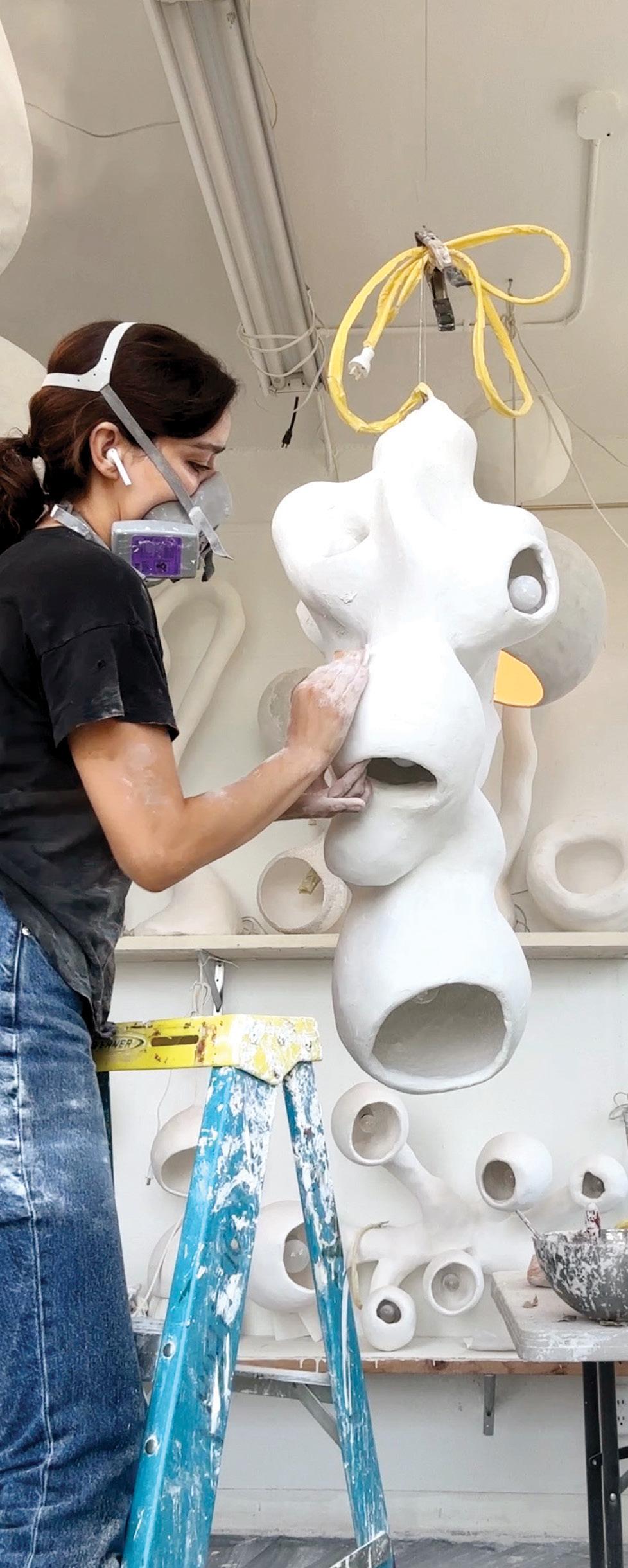
After receiving a master’s in architecture from the University of New Mexico, Silva set off to New York City filled with exciting ideas about design. But theory only gets you so far, and Silva found herself working at an architectural firm, uninspired and wanting something more.
She recollects her time in New York: “I was sitting at a computer and was like, ‘Okay, at what point in time do I do what it was that I thought I was doing in architecture?’ I hadn’t ever really built anything myself or tried to actually make anything.”
Taking a hiatus from the world of large-scale architecture, Silva retreated to Albuquerque and opened Studio Chora where she could funnel her ideas into something tangible.
Outer-worldly influence also ties into her home state. Silva mentions the Ancestral Puebloans, the Native culture that lived in present-day New Mexico and vanished nearly without a trace at the end of the 13th century. Theories abound as to what might’ve happened to this once thriving civilization. Did lack of resources force them to leave? Did they simply transcend to another plane of existence?
This idea of a whole culture vanishing intrigues Silva. She ties this back to her lamps and their prodding quality. “[They’re] uncomfortable with the way that we live in a typical sense. Maybe if we can understand something else, we can transcend.”
Discomfort is an overarching theme in Silva’s work and how she approaches her pieces. Silva is concerned with humanity’s ecological footprint, and it greatly informs how she approaches her art.
Living in New Mexico, a state that has struggled with water shortages and toxic contamination, only further encourages her to take a committed stance to lessening her own footprint. Anything to prevent the fate that befell the Ancestral Puebloans.
“There’s always been thoughts like, will the faucets have water tomorrow? There’s a little bit more of a primal thought process that’s part of the mindset for anyone living in the harsh desert.”
The space invader lamps Silva creates aren’t aliens bent on human destruction; they want to guide humanity to a brighter future.
Silva also dabbles in avant-garde performance art. Her target once again: our culture’s obsession with perfection. One such performance had Silva hosting dinner parties that took place in “bubbles” made out of mylar, the same material used for space blankets— go figure. Diners inside the mylar bubbles were treated to a sort of two-way mirror effect, creating an environment where people could see themselves in the mylar’s reflection while those on the outside were able to watch those people watching themselves.


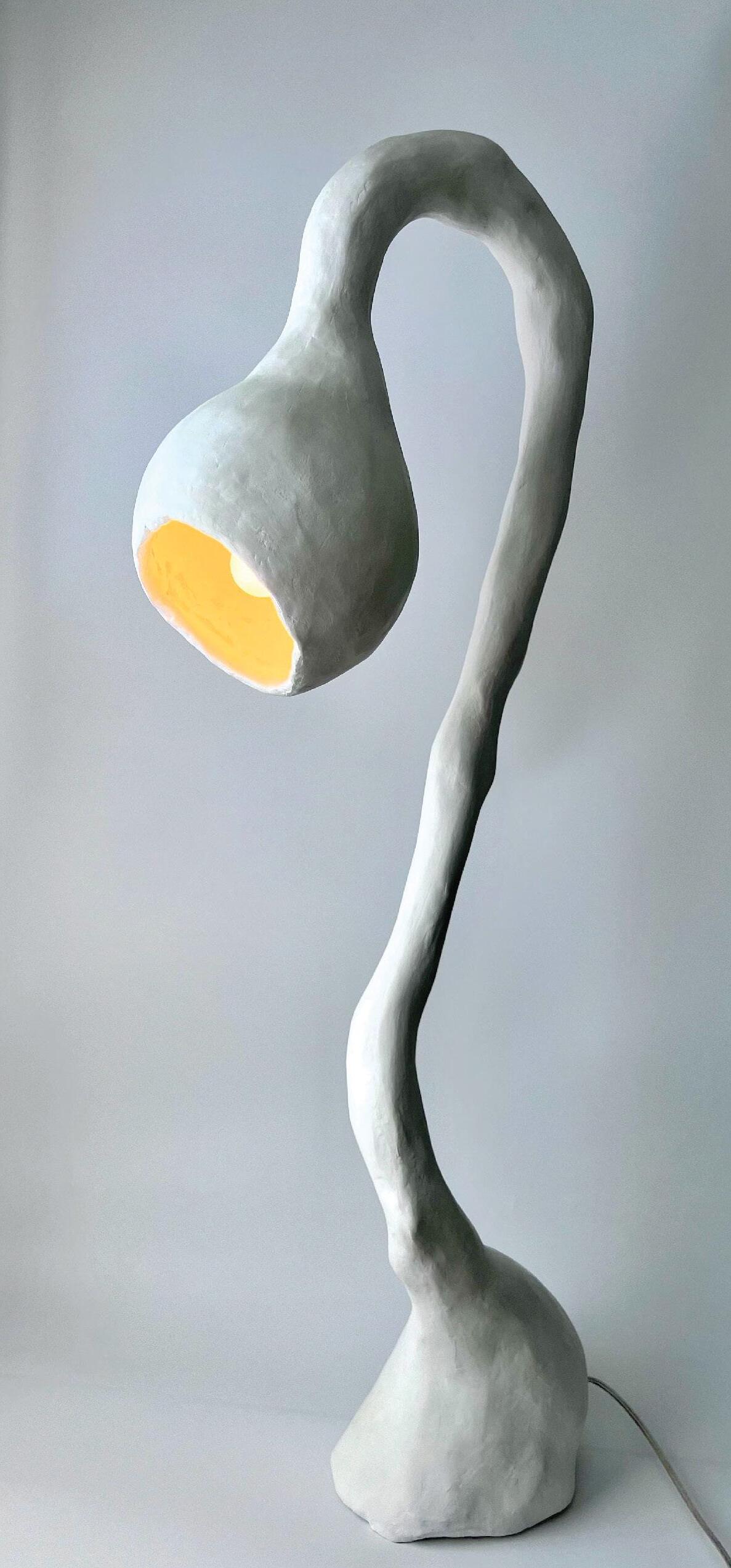


“Whatever side was brighter, it was transparent.
And so we could watch people kind of looking at themselves. But then in the evenings, it was the opposite. Everyone on the inside would only see a reflection of themselves.”
She also hosted an augmented virtual reality dinner party, where guests wore VR goggles and found themselves in the middle of the table. “You could almost kind of look around as though you were the meal.”
Is there a correlation to these ideas of being perceived as the center of attention, and the constant strive for perfection? A comment on the addictive nature of social media? Save for her studio’s website, Silva seems to have distanced herself from any online presence.
So, will Silva ever go back to the world of architecture? She considers this for a moment.
“I think I’m working a lot closer to architecture than I was
“I WOULD MUCH RATHER HAVE AN OBJECT THAT GIVES SOMEONE AN INTENSE REACTION COMPARED TO A LAMP FROM ANY BIG BOX STORE.”

when I was working in an architectural firm.” Furthermore, she intends to create larger pieces, possibly even ones people could inhabit, like an Airstream turned into a livable art piece, or maybe more on theme, an Airstream turned biomorphic spaceship.
What’s clear is Silva today isn’t the same person that chafed behind a computer screen at a New York City architecture firm. Nor is she the same person she was when she first opened Studio Chora. Like her lamps and sculptures, she’s evolving.
“Studio Chora is not something that I could fully digest in my lifetime. I love that as an older person and feeling more mature, I’ll continue to search. Whether it’s meaning in life or meaning in my work.”
Silva will continue to search. As will we, with the space invader lamps as our guiding light.








This 12+/-acre private estate is built out to the highest level of quality and sophistication, located on one of the rare parcels fronting the Santa Ynez River. The home offers a contemporary and sophisticated design based on a western ranch vernacular. There are 4 bedrooms, a large great room, a gourmet cooks kitchen, office, and game room; all constructed with impeccable attention to detail. The property is loaded with features, including a barn, a 2 bedroom guest house, pool and outdoor kitchen, a detached 4 car garage, stable plus an arena and pastures; everything was completed with uncompromising quality. Very few properties in the Santa Ynez Valley have frontage on the River; this is one of them!

H onored to be part of, The Lobero Theatre Cent ennial Expansion Project, Design Architects

architecture + interior design

designarc.net


BY JONAS OPPENHEIM
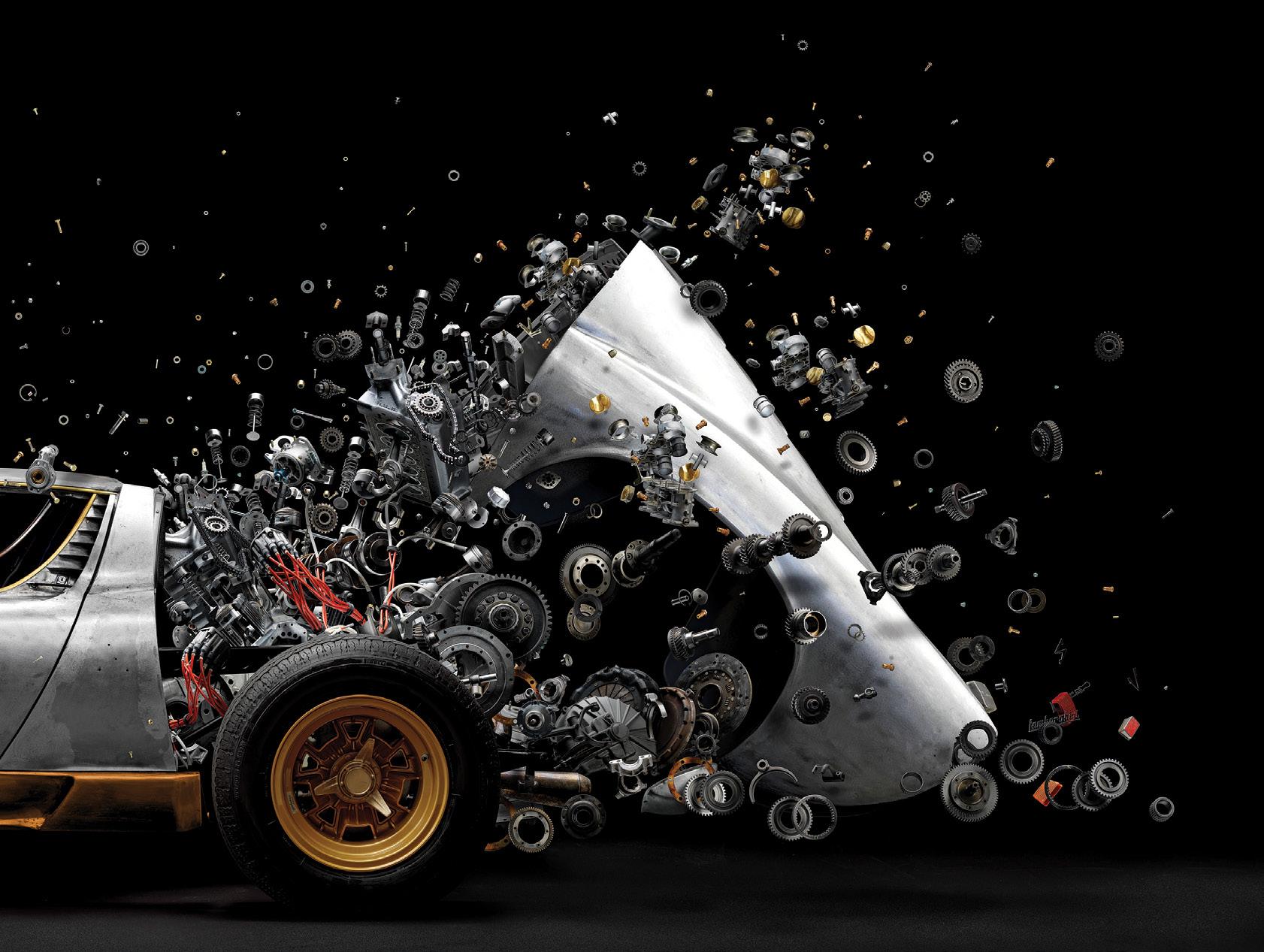
In his Pulitzer-winning history The Making of the Atomic Bomb, Richard Rhodes paints the scientists involved, including Albert Einstein, as very far-out dudes, operating at Picasso-esque levels of creativity. As a lifelong writer whose sole aim in college selection was to avoid any further study of math or science, I marveled at the kinds of brains that could predict the bend of starlight around the sun during an eclipse. I felt like the too-stoned guy at the party, trying to keep up but really only capable of mustering the occasional smoky “whoa.” Now, you can safely say of most people, “She’s/He’s no Einstein!” The majority of humans are literally not (comedian Albert Brooks, literally born “Albert Einstein,” is a notable exception). However, the good Herr Doktor came up during my conversation with Fabian Oefner, a Swiss artist living in Connecticut, and I don’t hate the connection. For starters, Oefner was raised in Aarau, a Swiss village in which Einstein famously (in Aarau, anyway) attended high school. They both emigrated from Europe to the U.S., although only one was fleeing Nazis. But the juxtaposition really popped when I delved into Oefner’s rigorous yet fantastical artwork.

Oefner’s photographs and sculptures are powerful and meticulously executed. And once you learn the science behind them— there is always science behind them—you might find yourself in “whoa” territory. “What I’m trying to do as an artist,” he says in his career-making 2013 TED Talk, subtitled Psychedelic Science, “is to bring the worlds of art and science together.” He then demonstrates his attempt to “make sound visible” by filming tiny colored crystals surfing sound waves upon a horizontal speaker. There is a synesthetic pleasure in watching the slomo undulations. Speaking in his placid manner from his studio last month, the 40-year-old adds, “I read scientific publications, but I’m always thinking, how can I visualize what I’m reading? That’s my way of exploring the world.”
Take his photo of a Lamborghini disintegrating in outer space, with the Earth glowing below. “Ten minutes in Photoshop,” scoffs your inner amateur art critic. But that’s not what Oefner did. Instead, he painstakingly researched and photographed each disparate component of the Italian speedycar— please think about that for a moment—every screw, knob, and cylinder. Oefner launched a weather balloon to capture the Earth. He modeled how the car would come apart under specific conditions, and arranged the elements accordingly. The result is an image of a moment that never happened, in an impossible location, rendered in such excruciating detail and so convincingly that your brain believes you are looking at an outer-space Lambo explosion in progress. It’s very cool.
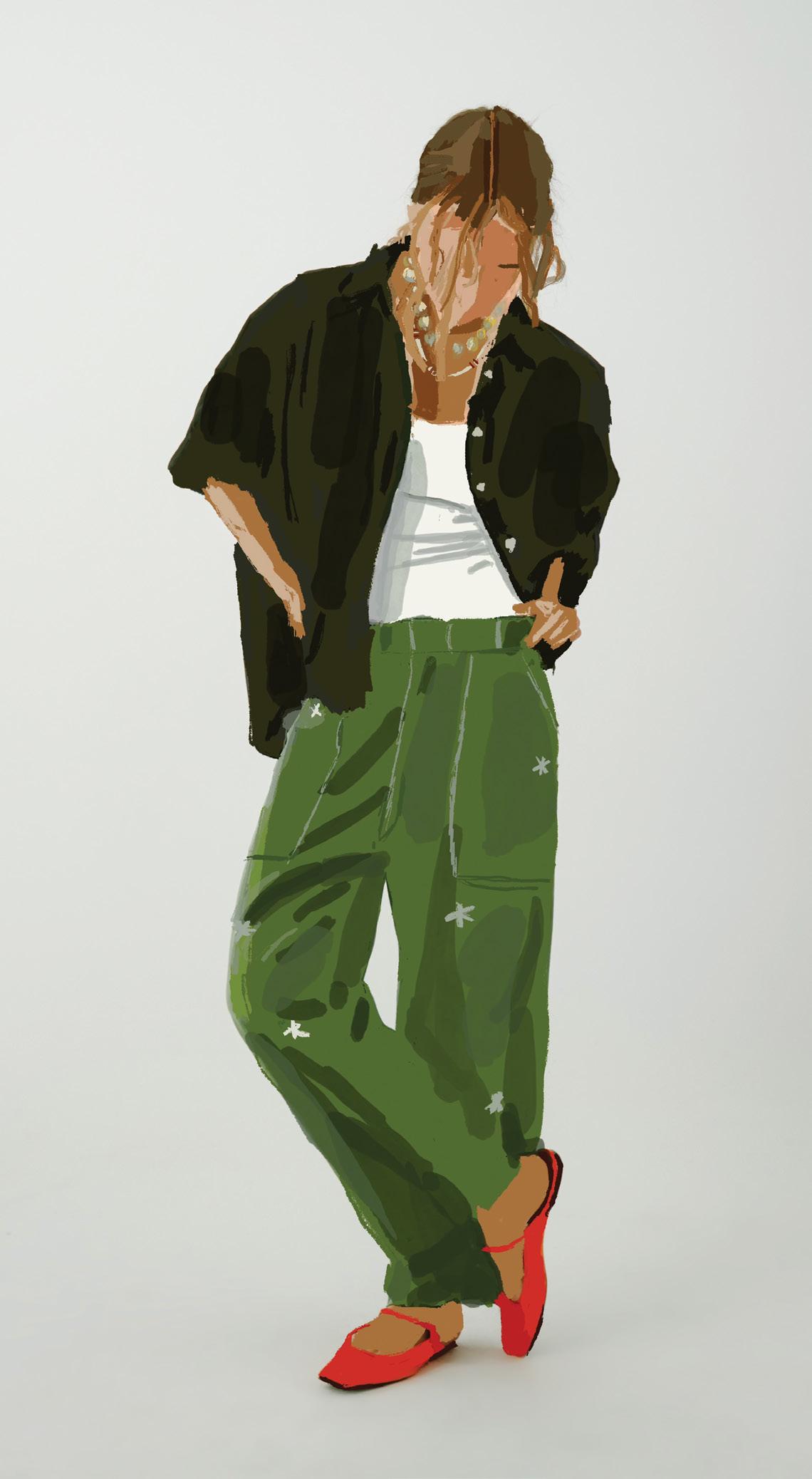

These mind-bending freeze-frames are among my favorites. Oefner stages moments that are and aren’t; he creates paradoxes with time itself. “[That’s] how you can visualize a concept like the relativity of time,” he elaborates. “On a daily basis, we experience how time goes slower in certain moments and how things go faster in certain aspects.” At gunpoint, that’s how I might describe Einstein’s theory of relativity. (Einstein again!)
Oefner also responds to his discoveries out in the world. His “Icarus Series” is a collection of cast-metal sculptures of familiar objects that have melted. They were inspired by the rubble of a California wildfire. And what does he think of our home state, flammability aside? “I absolutely love [California],” asserts Oefner. “Both in terms of nature, but also in terms of culture, the scientific

world there, obviously with Caltech.” He’s so on brand! Maybe if I let him go on, he’ll swing around to something artsy…? “Also just being out in nature, seeing the Sequoia trees… One way of visualizing time is looking at the Sequoia tree, right? And you realize the thing has been here for thousands of years, and you feel like you step into this kind of Jurassic Park world…”
I’m too polite to nitpick the difference between “Jurassic Park” and “Jurassic World.” Instead I’m wondering, between his disintegrated Lamborghini and his deconstructed Riva Aquarama boat, and other projects that destroy iconic luxury items, if he harbors a grudge against the trappings of wealth and class? “No,” Oefner says. “When I picked a car, when I picked a sneaker, I picked it because a lot of people have a connection to the object. If somebody feels like I’m ‘destroying’ these objects, I think it says more about that person.” Busted.
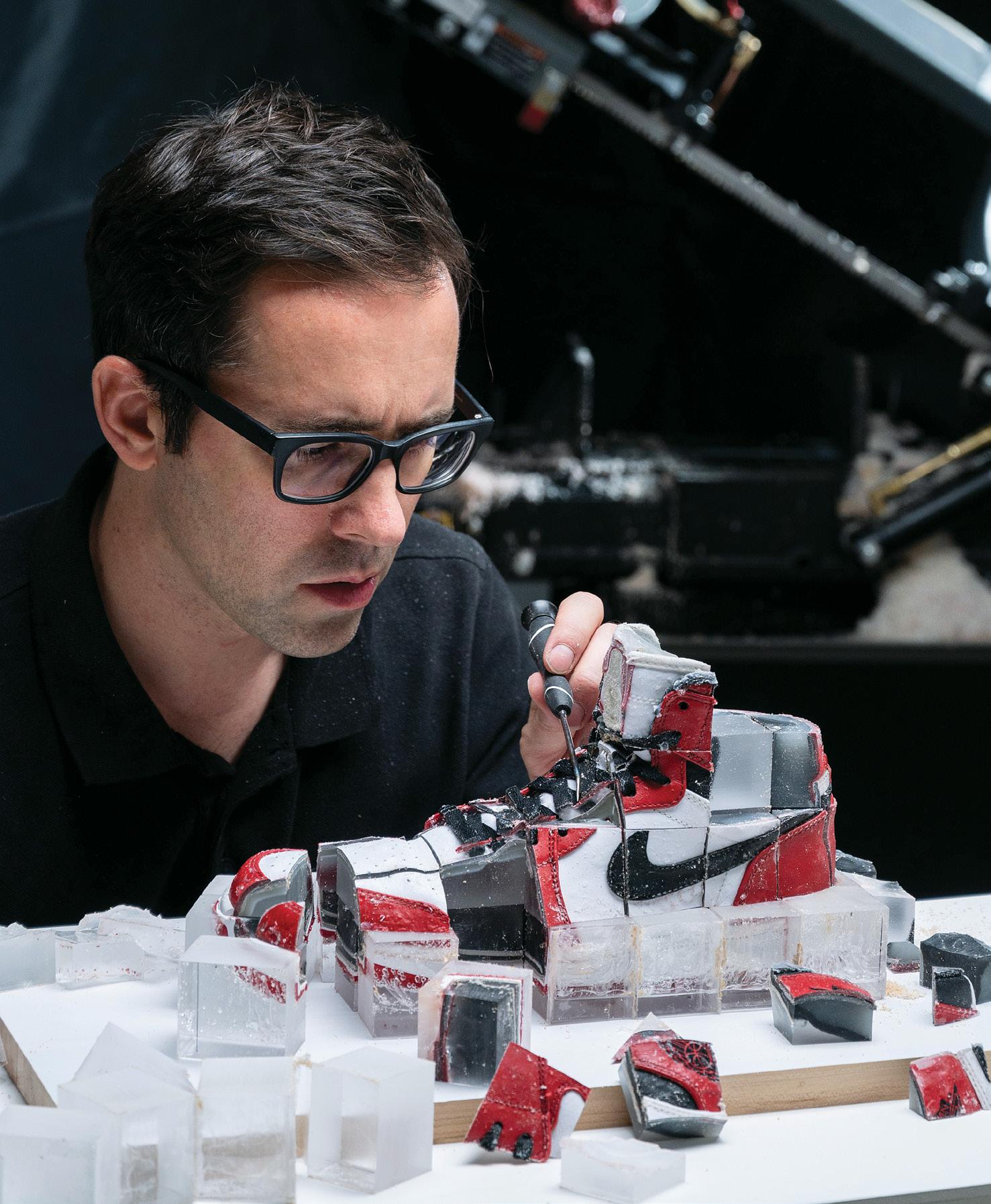
Oefner gleefully translates the scientific concepts and processes that fascinate him, making them visual, accessible, and beautiful in art. They reinforce the feeling I got reading Rhodes, that, at the highest levels, a scientific imagination can rival any artist’s. And vice versa. “The sheer complexity of the world amazes me,” Oefner explains. “The deeper you dive into a topic, the more you see. It’s like fractals—you go deeper and deeper and it’s just like the resolution gets higher and higher.” Whoa.










Self-Mastery | Lifestyle & Spatial Makeovers | Trauma Recovery | Hands on Healing
Somatic Rewilding | Executive Coaching | Nature and Wilderness Therapy Guide
Private Excursions and Retreats | One-On-One, Couples, Teens & Group Packages





















My three most cherished belongings live in a climate-controlled 10x12 square foot cement box in Glendale, California. I pay 350 dollars a month to keep everything safe, secure, and moisture free. Everything is gently tucked inside cushy blankets or bubble wrap in this possession prison that lives 99.9 miles away from my current Montecito guest house. What three things have I deemed so important as to have their own safe house? What is my holy trinity? My art collection, my 1960s Warren Platner coffee table, and most importantly, my Simmons Beautyrest pillowtop king-size mattress.
I rented my first storage locker just a year ago at the unusual age of 62. I say unusual because most people discover the need to house their crap much earlier in life, so it felt like an accomplishment of sorts to finally have my

very own pull-down garage door and clunky impossible-to-use circular lock. Whoever invented the lock that goes on your storage unit hates people. But I digress. I’d just joined the 38% of Americans who rent storage lockers and I proud -
ly took a picture inside of mine to post on Instagram. I titled it “Baby’s First Storage Locker,” so clearly there wasn’t much else going on in my life at the time. I also discovered just how creepy storage facilities are. When I boasted about my

new acquisition to a friend, he said, “If you find yourself alone at night in there, just draw your own crime scene chalk outline.”
I was about to move to a fully furnished guest house in Montecito and planned on putting all of my belong -
ings that aren’t clothing into my new unit. But as I started to pack up my life, I looked at the things I was going to pay to store and thought, “Does this cheese grater really need a 350 dollar-a-month condominium?” That soon became the criteria for every -
thing. Every day up until the move was a game of “Hoard or Hurl.” Le Creuset I used once. Hurl. DVDs and CDs that hadn’t been played for a decade. Hurl. Tax records from the last 20 years. Buh-bye (though I probably should have kept those).
The pile got smaller and smaller. The things that mattered to me, fewer and fewer. And that’s how I ended up with just three things. Most of my old furniture now lives with my friend Serra. I get to visit my lamps and sit in my former meditation chair whenever I want. I love that they have a new home and are as beloved as they once were to me. I do regret the loss of my eight-foot-long custom picnic table, but fiddle-dee-dee, I’ll buy one again tomorrow. Or whenever I have a yard. Or a deck. Or enough friends to properly populate a picnic that could be painted by Seurat, or photographed by Slim Aarons.
I have been a titan of tidy since I got sober in 2000. My life as a drunk was quite messy and not just the trail of relationships I left in my wobbly wake. I was actually a full-blown slob. I had piles of clean and dirty clothes mingling with each other in sweaty heaps on every inch of the bedroom floor. I had to carve a path to get to the bed. It was a landfill of fast fashion so off-putting that one boy once refused to spend the night. Imagine a young man saying no to free sex? You can’t, because it is, in fact, unimaginable.
I attribute most of my messiness to sheer rebellion from my childhood being raised by British neat freaks, aka people who shouldn’t have had children. We were forbidden from having anything on our walls, floors, or on top of our dressers. My Bobby Sherman and David Cassidy posters sat in a “toy” closet collecting dust along with a plastic flash mob of limbless Barbie dolls and Army Men. If you squinted, my closet looked like a Japanese comfort station.
I was an egalitarian when it came to make believe. I was raised in Staten Island where my grandmother worked in a toy store called “Smiling Sunnies.” Thanks to her, our toy closet was filled to the brim. The only problem was the free games and things she snagged for us always had at least one piece missing. I still have puzzle PTSD

to this day. Maybe I learned to break the rules because there were so many missing pieces I couldn’t possibly follow them. Again I digress.
It wasn’t just my bedroom that had to be kept immaculate. There were entire rooms in our house that were “No Children Allowed” zones. It was like my mother was running some fancy adult nightclub called “The Living Room.” Mom used to make me serve drinks on
trays to her dinner guests and then play guitar and sing at the end of the night for their entertainment. I once performed a song I wrote about a prostitute called “Lady of the Evening.” That put an end to my servitude. Overall my childhood spaces were a bit barren, which I believe is what led me to a life of design chaos and tchotchke-dom. If there was space to fill, I would fill it. That is, until the Great Storage Locker Rental of 2024.


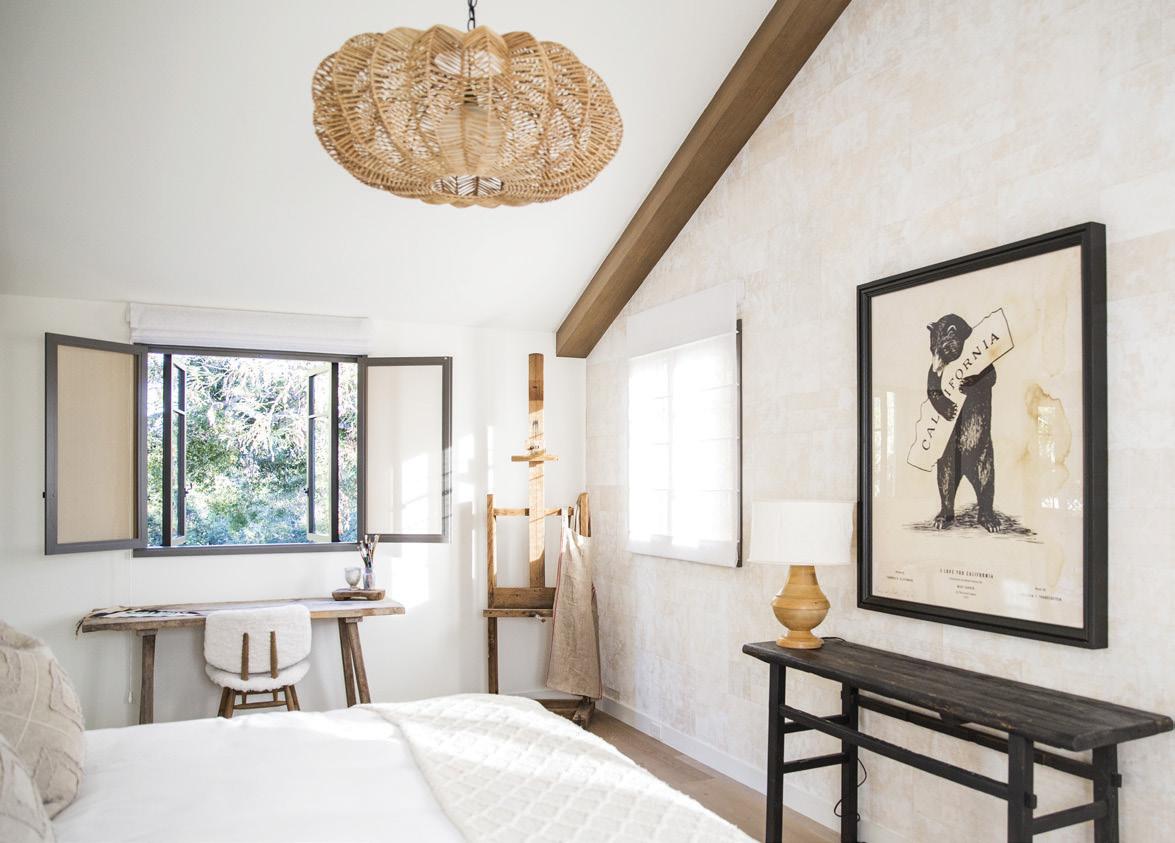


My love of art came from my dad, a fine arts photographer. His job was taking snapshots of paintings and sculptures to be used in artists’ coffee table books, or posters that were sold in museum gift shops. Sometimes I would go with him on shooting days and spend hours wandering the floors of the Whitney Museum like Eloise at The Plaza Hotel, while he climbed under the big black cape of his 8x10 camera. Collecting art as I got older was important to me. I have acquired about 50 pieces of original art. The pieces aren’t worth much on the market, but they are precious to me. They each tell a story of how they came to be in my possession. Hanging art is the first thing I do when I move into a new space, but my new home had no wall space, so into storage it went.
As for my coffee table, I discovered a love for mid-century modern furniture in the ‘90s and finally bought my first piece in 1998. The iconic steel rod and glass Warren Platner coffee table was shipped from Georgia on a Greyhound bus that I somehow lifted and shoved into my Jeep Wrangler to cart home. It cost $600 total and arrived covered in rust. I will never get rid of her. She is worth about $2,200 dollars, or about six months of storage. Shit.
But it is my king-size mattress that is my most prized possession. It took me a lifetime to make this purchase because as a single person I didn’t think I deserved anything more than a queen. I remember telling friends I was going to make the big mattress upgrade and the responses were all, “Why do you need one, you sleep alone?” If only you could buy new friends at Mattress World. At the time, box mattresses were all the rage so I tried one of those first. On a firmness scale of one to ten, it was a -200. I sank into it each night like quicksand. Getting them to come take it back took weeks and it went directly to a landfill. I decided to go old school, straight to the mattress store, and laid on an array of beds

covered in that protective paper and crinkled around for hours; I was a 62-yearold kid in a ball pit.
I eventually found pillow-top perfection, had it delivered, and in fact, slept like a king. A deposed king, but a king nevertheless. My bed is a metaphor for the life I have chosen as a woman: taking up as much space as possible. It is also not lost on me that the smaller sized bed is queen, but the most desirable is king.
We should change that. Sadly, my new guest house didn’t have room for this behemoth bed and now she stands in storage, leaning against a wall, waiting for my body to climb back in.
According to one company there are five categories of the things most people keep in storage: valuable family furniture, seasonal décor, appliances and electronics, collectibles and books, and media. I’m not sure exactly where my things

fit on this list, but I do think you can learn a lot about someone from what they keep in storage. My locker says I love art, sleeping, and coffee; an accurate portrait of my whole vibe.
While writing this I also learned that the most popular size of rented storage units is 10x10, just twenty square feet larger than the average jail cell. It costs California $136,000 annually to house a prisoner, which makes me feel both
better and worse about my storage unit. Actually it just adds to my generalized angst which, more and more, could use a storage locker all its own.
At the end of one year I will have paid $4,200 to give my stuff its own tiny house. I could buy my coffee table again in the future three times over with that money and in the meantime simply give my few storage locker possessions to people who would cherish
them for me. But the truth is, I still hold on to the idea that I will one day be able to afford my own home again. That I will hang my beautiful art. That I will kick my feet up on my now $40,000 coffee table and lay my head down on my Simmons Beautyrest and dream the American Dream. Giving up my storage locker is giving up on my future goals, and I’m not ready to accept that defeat… just yet.






Professional downsizing and home transition management
Senior living campus relocation specialists
Interior design, layout, and complete new home set-up
Private estate sales and national auctions
Helping trustees with closing family homes
Over 300 Santa Barbara families served













The first time Richelle Ellis sent her artwork into space, it hitched a ride with the suborbital maiden voyage of Blue Origin’s New Shepard space system, logging 156.2 seconds in microgravity. “It’s a linocut print of a group of people constructing a DNA strand that formed this ladder to space,” says Ellis, “because it’s always been our humanity, our DNA, which makes life livable here on Earth, but also our collaborative spirit, that’s made us capable of doing things that seem impossible.”
Since that flight in 2015, Ellis’s work has been launched into space several times more: into the stratosphere, to the International Space Station, boarding a rocket, and orbiting the Earth. She even sent her art to the Moon. If you happen to be one of those billionaires with a rocket company, you can go check it out right now.
Ellis had been a repped artist with a gallery who sold art the traditional way, but realized she didn’t want to be confined to hanging her work on “white walls.” Outer space, being a vast and boundless blackness, is pretty much the opposite of white walls.
A benefit to presenting art at a gallery is that people can go there with relative ease, but with space, not so much. One might wonder who the intended audience is out in the abyss. Ellis doesn’t miss a beat: “They’re like time capsules in spacefaring environments for future citizens to discover and to learn about who we are and where we came from. Just as our cave paintings were expressions of our past, this is intended to archive our human story.” (She also keeps replicas of her work in her studio, which is on Earth.)
Upon my asking for a full tally of how many artworks she’s sent into space, Ellis does a fair amount of squinting trying to recall each one. She thinks the tally is 10, but the fact is, she’s not really keeping track, nor is she competing for any record. That’s not what’s important to her; she’s exploring the potential of our shared humanity. If anything, repeatedly sending her art into space is a mere demonstration of her determination to keep doing the next amazing thing.
Her demeanor is reserved, but everything about Ellis’s life screams “badass.” One day she’ll catch up to her art and fly into space herself. You can bet on it.
Growing up in Idyllwild, California, which she calls, “the place where there are fires all the time,” creating art was always part of her life. She attended the Idyllwild Arts Academy. Normally a school for international students, Ellis was one of the very few locals to get into the program. She’s as much a visionary as a skilled fabricator and there’s no single medium that ties her down. “I’m not just a painter who only likes to paint,” says Ellis. “I’m someone who comes up with ideas and then finds the medium and material that matches the idea.”
BY ZACHARY BERNSTEIN

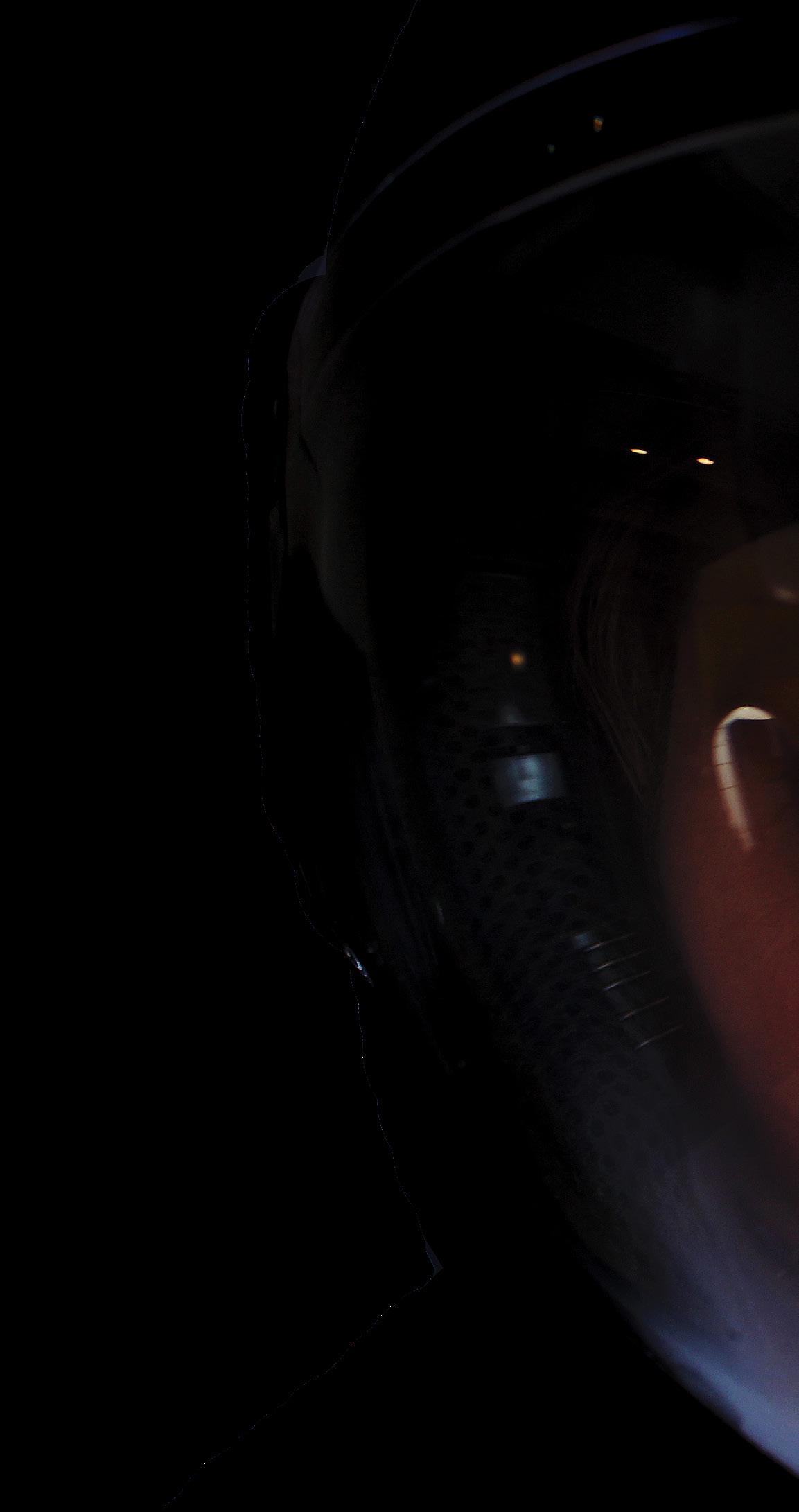
Her demeanor is reserved, but everything about Ellis’s life screams “badass.”



Ivisited Ellis at the home that she shares with her husband Tim Ellis, CEO and co-founder of Relativity Space, an aerospace manufacturing company based in Long Beach that creates many of their parts via 3D printing. (The two met in college at USC when they were each presenting TEDx talks, one of history’s nerdier meet cutes.) For security reasons— because, you see, Relativity Space manufactures rockets—I was

asked not to share specific details of the location of their house. I can, however, verify the house was particularly nice and had a particularly nice view. It’s a big change for them; their last home together was a one-bedroom apartment.
Their new home probably ranks as one of Ellis’s least challenging life adjustments, although adapting to new and exciting living environments has been one of the themes of her life.
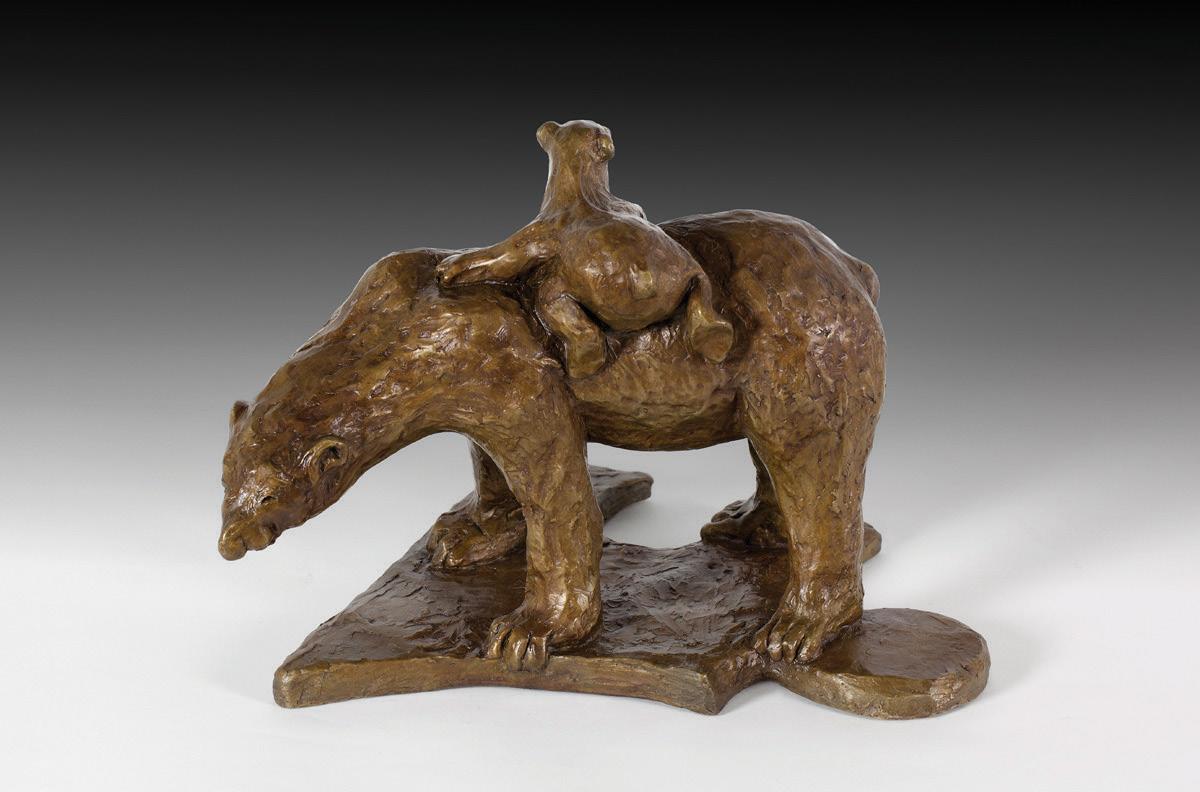







Making large-scale pulp paintings using satellite imagery at the Awagami Factory artist residency in Japan.

Afive-year chunk of her post-college 20s was spent migrating between various scienceand space startup-related artist-in-residency programs. “I learned how to travel the world for free as an artist,” Ellis says. “If I catch three or four residencies each year, I can live out of my backpack and travel the world using my art as my passport.”
Ellis cast a wide net when applying for residencies and ended up attending either 18 or 19. Again, more squinting; the exact number is elusive. She went everywhere—from the Biosphere 2 in Oracle, Arizona, replete with detailed mimicry of Earthly terrains, to a program in the Arctic Circle which found her on a sailboat circling the North Pole. The residencies proved to be a great way to hone her work, explore new places, mingle with fellow artists, scientists, and engineers, and embrace her role as a creative among the STEM elite on the cusp of scientific innovation. “I see it as a creative exchange. There’s a hunger on both sides.”
Another of those artist-in-residency programs was right here in Santa Barbara, at the Donaldson + Partnersdesigned Quantum Google AI campus. Working

alongside Dr. Erik Lucero and Forest Stearns (see The Riv’s Fall 2022 cover story) Ellis created her large-scale painting, Silver: Quantum Rise, which found its home wrapped around one of their quantum computers. This maintains Ellis’s whole vibe of using creativity to celebrate our place within the cosmos, not to mention keeping her art away from those white walls.
And how does she like our vibe? “Montecito has an exciting community of architects, scientists, designers, artists, and technologists pushing the boundaries of what’s possible,” says Ellis. (And we chant, “One of us, one of us…”)
Following the artist residencies, Ellis started participating in a different sort of residency, analog astronaut programs designed to simulate the physical and psychological living conditions on other planets; a comprehensive training ground for spaceflight preparation.
I’ve never met anyone who’s been to space, but having met Richelle Ellis, 33 years old at the time of our interview, I’m sure I’ve met someone who will boldly go there. It’s pretty much at the top of her todo list.

“IT’S IMPOSSIBLE TO EXCLUDE SCIENCE FROM ART,” SAYS ELLIS, “BECAUSE IF ART IS REFLECTING OUR HUMAN EXPERIENCE AND OUR ENVIRONMENT, SCIENCE IS EMBEDDED IN EVERYTHING THAT WE ARE.”

Living Light piece from the Beyond Earth art collective (a collaboration with fellow co-founders Yoko

Alot of Ellis’s ambition is formed by the legacy of Earthrise , the famous and influential early photograph of Earth taken by astronaut William Anders during the Apollo 8 mission. Anders described the Earth as “looking like a Christmas ornament” and he had the presence of mind to snap a quick photo. “That was the first global self-portrait of seeing the Earth rise above the Moon. And that became the most globally collected image in the world.” That photo gave us a national holiday to celebrate the planet, Earth Day, and paved the way for the U.N. developing many of their environmental and social advocacy projects. “For me, it’s about ‘How do we cultivate new Earthrise moments for today?’”
Ellis works under the mentorship of Frank White, the space philosopher who coined the term “the overview effect”—

the transformative sensation of awe astronauts report feeling upon seeing the fragile Earth from space. In our fractured and sometimes frightening times, exposing a new generation to another Earthrise moment seems beneficial and necessary.
Artists often create in order to process their feelings. Ellis, meanwhile, is training to experience a feeling few people have ever had. “It’s not just about getting up there to say I did it,” she says. “It’s about having that experience and being able to bring that experience home and translate it in as many different ways and experiences as I can.”
I often admire artists for their innovative concepts, their adept methods, and the way their work changes me. But in the case of Richelle Ellis, I most admire the scope of her vision, not just for her art, but the way she conducts her life. For Ellis, so much is possible.














by Tiana Molony
Interior designer Scott Corridan is telling me a story. It goes like this: while putting the finishing touches on Dave and Brady Hannah’s home in Truckee, California, he searched for accessories that would make the home feel, well, like a home. This was a “generational home,” meaning it would likely be in the family for a long time and would be a base for family gatherings. It had to feel right for them, strike a nerve, and essentially be perfect. No pressure.
He noticed their grandson, Jeffery, often came up in conversation. “Okay, we’ve got to do something special for Jeffery,” Corridan thought. While sourcing furnishings, he came upon some small bronze frogs and remembered Jeffery’s fondness for the frogs in the creek by the house. He purchased a dozen for $150 and scattered them throughout the home.
During the walkthrough, he, his team, the architects, and the family inadvertently passed by many of his frogs without noticing. When they reached the floating hallway bridge to the primary bedroom, Brady finally spotted one, turned to Corridan, and fervently said, “You.”
The team in front of him parted “like the Red Sea,” Corridan recalls while touching his palms together and pulling them apart. “Jeffery!” Brady cried out to Corridan through happy tears.
Sure, he sourced a $90,000 Randolph & Hein dining table for this project, but “what killed it for
them was $150 bronze frogs,” he says. “That’s what made it come to life, and that’s what I love.”
He started Scott Corridan Design Group in 1994, “When I had hair,” he recalls. He’s calling from Incline Village, Nevada, where he lives and leads an equestrian lifestyle. However, on August 1, he plans to move himself, his family, and the firm to Santa Barbara. “Santa Barbara is home,” he says.
He grew up in Riverside, California, in a Republican, Irish-Catholic household. When he came out as gay to his parents at 19—during the middle of the AIDS crisis—they disowned him. “I don’t want to make light of it because it was really bad,” Corridan says, “but it had all the makings of a sappy, soapy Hallmark movie.” They cut him off, forcing him to drop out of USC after two years of studying architecture. “It is my greatest regret in life that I didn’t finish.”
He didn’t want this to define him, so he moved to Santa Barbara, attending City College before transferring to UCSB and working full-time to support himself. He started out as an art history major (“It was so boring and tedious and snotty and shitty, I just hated it.”), but eventually earned a degree in environmental studies with a minor in urban planning. Later on, his urban planning education would serve his design ethos: “You’re problem solving constantly to create the best environment,” Corridan says. “It ended up being really cool. And I think I wasn’t smart enough to know that at the time.” photo by Kim Reierson

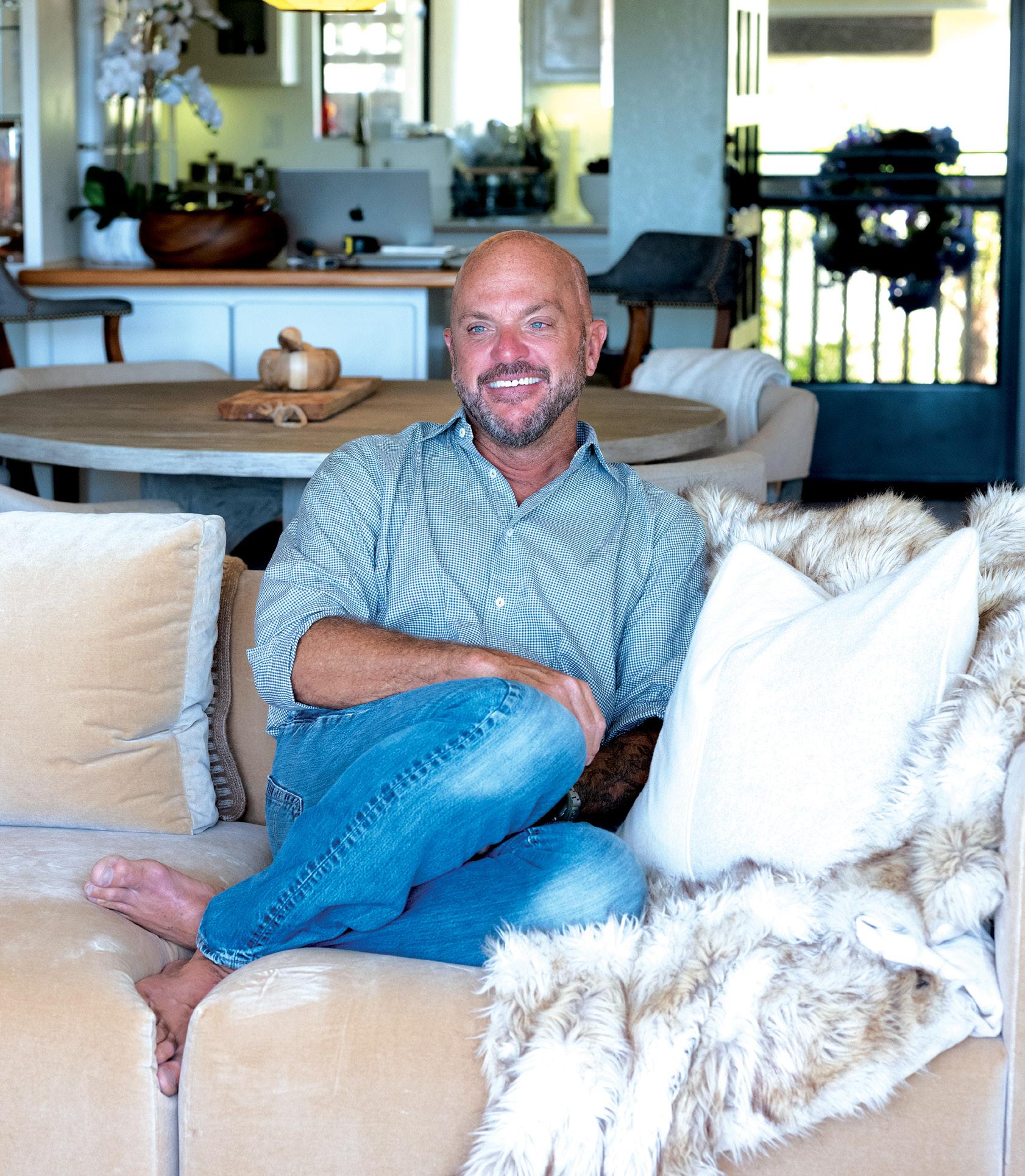

Corridan’s first stabs at interior design started in his twenties with coffee houses, cafes, and some retail stores. He completed his first independent project for Santa Barbara Roasting Company, where he previously worked as a barista. Then a flower shop in Montecito’s Upper Village. The gigs were great, he says, but he wanted more. In his words, he was “a punky 23-year-old who wanted to prove himself.”
And boy, did he.
Corridan dove into the world of event planning—birthday parties, weddings, and fundraisers—completing nine Dream Foundation luncheons; made appearances on various television shows—The Tyra Banks Show, Extreme Makeover: Wedding Edition, and Say Yes to the Dress, to name a few; and launched a successful wedding dress brand aptly named White Chocolate Label.
He rode this high for 27 years, but as much as he wanted to stay, it came time for a change. He had an epiphany: “You just begin to realize as a bald-headed middle-aged gay guy, like, you’re really losing cred with the brides, so I thought, well, it’s time to go back to interior design.” Interior design it was, but through “hard work and great referrals,” he was able to level up and take his talents to the grandest of estates, Mark Zuckerberg’s house in Tahoe among them.



“I was a young punk,” says Corridan, “and so just being told what to do was not my thing.”
Corridan doesn’t view his impressive roster as an indicator of his success, but rather a result of staying true to himself. After all, his motivation to pursue interior design stemmed from a belief that every individual, every client, has their own narrative which should be celebrated. As his website proclaims, “Empower who you are.” When I talk to him, I don’t see someone with a sad upbringing. Instead, I see someone who took control of the narrative of his life after spending many years being told to be something that he was not.
He extends the same courtesy to his clients. In the same manner in which I construct words on a page to tell his story, Corridan is purchasing bronze frogs because he understands his clients’ stories well enough to recognize the weight those frogs carry.
“I’m not a doctor, I can’t do surgery. I’m a designer,” he says. “And so, as a designer, I need to lean in heavily on what I do to tell the story.” When it comes to those final details of a project, he constructs the ending. Closes the chapter. Finishes the book. It’s through these details that Corridan’s true talents are evident.
It can be a photograph of the family or a sentimental allusion like the bronze frogs. No matter how seemingly infinitesimal, this is how he brings the client forward. This is precisely what takes him from an interior designer to a storyteller.
“It took me a while to understand why I love people’s stories more than I care what they buy,” he says. This is why, rounding 55 years old, he’s finding it hard to let go. It’s intrinsically a part of who he is. What keeps him going is the storytelling. Or perhaps, the effect of his storytelling. “ What keeps me coming back are the happy tears.”
photo by Kim Reierson



by Les Firestein
For the past few centuries, humans have had a fraught relationship with nature’s call. Certainly in the West when it comes to the elimination of waste, humans are divided into vastly different schools: Team Gwyneth thinks the home lavatory should be a “fab-atory,” a sumptuous, personal wellness spa complete with sound bath and essential oils. And then there are those who think the loo should be a disappearing act, a brief-as-possible reminder of our inescapable ties to biology.
The debate is worth considering because the bathroom is, cumulatively, where the average person spends one to two years of their entire life (which translates into approximately three waking years, more time than JFK spent as president). Do you spend
more time in the loo than in church? Probably. How and where one spends that time is significant.
As we consider whether the immovable porcelain seat should be grandiose or incognito, it’s useful to reflect on how humankind’s relationship with la salle de bain has evolved greatly over the past several thousand years. Spoiler alert: the toilet-as-throne may be on the precipice of making a triumphant comeback.
It’s interesting to note that before it got Gooped, the toilet has pretty much only been indoors for the past hundred years. Several ancient civilizations bragged of being the true inventors of sophisticated sanitation. And while the Greeks, Romans, and Egyptians all built impressive lavatoria, their systems were also deeply and critically flawed. That’s probably why they were only discovered upon archaeological excavation.
Most people think of going to the bathroom as a private act. In contrast, the ancient lavatory was often where people gathered and conversed, frequently with 20 or so seats formed in a square, like at a dinner party, but after the meal.
Unfortunately, back in the day the bathroom was a communal
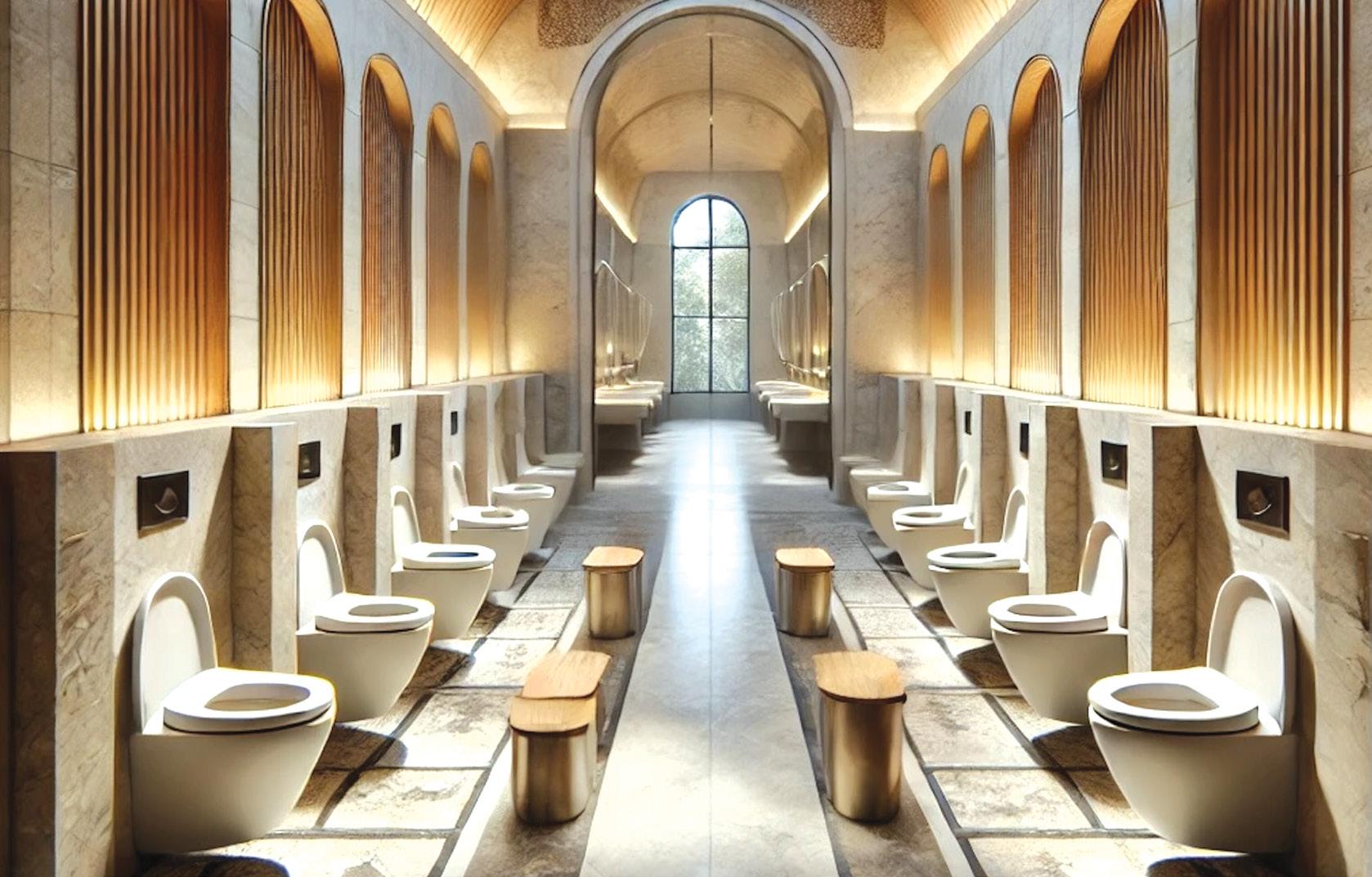
Most people think of going to the bathroom as a private act. In contrast, the ancient lavatory was often where people gathered and conversed, frequently with 20 or so seats formed in a square, like at a dinner party, but after the meal.
place with not only shared conversation but communal hygiene. Regardless of what you may have heard about plastic straws, let’s just say there are some things in life that are definitely better off single use.
As a result, a whopping five percent of all human deaths up until the last century could be traced back to poorly managed sanitation. The disposability of toilet paper and mobilization of waste were actually important scientific developments on a par with sterility and pasteurization and hand washing.
You can thank a gent named Joseph Gayetty for inventing toilet paper in 1857. Although it’s also worth noting that toilet paper didn’t become—wait for it—“splinter free” until 1935. And you thought single ply was bad. Times could be harsh back in Teddy Roosevelt’s day. No wonder they called them the “Rough Riders.”
Back then there were only two strategies for dealing with waste and both were bad. People either kept their effluence relatively close to its point of origin for the sake of convenience, or people would channel their waste to the nearest running body of water, which gave rise to a whole other raft of problems, like cholera.
You may wonder where the phrase going to “the loo” came from. It’s actually an anglicization of the French phrase “regardez l’eau” (eau is French for “water”) which was shouted out the window before the contents of a chamber pot were hurled into the street. Just in case you’re turning up your nose at the waste


High end? You can thank a gent named Joseph Gayetty for inventing toilet paper in 1857. Although it’s also worth noting that toilet paper didn’t become—wait for it—“splinter free” until 1935. And you thought single ply was bad.



management proclivities of the French, things were no better at the other end of the English Channel where the Thames then was like the Ganges is now.
Stateside, we had our own issues related to a fuzzy understanding about how disease is spread. Not to mention additional misunderstandings about the hazards of methane, which gave new meaning to the phrase “silent but deadly.” Back then it was not just a figure of speech.
It wasn’t until the early twentieth century that indoor plumbing finally proliferated. Someone who had a lot to do with that was the human rights activist Jacob Riis. Riis photographed all sorts of squalor on Manhattan’s Lower East Side, housing that wasn’t just unsafe but profoundly unsanitary. Riis’s book, How the Other Half Lives, was sort of the photographic companion to Upton Sinclair’s screed against the meat-packing industry, The Jungle. Back then tenement housing still had communal outhouses, and Riis’s evidence of their squalor led to the Tenement Act of
1901, which codified proper ventilation as well as indoor plumbing and mandated at least one flushing toilet per floor. That’s when the outhouse gave way to the “water closet” and finally moved inside. Thus in the early twentieth century, the bathroom no longer served the community (for better and for worse) and the washroom was well on its way to becoming the citadel of sanitized, scented solitude that it is today.
Today, a century later, the water closet has come a long way. There are power-assist toilets, there’s a whole Diane Von Furstenberg book about the bathroom, and no one can deny the Japanese have taken the toilet to the next level (see Jeff Wing’s excellent companion piece on the Tokyo Toilet project).
But isn’t there a next, next level? Long behind us are the days of the utilitarian water closet, barely larger than a voting booth. Fortunately, AI helps us imagine a different world. The limits of the toilet are only limited by your prompt.

BY JEFF WING
“Innovation” is a defining trait of the busybody human race. Gene editing, the Mars Rover, string—it’s a pageant. The mother of all this invention has long been Necessity, and we can perhaps all agree that necessities yield the most magnetic innovations. A manned mission to Planet X is intellectually engaging, but of all the project’s intriguing astrophysical elements, the public imagination could surely flock to the contingencies of what to do with our… shall we say effluence in deep space. And so we come to the Hidealoo—“the retractable toilet for small bathrooms and small spaces.” In plain speak, the Hidealoo is a standard-looking toilet that swings on a pivot and folds away in a cabinet or other functional enclosure. Novel? Sure. But it’s a consequential space-saving measure that’s gaining traction all over the world. The Hidealoo, a U.K. startup, has been justly recognized as a meaningful contribution to modern life, taking the 2023 European Product Design Award, and in 2024 the KBB Innovation and Best New Product awards in the U.K.
Hidealoo’s inventor, Monty Ravenscroft, has been designing what he calls “moving architecture” for 30 years, his many bespoke global clients delighted by the retractable roof, the massage table that rises with an electronic whisper from beneath a previously seamless polished wood floor, the gorgeous glass wall that sinks into its mechanized slot to make the dining room an extension of the garden (weather permitting). Ravenscroft’s own family situation provided the more prosaic genesis for the Hidealoo, as he explains to The Riv.
“My dad wished to remain at home for his last few years of palliative care. Given my lifelong experience of adapting moveable architecture to our needs, it seemed an obvious opportunity to use my design knowledge to do the same for my father’s room—to both optimize his use of that limited space, and to provide him the comparative dignity of not having a visible commode in his living area. Older adults reportedly suffer 80% of their falls while on the way to the toilet at night. Fitting a Hidealoo in or near a bedroom can mean a reduced risk of falling in that context.”
The Hidealoo’s space-reclaiming design seems to have broad appeal across Europe, Asia, and the U.S. It’s been tested to support 400 kilograms in weight (~880 pounds), making it amenable even to silverback gorillas. Its flexible pipes and tidily engineered swivel mechanism have been put through the repetitive-motion quality and safety ringer to upwards of 250,000 cycles.
“For nearly 30 years I’ve been designing moving architecture for the world’s most discerning clients,” Ravenscroft says. “As much as I’ve enjoyed the opportunity to make extraordinarily beautiful and dramatic installations, Hidealoo is an opportunity for me to use my years of engineering experience to have a far greater impact on the population as a whole. After all,” he says with a smile, “who isn’t struggling to make better use of the space into which our lives are ever more tightly jammed?”

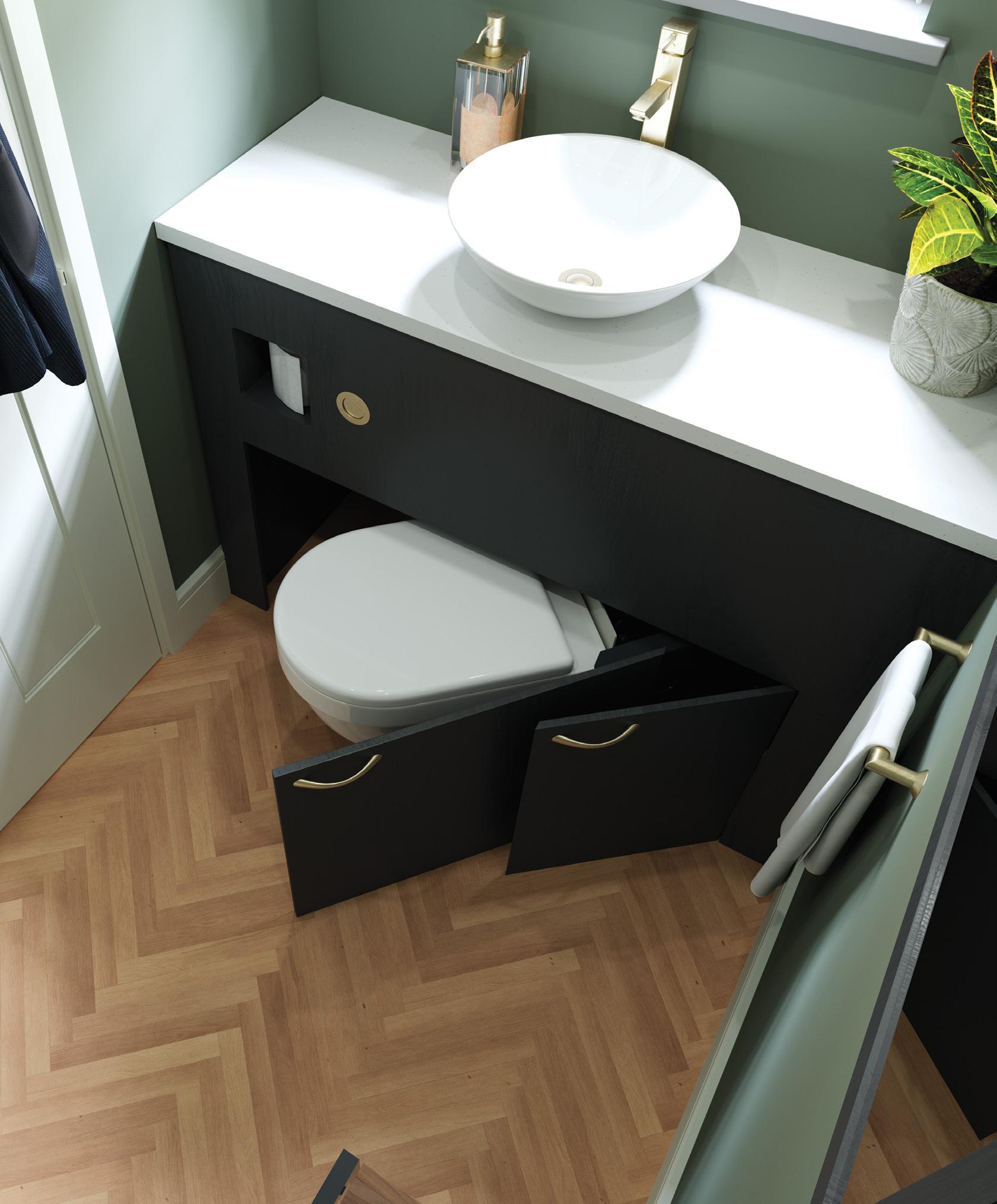
“IT SEEMS INSANE THAT WE BUY AND MAKE ROOM FOR SOMETHING THAT WE DON'T USE 99% OF THE TIME."
-HIDEALOO INVENTOR, MONTY RAVENSCROFT
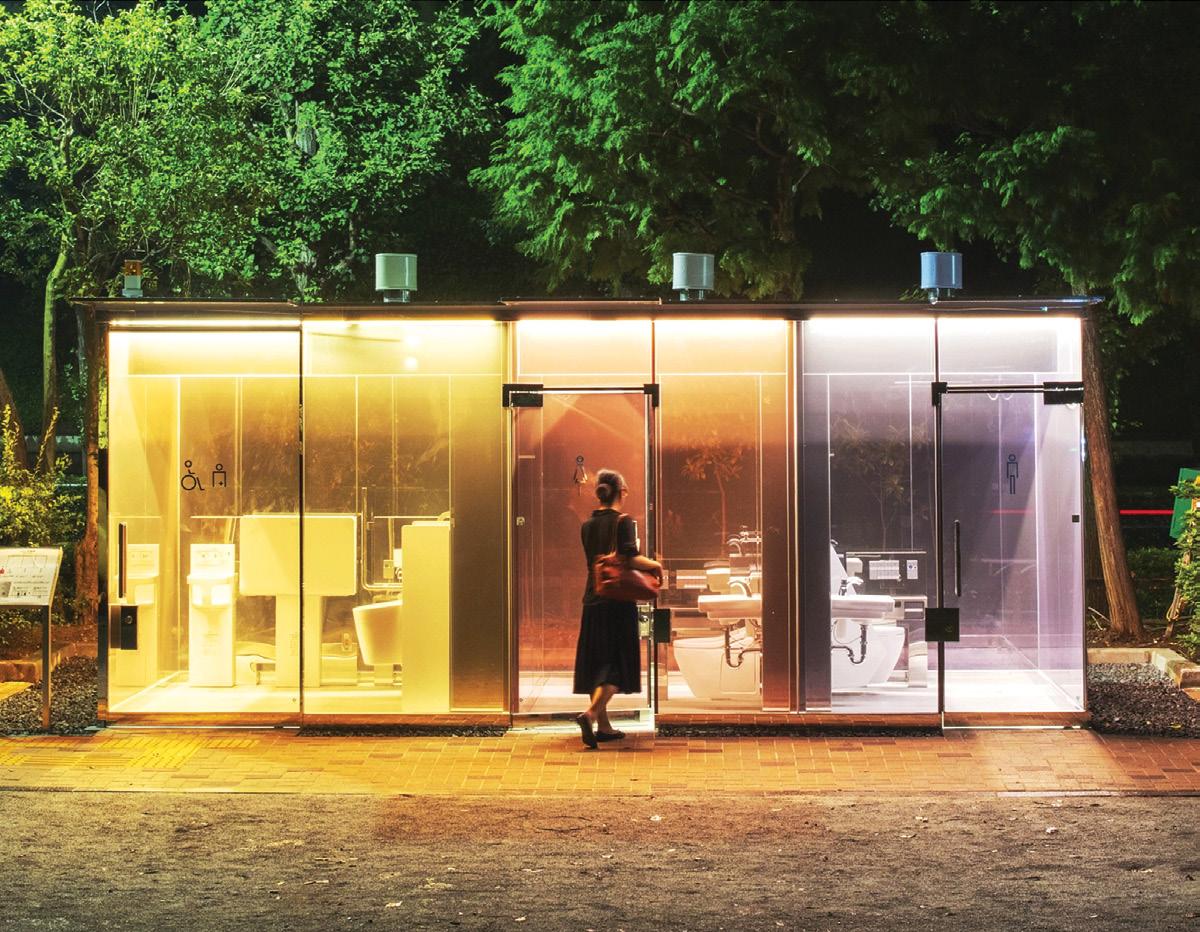

THE TOILET, YOYOGI FUKAMACHI MINI PARK, BY SHIGERU BAN
is a transparent rectangular structure with lovely glass walls in tinctures of orange, pink, and purple and looks vaguely like a Pinkberry. Only the most inept creeps will attempt to conceal themselves inside a transparent glass box. The pleasantly-colored glass enclosure becomes opaque when the bathroom is locked and occupied. One hopes.
MODERN KAWAYA, EBISU PARK, BY WONDERWALL DESIGN STUDIO
is visually based on Japan’s neolithic kawaya hut (10,000 to 6,000 BCE), which would be suspended over a rushing river for easy and rapidly-removed dispersal of bodily hoo-ha. Its modern counterpart features 15 “randomly” placed board-formed concrete walls, suggesting the wood and soil construction of traditional kawayas. The swift-moving neolithic river has been replaced with equally reliable, if less musical, plumbing.
Asking 16 award-festooned architects to each design one of 17 public toilets in a thronged section of Tokyo is like chumming shark-infested waters, and their vibrant competing visions have drawn global attention. The Tokyo Toilet was further exalted by director Wim Wenders’ glorious film Perfect Days, chronicling the outwardly monk-like life of a Tokyo Toilet maintenance man with a mysterious past (the truly miraculous Koji Yakusho). Thrones indeed.
photos by Satoshi Nagare (Courtesy: Shibuya City)
BY JEFF WING
COAX HESITANT JAPANESE INTO ARCHITECTURALLY STUNNING PUBLIC TOILETS? YES.
muter rail stations—Shibuya Station and Shinjuku Station; the former synonymous with up-to-the-minute hipster fashion and Japan’s quicksilver youth culture. Thus, Shibuya was the perfect candidate for the much-publicized installation of swinging ”look at me!” toiletry.
On June 23, 2023, the project concluded with the formalized handover of the post-modern porcelain to Shibuya’s administrators. The occasion’s public pronouncements were uniquely commode-centric. Jumpei Sasakawa, executive director of the Nippon Foundation, summed up The Tokyo Toilet mission: “This project used the design and creative talents of 16 leading creators to erase the conventional negative image of public toilets, referred to in Japanese as the ‘4 Ks’: kusai [smelly], kurai [dark], kowai [scary], and kitanai [dirty].” Let’s flush out a representative sampling of the toilets in question:
BY KAZOO SATO
is a spheroid, voice command-driven bathroom experience. The designer’s three years of research indicated a generalized terror of touching any public restroom surface with the hands, including doors, toilet paper dispensers, and buttons. The bladder-panicked user need only yell “Hi, Toilet!” to initiate a contactless episode of micturition. I’m not sure I want to be on speaking terms with my toilet, but okay.
cleaned thrice daily with an almost surgical fastidiousness, and inspected monthly with similarly crazed thoroughness.
These 17 inventive and attention-getting public restrooms (yes, one has been designed by Tadao Ando who we discuss further in another article in this issue) would be tactically distributed around Shibuya ward, Tokyo’s commercial and financial center. Why Shibuya? The district has a population density of around 40,000 people per square mile. That brute fact alone may be as eloquent a case as need be made for approachable public toilets in the area. Shibuya also plays host to two of the world’s busiest com-
pushers don’t push too hard. The storied Nippon Foundation—since 1952 a private, nonprofit grant-making organization—is determined to change that perception with prize-winning public restroom architecture and come-hither designs. Yes, we’re still talking about public toilets. The Tokyo Toilet project invited 16 award-winning and prestigious architects to design their respective visions of compelling public toiletry. Each design would need to be aesthetically striking, feature solutions to the cultural disdain that has long haunted the Japanese public rest stop, and be accessible to everyone regardless of gender, age, or disability. The toilets would be
Americans are an unfussy, hurried people not generally known for their insistence on white glove hygiene. But even here in the States, the public toilet is an emblem of blanching disgust. Imagine, then, the consternation around the public restroom in Japan—a country known for its forensic cleanliness and meticulous sense of order. Public facilities in Japan have long been avoided by a skittish citizenry—the tormented Japanese bladder often willing to take its chances on the tube ride home rather than brave public porcelain. Just hope those Japanese subway

California’s sun-soaked Southern and Central Coast comprise some of the wealthiest zip codes in the USA—possibly to do with the weather. Are we talking about a census-designated region of the ultra-affluent? Let’s put it this way: yes. But the beating heart of the matter is not affluence, but home. The Riv’s readership pour their hearts into some of the most uniquely beautiful domiciles on Earth. They deserve a listing of master craftspeople whose skills and instincts help turn a lovely house into a glowing, nourishing home. Welcome to The Riv Excellence Index.


sbclearview.com


Whether contemporary or traditional in style, our architecture strives for an appreciation of place and time. The work is diverse and eclectic, and we reject the idea that a successful design practice needs to be “branded” or have a consistent signature style, or that architecture always has to shout.
www.appleton-architects.com

Ramsey Asphalt offers commercial and residential paving, chip seal, and concrete solutions designed to look better and last longer. For over 25 years, they have been serving San Luis Obispo, Santa Barbara, Ventura, and Los Angeles counties. (805) 928-9583 www.RamseyAsphalt.com

Luxury Interior Design Studio
MARGARITA BRAVO transforms spaces with bespoke designs that integrate elegance and functionality. Our full-service firm offers personalized interior design, custom furniture, and comprehensive project management. margaritabravo.com

With 3 large exhibition spaces and an inventory of over 3,000 paintings, watercolors, drawings, prints and sculptures, Sullivan Goss is a primary West Coast gallery positioned to help build private and public collections of important American art.
www.sullivangoss.com

At Pampel Design, we blend modern technology with sophisticated design to offer locally crafted interior and exterior shade solutions. Based in Santa Barbara, our sew room delivers quality upholstery with unmatched precision. Partnering with KE Outdoor, Lutron, and Sunbrella, we provide premium products, including interior window coverings and retractable awnings that enhance your space with customizable shade and modern convenience. www.pampeldesign.com

Celebrating 30 years, our family business is the Central Coast's largest store for luxury brands including Stressless, American Leather, Tempur-Pedic, and Stearns & Foster. Now in Santa Barbara. www.mattressmikesb.com

For over 40 years, Agoura Sash & Door has been providing windows, doors, and building materials to Los Angeles, Ventura, and Santa Barbara counties. Come visit our 12K sq. ft. showroom and design center. www.agourasash.com
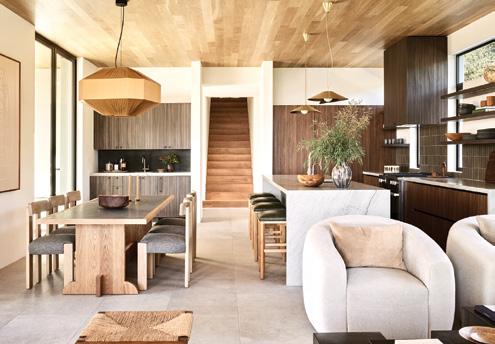
For over 40 years, Allen Construction has built a reputation for building high-quality, healthy homes for our neighbors in the Santa Barbara area with a commitment to environmental responsibility. BuildAllen.com

AB design studio is a Southern California based world-class architecture, interior design, and urban planning firm providing client driven, high-quality design, documentation, permitting, and construction services. www.abdesignstudioinc.com

Founder and designer Stephanie Kaster is your visionary guide to creating elegantly sophisticated spaces that transcend mere functionality and become exceptional works of art in themselves. Colleague Ken Frye, master wood craftsman, and Stephanie passionately focus on every custom project, historic restoration, and furniture piece with an unwavering commitment to quality. We offer architectural interior design, exquisite hand-crafted woodwork, consulting, and space planning.
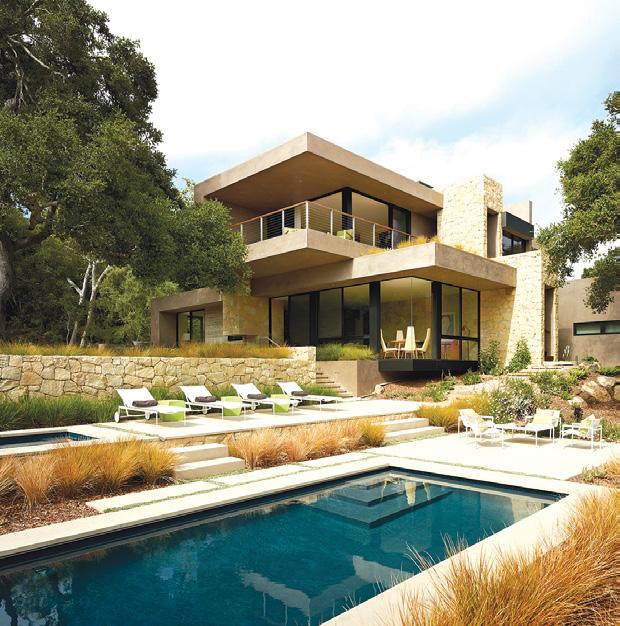

Harrison Design specializes in high-end residential architecture, interior design and landscape architecture. As a proud member of the community for over 20 years, Santa Barbara’s rich heritage, culture and surroundings provide endless inspiration to draw upon. harrisondesign.com
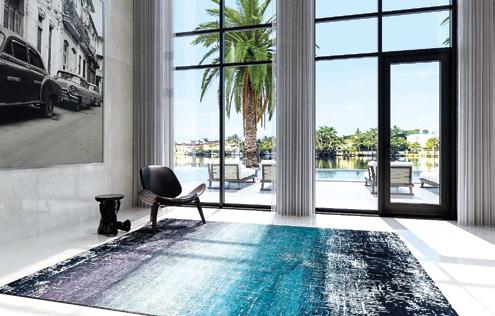
We bring the finest handmade carpets from all over the world, with hand-spun wool and vegetable dyes, made by local weavers. We have the largest selection of contemporary rugs to offer. www.arrediamo.com
Marmol Radziner offers architecture, construction, interior design, and landscape architecture services in Montecito and surrounding communities. The firm’s designs create inviting spaces that seamlessly blend indoor and outdoor areas.
www.marmol-radziner.com

Jodi G. Designs is a full-service design house led by Jodi Goldberg. Jodi's team works closely with clients to curate dream homes, from initial concept to final installation, working collaboratively with architects and builders.
www.jodigdesigns.com

Elevate your space with our handcrafted iron curtain rods, made in Paso Robles. For over 25 years, we've brought rustic elegance to homes across the U.S. and Canada. Our custom rods, including French return, bay window, and corner options, are handpicked by designers like Sarah Solis (featured above) and used in iconic spaces such as Soho House Austin. Our price point and lead time are unmatched.
ironhardware.com



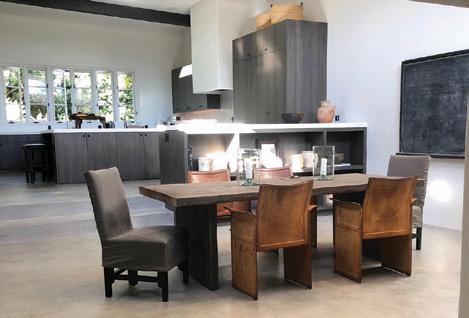
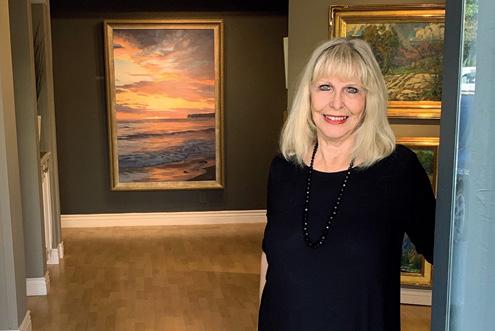

Uniquely inspired by the individuality of each client and location, a Wade Weissmann Architecture house is a custom representation of a specific dream, yet every house embodies hallmarks of timeless design and heirloom quality craftsmanship that only get better with age.
wadeweissmannarchitecture.com

Marc, a renowned interior designer with 40 years of sourcing experience, has opened a retail space to showcase his passion for antiques. mngdes.com

Lost wax cast limited editions of allegorical and playful themes. Montecito based.

Call 802-379-8172 for an appointment. www.susanreadcronin.com Land Arts by MDL.
Sensitively marrying architecture, gardens, interiors, and one's personal lifestyle. For over 40 years, we have designed exquisite, award-winning period gardens throughout California and the U.S., always maintaining architectural integrity.
www.markdavidlevine.com


Welcome to The Tile Galleria, where sophistication meets detail in every tile selection. My meticulously curated collection showcases an exquisite range of designs, textures, and colors, ensuring that each piece contributes to a stunning aesthetic for your space. Whether you're looking to create a serene bathroom retreat or a vibrant kitchen centerpiece, my tiles are crafted to elevate your interior design to new heights.
www.thetilegalleria.com

HISTORIC PROPERTY WITH BREATHTAKING VIEWS
This historic property offers a rare opportunity to design your dream home and lifestyle, commanded by breathtaking ocean, coastline and mountain views.
TWO PARCELS IN HOPE RANCH

Unique property on 5.5 acres in Hope Ranch with panoramic ocean and mountain views. Includes lighted tennis court, detached guest quarters, and garages for 6 cars.
4475 Via Abrigada, Hope Ranch
$16,000,000
Randy Solakian Estates Group 805-886-6000
Coldwell Banker Realty
DRE#: 00622258
MODERN HOPE RANCH

Elevate your lifestyle in this meticulously remodeled 5-bed, 5.5-bath modern estate atop a private 3.35 acre knoll in exclusive Hope Ranch. With 360° ocean, island and mountain views, this gated retreat features a pool, tennis/pickleball court and a versatile mostly single-level layout.
4558 Via Esperanza, Santa Barbara
$14,995,000
Daniel Zia, Zia Group 805-364-9009
Zia Group DRE# 01710544 | Exp Realty DRE#: 01878277
1820 Santa Monica Rd, Carpinteria
$29,000,000
Kerry Mormann 805-689-3242
Coastal Ranch | Kerry Mormann & Associates DRE#: 00598625
CONTEMPORARY MONTECITO

Moderngated contemporary home in the heart of Montecito, set on 6.99-acres, with 360-degree panoramic views of the ocean, islands, and surrounding mountains. A spectacular design by architect John Kelsey, this exquisite property seamlessly blends luxury and nature.
1130 East Mountain Drive, Montecito
$12,995,000
Don Johnston Sutton 805-951-7331
Montecito Luxury Group DRE#: 01868263

Rare and fortunate opportunity to purchase one of the most historic homes in the Santa Ynez Valley. Rancho Juan Y Lolita, also known as Palacio del Rio, is an unforgettable Edwards & Plunkett designed hacienda and estate with sweeping views.
3280 Via Rancheros, Santa Ynez
$12,950,000
Carey Kendall Village Properties DRE#: 00753349
805-689-6262

glass walls blur indoor/outdoor living, enhancing natural light & design details. Elegant 4-bed, 4.5-bath, ocean & mtn view home features limestone flooring, gourmet kitchen, studio, & a luxurious primary suite. Eco-friendly w/ solar, EV chargers, & Savant system.
581 Freehaven Drive, Montecito
$11,950,000
Grubb Campbell Group 805-895-6226
Village Properties DRE#: 01236143

This
single-level garden estate overlooks the 4th fairway on a picturesque 1.4-acre parcel within the coveted Birnam Wood golf community. With mountain views and romantic oaks, this property offers a tranquil setting at a great new price!
2125 Ten Acre Road, Montecito
$10,200,000
Marsha Kotlyar Estate Group 805-565-4014
Berkshire Hathaway HomeServices California Properties
DRE#: 01426886

with style and authenticity, this Hedgerow estate has been modernized while staying true to its classic Spanish character. Circa 1924, this vintage estate was thoughtfully reimagined by the renowned celebrity designer Paul Fortune and most recently updated by Cliff Fong.
1586 San Leandro Lane, Montecito
$8,495,000
Marsha Kotlyar Estate Group 805-565-4014
Berkshire Hathaway HomeServices
California Properties
DRE#: 01426886
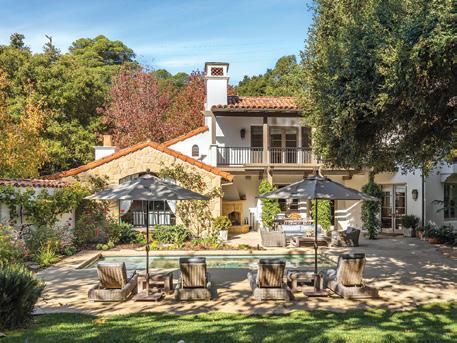
Meticulously crafted, no detail was overlooked in the creation of this 1.3-acre haven. The 5-bedroom villa, each with its own ensuite, boasts a regal entrance with soaring ceilings, barrel-shaped hallways, and Italian tiles, complemented by alder wood flooring and wrought iron fixtures.
290 Sheffield Drive, Montecito
$10,475,000
Gary Goldberg 805-455-8910
Coastal Properties
DRE#: 01172139

Tucked at the end of a cul-de-sac, this elegant Cape Cod-style home on .93 acres features 4 bedrooms, a remodeled kitchen, high-beamed ceilings, and abundant natural light. Outdoors, enjoy a new pool, hot tub, and serene landscaped gardens.
2297 Featherhill Road, Montecito
$7,975,000
Cristal Clarke 805-886-9378
Berkshire Hathaway Home Services
California Properties
DRE#: 00968247

STATELY GEORGIAN REVIVAL IN UPPER EAST
Welcome to the Upper East's finest: a stately Georgian Revival masterpiece built in 1907 by Francis W. Wilson, the architect of the Santa Barbara Museum of Art. This American Colonial gem is resplendent with modern luxuries, featured in the 'Santa Barbara Architecture' book.

Located in the prestigious Upper Riviera, this 1930 Spanish Colonial by architects Edwards and Plunkett offers ocean views, elegant living spaces, two primary suites, and lush gardens. Recently restored, this historic home blends timeless charm with modern comforts.
1800 El Encanto Road, Santa Barbara
$7,000,000
Cristal Clarke
805-886-9378
Berkshire Hathaway Home Services
California Properties DRE#: 00968247
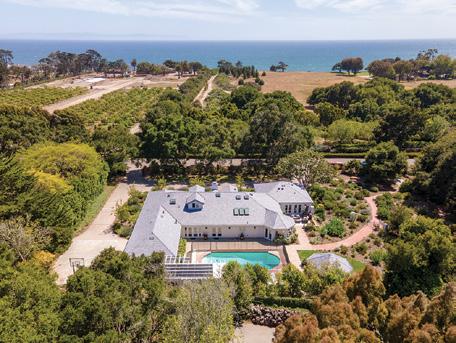
Located on one of the most desirable streets in Hope Ranch, sits this beautiful, 5 BD/7 BA recently remodeled home. French doors lead outside to a patio that overlooks the sparkling pool, outdoor kitchen, bocce court, guest studio & orchard.
4660 Via Roblada, Hope Ranch
$6,695,000
Team Scarborough 805-331-1465
Berkshire Hathaway DRE#: 01182792
1731 Santa Barbara Street, Santa Barbara
$7,395,000
Marsha Kotlyar Estate Group 805-565-4014
Berkshire Hathaway HomeServices California Properties DRE#: 01426886

Near the Upper Village, this single-level gated Villa by Nils Holroyd features 3 beds, 2.5 baths, a chef's kitchen, and lush, award-winning gardens with a pool, spa, and outdoor kitchen. Located in the Montecito Union School District.
486 Cota Lane
$6,749,000
Crysta Metzger 805-453-8700
Sotheby's International Realty DRE#: 01340521

Bonnymede oceanfront condo blends modern aesthetics with coastal charm. Enjoy natural light, panoramic ocean views, and resort-like amenities including 24-hour gated security entrance, private beach access, pool, hot tub, tennis court, clubroom, fruit trees, and oceanside patio.
1385 Plaza Pacifica, Montecito
$6,700,000 Lisa Foley 805-252-2271
Goodwin & Thyne Properties, Inc. DRE#: 01995513
PRIVACY WITH EXPANSIVE VIEWS

Private
16-acres with breathtaking views.
French doors connect nearly every room to the natural setting. Features mature oaks, prolific fruit orchard, and sculpture-like boulders. Includes 4 bedrooms plus 1-bedroom detached guest house.
2671 Painted Cave Road
$4,900,000
Randy Solakian Estates Group
805-453-9642
Coldwell Banker Realty
DRE#: 00622258 LUXURIOUS OCEANFRONT CONDO

Located in Montecito’s Hedgerow neighborhood, this 1929 French Normandy-style home features lush gardens and ample living spaces. Designed by George Washington Smith, it offers a unique piece of Montecito history.
175 Miramar Ave, Montecito
$6,250,000
Tyler Kallenbach 805-695-2533
Montecito Valley, Compass DRE#: 02021945

Experience
tranquil living just minutes from the best Montecito beaches in this stylish single-level contemporary home. Tucked away in Montecito's coveted Hedgerow neighborhood, it boasts elegant interiors, designer finishes, and meticulous attention to detail.
135 Pomar Lane, Montecito
$5,995,000 Marsha Kotlyar Estate Group 805-565-4014
Berkshire Hathaway HomeServices
California Properties
DRE#: 01426886

This exquisite Arts & Crafts home embodies elegance and functionality, perfectly blending historic charm with modern amenities. Coastline, ocean & mountain views, this 4 bedroom, approx 4000 sq ft home on 1-acre is a sanctuary of beauty & tranquility. Large pool with spa.
1850 Gibraltar Road, Santa Barbara
$4,695,000
Tim Walsh 805-259-8808
Village Properties
DRE#: 00914713

of a French country cottage, this 3-bed, 3-bath single-level home resides in a gated, incredibly enchanting acre, with every window offering a romantic vista; lantern-lit oak glen, cascading waterfall, passion fruit vine-covered greenhouse, and many more!
843 Knapp Drive, Montecito
$4,495,000
Jen Plana 805-895-2112
Village Properties
DRE#: 01145050

CHARMING SINGLE-LEVEL IN MONTECITO OAKS
Nestled in the heart of the prestigious Montecito Oaks neighborhood with mature oak trees, this 3 bedroom, 3 bathroom, 2,276+/- square foot singlelevel home with a detached garage and 50s charm is ready for its next chapter.
MISSION CANYON CRAFTSMAN MONTECITO TOWNHOUSE
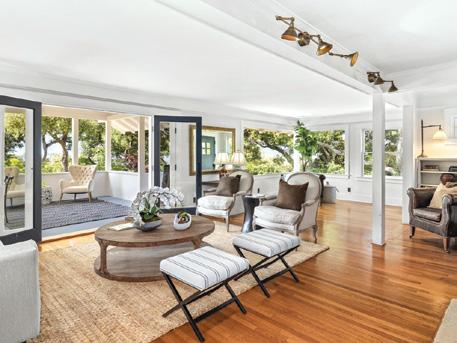
Nestled in Lower Mission Canyon, this 1913 Craftsman home offers 4 beds, 3 baths, a spacious kitchen, multiple living areas, serene gardens, and a 520 sq. ft. accessory building. Enjoy lush surroundings and St. Anthony's Bell Tower views.
841 Mission Canyon, Santa Barbara
$3,995,000 Crysta Metzger 805-453-8700
Sotheby's International Realty DRE#: 01340521

Newly re-imagined Montecito townhouse, perfectly situated in the coveted Butterfly Beach neighborhood, in MUS district and walking distance to Coast Village Road. The well-designed, spacious floorplan offers seamless flow between rooms and to the back patio with multiple entertaining spaces.
56 Olive Mill Lane, Montecito
$2,950,000
Calcagno & Hamilton Real Estate Group 805-565-4000
Berkshire Hathaway HomeServices California Properties DRE#: 01499736/ 01129919
141 Santa Elena, Montecito $4,295,000
Emily Kellenberger 805-252-2773
Emily Kellenberger & Associates DRE#: 01397913
From picturesque beaches on which to spend the day on the sand; to multiple luxury resorts to bask by the pool or enjoy a spa day; to a lively downtown scene with five-star dining, boutique shopping, and historic theaters, Santa Barbara and neighboring towns offer an ideal place to vacation.

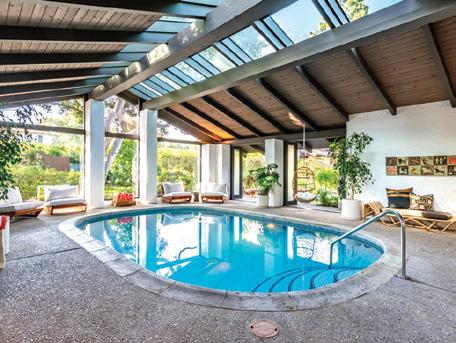
Revel in the beauty of nature and fun design at Harcourt House for your next getaway. Enjoy an indoor pool, outdoor Jacuzzi, bocce ball, and alfresco dining. A one-of-a-kind experience!
Price: Inquire for rates Paradise Retreats 805-275-1851
DRE#: 02090892

Casa
Vida in Los Cabos merges supreme luxury with exquisite design. This six-bedroom estate boasts ocean views, private beach club access, and bespoke concierge services, accommodating up to 16 guests in unrivaled comfort.
Padre Kino 210, Puerto Los Cabos, San José del Cabo, Mexico
Rates start at $2000/night Sun Cabo Vacations 800-710-2226

Villa las Abejas in Los Cabos blends beachfront luxury with sophistication. This prestigious three-bedroom home in Palmilla offers stunning ocean views, high-end amenities, and private beach access for an unforgettable vacation.
Villas del Mar 131, Palmilla, San José del Cabo, Mexico
Rates start at $2500/night Sun Cabo Vacations 800-710-2226


Step inside this unique lodge inspired by European Alpine chalets. Boasting ski-in-ski-out access to all three of Deer Valley's® base areas, a wine room, theater, game room, chef's kitchen and stunning views, this home epitomizes luxury mountain living and entertaining.
7902 Red Tail Court, Park City, Utah
$16,000,000
Onie Bolduc 435-631-1615
Summit Sotheby's International Realty TimberCrestDV.com
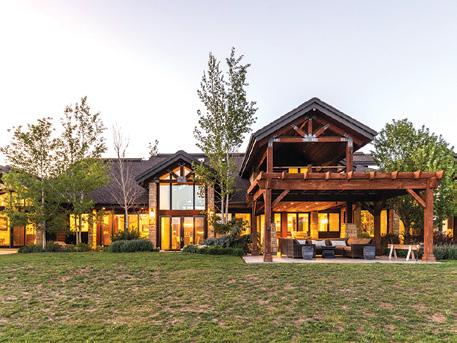
Welcome to Wapiti Ranch, a 12-acre equestrian property epitomizing luxury mountain living. Featuring stunning views of Deer Valley's® ski slopes, spacious living areas, a six-stall barn, indoor and outdoor riding arenas and water rights, this ranch offers an unparalleled lifestyle.
7778 N Greenfield Drive, Park City, Utah
$9,450,000 Onie Bolduc 435-631-1615
Summit Sotheby's International Realty Wapiti-Ranch.com

The epitome of exquisite contemporary elegance awaits in this exceptional Old Las Palmas residence. The expansive 5,450 square feet of luxurious living space has 4 suites with stunning baths and private patios all nestled on a generous walled and gated 1/2-acre lot.
500 West Crescent Drive, Palm Springs, CA
$5,250,000 Don Johnston Sutton (310)880-6566
Sotheby's International Realty DRE#: 01868263
MLS #: 219108203DA
sun cabo vacations


Handpicked villas that epitomize unmatched elegance and comfort amidst the breathtaking landscapes of Los Cabos.
• Signature Villas —Each villa is the embodiment of luxury. Handpicked, ensuring they meet the highest standards of comfort and elegance.
• Stunning Views—Every sunrise and sunset paints a picture of serenity against the canvas of the Pacific.
• Personal Touch—From private chefs to exclusive tours, our professional team of Concierges curate memories just for you.
• Gastronomic Delights—Private chefs craft epicurean journeys tailored to tantalize your taste buds.
• Unrivaled Privacy—Secluded spots to wind and reconnect, far from the crowds.
For those who seek the extraordinary in every moment, Sun Cabo delivers.


















“I belong to clubs worldwide, the course conditions are the best I have ever played on” Tom

“Playing the Montecito Club is an experience that will be hard to forget for a long time” Diana
“Montecito Club redefines the standard of a private club” Greg
“The greens are rolling so smooth, putting is truly a world class experience out here” Scott
KELLY CAMPBELL Director of Membership Sales kcampbell@tymail.com cell: 805.455.2587
JOHANNA
